Похожие презентации:
English Lexicology
1. English Lexicology
Prof. Ludmila Modestovna LESHCHOVA,Dr of Philology
Department of General Linguistics
Minsk: MSLU, 2019
2. Recommended Readings
Лещёва Л.М. Лексикология английского языка [на англ. языке]. = EnglishLexicology: учебник для студентов учреждений высшего образования. –
Минск : МГЛУ, 2016. – 248 с.
Лещёва Л.М. Слова в английском языке. Лексикология современного
английского языка: учебное пособие: [на англ. языке]. – Минск, 2001,
2002 г.
Антрушина Г.Б., Афанасьева О.В., Морозова Н.Н.
языка [на англ. языке]. 3-е изд.— М., 2001.
Лексикология английского
Арнольд И.В. Лексикология современного английского языка [на англ. языке] . —
М., 1959, 1977, 1986, 2015.
Лексикология английского языка. Гинзбург Р. 3., Хидекель С. С., Князева Г. Ю.,
Санкин А. А., [на английском языке] . – М., 1964, 1979.
Харитончик З.А. Лексикология английского языка. [На русском языке] — Минск,
1992.
Суша Т.Н. Лексикология английского языка: Учебно-методическое пособие/
На английском языке. – Минск: МГЛУ, 2001.
Практикум по лексикологии английского языка = Seminars in English
Lexicology: Учебно-методическое пособие / сост. З.А. Харитончик и др. –
Мн.: МГЛУ, 2009.
3. Supplementary Readings
Бабич, Г.Н. Lexicology: A Current Guide / Лексикология английского языка: учеб. пособие. – 5-еизд. – M.: ФЛИНТА: Наука, 2010.
Лаврова Н.А. A Coursebook on English Lexicology: Английская лексикология: учеб. пособие. –
M.: ФЛИНТА: Наука, 2012.
Дубенец, Э.М. Dubenets E.M. Modern English Lexicology: Theory and Practice. – M.: Glossa-Press,
2002.
Advances in the theory of the lexicon / Ed. by Wunderlich, Dieter. – De Gruyter Mouton, 2008.
Halliday, M.A.K.., Yallop, Colin. Lexicology: A short introduction. – London, New York:
Continuum, 2007.
Jackson, Howard; Amvela, Etienne Zé. Words, meaning and vocabulary: An introduction to
modern English lexicology. – 2nd ed. – London; New York: Continuum, 2012.
Lexikologie /LEXICOLOGY: An International Handbook on the Nature and Structure of Words
and Vocabularies. – Ed. by Alan D. Cruse, Peter Rolf Lutzeier. – Berlin – New York: De
Gruyter Mouton, 2002.
Lexicology: Critical Concepts. – In 6 vol. – Ed. Patrick W. Hanks. – Abingdon: Routledge, 2007.
Lipka, Leonard. Outline of English Lexicology. – Tubingen, Verlag: Max Niemeyer, 1992.
Lipka, Leonard. English Lexicology: lexical structure, word semantics and word-formation. –
Tubingen: Narr, 2002.
Miller, George A. The Science of Words. – New York: Scientific American Library, 1991.
4. Lecture 1. Introduction to ME Lexicology
Plan1.
2.
3.
4.
5.
English Lexicology: general overview.
Lexical units.
Categorization and naming.
Universal ways of naming.
Motivation, demotivation, remotivation.
5. 1. English Lexicology: General Overview
Lexicology was first mentioned by Denis Diderotand Jean Le Rond D'Alembert in 1765 in their
French encyclopedia.
The term ‘lexicology’ comes from two Greek words
— lexicos ‘relating to a word’ and logos ‘learning’.
6. 1. English Lexicology: General Overview
The object of English lexicology is lexicon, orword-stock, or vocabulary in modern English.
Three major understandings
‘lexicon’:
• lexicographic,
• lexicological and
• cognitive.
of
the
term
7. 1. English Lexicology: General Overview
Major issues under discussion:1. origin of English words;
2. their semantic, morphological and derivational
structures;
3. major ways of replenishing the English vocabulary;
4. their interrelation within the language system;
5. their combinability in speech;
6. major standard variants of English;
7. traditions of British and American lexicography
8. the mental lexicon of an English native speaker.
8. 2. Lexical units
Lexical units are:two-faceted (двусторонние), i.e., have
meaning and form, and
ready-made (готовые), i.e., registered in a
dictionary and reproducible in speech.
9. 2. Lexical units
Lexical units :1) a morpheme -- the smallest lexical unit;
2) a phraseological unit, or an idiom -- the
largest lexical unit;
3) a word -- the most typical, central twofaceted ready-made lexical unit;
4) a lexical-semantic variant of a lexical unit?
10. 2. Lexical units
word vs. lexemeOrthographic, morphological, conceptual definitions
of a word.
run, runs, ran and running are forms of the same
lexeme, conventionally written as a lemma RUN.
"A lexeme is a unit of lexical meaning, which exists regardless of
any inflectional endings it may have or the number of words it
may contain.
Thus, fibrillate, rain cats and dogs, and come in are all lexemes, as
are elephant, jog, cholesterol, happiness, put up with, face the
music, and hundreds of thousands of other meaningful items in
English.
The headwords in a dictionary are all lexemes.“
(David Crystal, The Cambridge Encyclopedia of the English Language, 2nd ed.
Cambridge University Press, 2003)
11. 2. Lexical units
Lexicon is formed by both:• lexical units and
• rules forming and organizing them.
12. 3. Categorization and naming
All living beings categorize, i.e., match sense data andother information with prototypes and classify
information into categories.
Human beings in addition name, or lexicalize categories.
13. 3. Categorization and naming
1. We lexicalize, name only important categories to survive, tocommunicate, to make a further research.
Each community has it own list of important categories
(a knuckle, a caboose, пятилетка).
The most important lexicalized (named) categories have
several names (synonyms: intoxicated, boozy, balmy, jolly,
tight, D and D, loaded, etc.).
They also may have a more detailed lexical subdivision into
lexicalized subcategories (e.g., camels for Arabs or snow for
Eskimos).
2. The boundaries of the named (lexicalized) categories are
arbitrary: in different languages usually do not coincide (door,
finger, table, рука, нога, etc.)
14.
• Ранен в руку15.
• wounded in the hand16.
17.
18. Vision in the retina depends on rod cells, which are sensitive to dark versus light, and on three types of cone cells, which
are sensitive to red, green and blue. The first five colourterms on the scale are then hardly surprisingly
black, white, red, green, blue.
Dani speakers with a two term colour system
recognised the same focal colours as English
speakers with an eleven term system.
Three-year-old American children, whose colour
system is not yet complete, preferred focal
colours to the others.
19. 3. Categorization and naming
Factors contributing tocross-language
vocabulary differences:
1. Language communities
may choose
different concepts
for naming.
examples
(cf.: a knuckle, a caboose,
challenging, demanding,
rewarding in English
and the lack of their lexical
equivalents in Russian, and
vice versa: сходить в
баню, попариться
веником, собрать
сыроежек, малосольные
огурцы = freshly salted?)
20. 3. Categorization and naming
Factors contributing tocross-language
vocabulary differences:
2. The boundaries of
named categories and
their prototypes are
subjective and
arbitrary
examples
(cf.: пальцы vs. fingers,
thumbs and toes) and
their prototypes (cf.:
house vs. дом;
Translate:
• Rivers are frozen,
• the flowers are frosted,
• I am freezing.
21. 4. UNIVERSAL WAYS OF NAMING
22. 4. UNIVERSAL WAYS OF NAMING
23. 4. UNIVERSAL WAYS OF NAMING
24. 4. UNIVERSAL WAYS OF NAMING
25.
26.
27. бинтуронг, http://www.nat-geo.ru/nature/856795-kto-takie-binturongi-i-pochemu-oni-pakhnut-popkornom/
бинтуронг,http://www.nat-geo.ru/nature/856795-kto-takie-binturongi-i-
pochemu-oni-pakhnut-popkornom/
похожий на гибрид медведя (по манере
передвижения по земле) и кота (сходство — в
строении тела).
меньше метра в длину (от 61 до 96 см), весит от 9
до 14 кг (в отдельных случаях — до 20 кг).
живет на деревьях и гуляет по ночам. Чаще всего
ест фрукты, не брезгует насекомыми и даже
рыбой.
https://news.tut.by/culture/611343.html
28. 4. UNIVERSAL WAYS OF NAMING Four major universal ways of naming:
4. UNIVERSAL WAYS OF NAMINGFour major universal ways of naming:
1. by
borrowing
language;
from
another
2. by secondary use of the existing
name (by lexical-semantic
means);
3. by a new word derivation (by
morphological means);
4. by lexicalization of a free wordcombination
(by
syntactic
means).
29. 4. Universal ways of naming
Factors contributing tocross-language
vocabulary differences:
3. Differences in the
technique of naming
examples
foot – подножие;
humming-bird –
колибри;
computer – компьютер;
afford – быть в
состоянии
позволить себе.
30. 5. Motivation and demotivation
Motivation:The form and meaning of one name may give incentive
(motive) to creation of another name:
roam – roaming;
cat – bearcat (панда); fat cat (богач, денежный мешок);
catfish – 1) сом 2) зубатка 3) каракатица; головоногий
моллюск
chicken 1) a young domestic foul
2) the flesh of such a bird used for food
3) any of various similar birds, such as a prairie chicken
‘луговой тетерев’
4) slang a cowardly person
5) slang a young inexperienced person
31. 5. Motivation and demotivation
Motivation:The relation in meaning and / or form of one
name to another more simple name
is called motivation.
The name thus related to another, simpler name is
called motivated name (a teacher, a
blackboard, eatery).
32. 5. Motivation and demotivation
Ferris wheel – ????????nobleman – ????????
prairie dog – ????????
tensometer – ????????
33. 5. Motivation and demotivation
tensometer - тензометр;prairie dog – луговая
собачка
Though it may be
misleading, motivation
of a name usually
helps to ‘visualize’
and better understand
its meaning, and
finally to remember
the name better.
34. 5. Motivation and demotivation
Three types of motivation:1.
phonetic motivation (tit, owl, a cuckoo, buzz,
clatter, crash, click, giggle, hum, titter, boom, sputter,
gargle, chirp, clap, bang, gulp, whine, growl, mutter,
mumble, etc.);
2.
morphological motivation (a teacher — a person
who teaches, a sunflower — a plant with a flower
looking like the sun, etc.);
3.
semantic motivation (fox — a cunning person {like a
fox}; chicken — meat of a chicken, etc.).
35. 5. Motivation and demotivation
Demotivation:blackboard, cupboard; cranberry; breakfast; pocket;
hamlet; hornbeam ‘граб’
book [Old English bōc ; related to Old Norse bōk , Old
High German buoh book , Gothic bōka letter ; see
BEECH ‘бук’ (the bark of which was used as a writing
surface)];
paper [from L papyrus]
afford [origin: late Old English geforthian, from ge(prefix implying completeness) + forthian "to further",
from forth . The original sense was "promote, perform,
accomplish", later "manage, be in a position to do“]
36. 5. Motivation and demotivation
Folk motivation:copper ‘policeman’ not from copper ‘медь’ but:
from cop ‘arrest, catch’ [fr,L capere]’;
the Canary Islands means in L Insularia
Canaria ’the island of dogs’;
gooseberry [L. Grossularia]
37. 5. Motivation and demotivation
Folk motivation:meerkat (n.)
38. 5. Motivation and demotivation
Folk motivation:meerkat (n.) late 15c., "monkey," from Dutch meerkat
"monkey" (related to Old High German mericazza),
apparently from meer "lake" + kat "cat."
But compare Hindi markat, Sanskrit markata "ape," which
might serve as a source of a Teutonic folk-etymology,
even though the word was in Germanic before any
known direct contact with India. First applied to the
small South African mammals in 1801.
39. 5. Motivation and demotivation
Folk motivation:impale
40. 5. Motivation and demotivation
Folk motivation:impale - v
to pierce or transfix with a sharp instrument :
his head was impaled on a pike and exhibited for all to
see
[Origin: mid 16th cent. (in the sense 'enclose with stakes
or pales'): from French empaler or medieval Latin
impalare, from Latin in- 'in' + palus 'a stake’]
41.
Factors contributing tocross-language
vocabulary differences:
4. Motivation vs.
demotivation
examples
fruit drink vs. морс;
computer vs. компьютер;
pavilion; pergola, belvedere
vs. беседка
pillow vs. подушка
42.
Factors contributing tocross-language
vocabulary differences:
4. The chosen
motivating feature
examples
Ferris wheel vs. колесо
обозрения;
lightning-rod vs. громоотвод;
thunder storm vs. гроза;
public administrator vs.
специалист в области
государственного
управления;
public administration vs.
государственное
управление
43. Summary:
1. There are four universal ways of lexical naming in humanlanguages:
by borrowing;
by creating a new name:
by new word derivation;
by secondary use of the existing name, and
by combining words and lexicalizing them.
2. When a new name is created, it is motivated, and the name
tends to keep this motivation as long as possible.
3. The number and character of names in different languages is
different due to differences in:
categorization (the choice of categories for naming, their
prototypes and semantic boundaries) and
peculiarities of naming processes (the choice of the main
motivating feature and the way of naming).
44.
Lecture 2NAMING BY BORROWING
1. Etymological survey of the English vocabulary.
2. Native words in English.
a) Anglo-Saxon words (Indo-European words; Common
Germanic words; Continental borrowings).
b) Early insular borrowings from Celtic and Latin.
3. Later borrowings in English.
a) The main waves of borrowing.
b) Loans and native words relation.
c) Assimilation of borrowings.
45. NAMING BY BORROWING
ETYMOLOGY –the study of the origin of words
and the way in which their meanings have
changed throughout history
46. NAMING BY BORROWING
only 30% of English words are native70% of the Modern English vocabulary are loans, or
borrowed words from 80 languages
So, the English vocabulary has a mixed character.
47. Map Gallia Tribes Towns (Gaul)
48. Celtic peoples
49. Celtic dagger found in Britain.
50. Nude Celtic warrior
51. The Dying Gaul, a Roman marble copy of a Hellenistic work of the late 3rd century BC Capitoline Museums, Rome
52.
53. Roman Empire
54. Roman Roads in Britain
55.
Hadrians Wall56.
Boudica(d. AD 60 or 61)
57. The end of the Roman rule
An appeal for help bythe British communities
against the barbarians
attacks was rejected by
the Emperor Honorius
in 410.
The pagan Saxons
were invited by
Vortigern to assist in
fighting the Picts and
Irish
58. Vortigern
59.
The English languagearrived in Britain
on the point of a Germanic
sword.
60. Saxon Expansion
61.
62. Saxon Expansion
63.
Ohthere sæde his hlaforde, Ælfredecyninge, þæt he ealra Norðmonna
norþmest bude.
Othere said to his lord, King Alfred, that he lived
northernmost of all the Northmen (or
Norwegians).
http://www.icaltefl.com/old-english-vs-modernenglish
64. Lecture 2. Borrowing
Native words in English (Englisck by 7th century)I.
Anglo-Saxon words:
Common Indo-European roots (father, mother, brother,
son, daughter, birch, cat, cold, one, two, three, etc.).
Common Germanic roots (arm, bear, boat, finger, hand,
head, say, see, white, winter, etc.)
Cannot be traced to any sources and were characteristic
only of the Anglo-Saxon language (e.g. dog)
Continental Latin borrowings (cup, cheese, butter, mill,
line, ounce, pipe, pound, wine, etc.);
65. Lecture 2. Borrowing
II. Early insular borrowings:Celtic borrowings (bog, glen, whiskey, bug, kick, creak,
basket, dagger, lad, etc.); names of rivers (the Avon, the Esk,
the Usk, the Thames, the Severn, etc.), mountains and hills
(Ben Nevis (from pen ‘a hill’), the first elements in many city
names (Winchester, Cirenchester, Clouchester, Salisbury,
Lichfield, Ikley, etc.) or the second elements in many villages
(-cumb meaning ‘deep valley’ still survives in Duncombe or
Winchcombe);
Latin borrowings (port, street, mile, mountain, the
element chester or caster, retained in many names of towns
[from L castra ‘camp’], etc.).
66. Lecture 2. Borrowing
The main waves of later borrowings inEnglish
The conversion of the
Christianity
The Danish invasion
The Norman Conquest
The Renaissance period
The more recent borrowings
English
to
67. Lecture 2. Borrowing
The main waves of later borrowings inEnglish
The conversion of the
Christianity
The Danish invasion
The Norman Conquest
The Renaissance period
The more recent borrowings
English
to
68. Lecture 2. Borrowing
The conversion of the English toChristianity
(6th-7th centuries)
Latin and Greek words appeared in English (as altar,
bishop, church, priest, disciple, psalm, mass,
temple, nun, monk, creed, devil, school, etc.).
Some pagan Anglo-Saxon words remained (God,
godspell, hlaford, synn, etc.)
69.
The Danish invasion(8th-11th centuries)
70. Lecture 2. Borrowing
71.
72.
Danelaw73.
Institute of Managerial Personnel, Chair of Foreign Languages74.
DOMINIONS OF CNUT75.
Old Norse Wordsboth, they, their, them;
gap, get, give,
egg, odd, ill,
leg, fog, law, low, fellow,
reindeer, call, die, flat, happy, happen, husband, knife, loan,
sale, take, tidings, ugly, want, weak, window, wrong, etc.
Some of them are still easy to recognize as they begin with sk-:
ski, skin, sky, skill, skirt, scrub, etc.
At least 1,400 localities in England have Scandinavian names
(names with elements -beck ‘brook’, -by ‘village’, toft ‘a site for
a dwelling’: Askby, Selby,Westby, Brimtoft, Nortoft, etc.).
76.
King Edward the Confessor, died on on 5 January 1066.77.
суриката78.
William I(the
Conqueror)
Hastings
1066
79.
Possessions ofWilliam I
80.
81.
French borrowingsgovernment, social and military order: Duke, count, baron, noble,
parliament, government, servant, messenger, royal, market, state;
law: arrest, judge (судья), jury (присяжные), justice, court (суд), prosecution
(сторона обвинения), plaintiff (истец), verdict, prison,
military sphere: battle, army, soldier, navy, enemy, spy, peace, demand, false,
etc.
cooking terms: sauce, boil, fry, roast, toast, pastry, soup, jelly, beef, etc.
arts, fashion : art, painting, poet, chamber, labour, mansion, diamond, salon,
mirror, scent, jewel, robe, coat, collar, curtain, etc.
inner parts of the body: vein, nerve, stomach, artery, tendon
But: the outward parts of the body (with an exception of face), and most of the
better known inner organs were untouched by the Norman French (arm, hand,
finger, nose, eye, skin, heart, brain, lung, kidney, liver, bone)
82.
The borrowings of the Renaissance period(1500-1650)
Latin, Greek, Italian:
allegro, anachronism, capacity, catastrophe, celebrate,
chronology, confidence, contract, criterion, dogma,
epic, expend, fertile, granite, hierarchy, laconic,
museum, native, opera, piano, portico, soprano,
sarcasm, system, etc.).
83.
NATIVE LEXICAL UNITSBORROWED LEXICAL UNITS
1. Anglo-Saxon words:
a) Indo-Europ. element
b) Common-Germanic element
c) continental borrowings
1. from Latin and Greek
a) 7th c. A.D. due to Christianity;
b) during Renaissance (15-17th c.)
2. Celtic borrowings (5-6th c. A.D.)
2. from Old Norse due to the Danish
Invasion (8 –11th c.)
3. Latin borrowings via Celtic (due
to the Roman Invasion
55-56 B.C. – the 5th century)
3. from French
a) due to the Norman conquest (1113th c.)
b) during Renaissance (15-17th c.)
4. English proper element not
traced to any other language (not
earlier than 5th c. A.D)
4. from other modern languages due
to cultural and economic contacts
5. Words created in English later
on the basis of native elements
5. Words created in English later on
the basis of borrowed elements
84.
About 85% of the Anglo-Saxon words are no longerin use.
2/3 of native Anglo-Saxon words died out:
wittagemot, wergild (cf.: werewolf), morgenmete
But about 50,000 Anglo-Saxon words still remain in English
today.
Anglo-Saxon words are:
communicatively
important
and
frequently used,
mostly monosyllabic in character,
highly polysemantic.
very
They:
have a great word-building potential,
enter a great number of set-expressions,
proverbs and sayings.
85.
We shall fight on thebeaches;
we shall fight on the
landing grounds;
we shall fight in the fields
and in the streets;
we shall fight in the hills;
we shall never surrender!
(Winston Churchill)
86.
Loans and native words relations:borrowings:
uncle [Old French oncle, from Latin avunculus "mother's brother," literally "little
grandfather,“],
nephew [1250–1300; Middle English neveu < Old French < Latin
nepōtem, accusative of nepōs nephew, grandson],
skin, face, take,
breakfast [Vulgar Latin *disieiunare "to breakfast," from Latin dis- + ieiunare,
jejunare "fast“] Old English had morgenmete "morning meal.“],
vegetable, fruit,
money [mid-13c., "coinage, metal currency," from Old French monoie "money,
coin, currency; change" (Modern French monnaie), from Latin moneta "place for
coining money, mint]; number,
war [late Old English (c.1050), wyrre, werre, from Old North French werre "war"
(Modern French guerre)], touch, furniture --
87.
Assimilation of borrowings:honour, garage, adult, alloy, psalm [sɑː(l)m], psyche, Psaki
il+legal, a/im+moral) [L]
but
un+friendly, mis+understand [OE]
Yet -- HYBRIDS:
un-+reliable [OE+OFr]
un-+interesting {OE+[L+OE]}
false+-hood
love+-able
88.
500 etymological doubletscanal [L] — channel [Fr],
liquor [L] — liqueur [Fr],
major [L] — mayor [Fr]
senior [L] – sir [Fr]
discrete [L] – discreet [Fr]
disk [L] – dish [L]
circle [L fr Gk] – cycle [L fr Gk]
shirt [OE] — skirt [Sc]
shift [OE] – skip [Sc]
cattle-chattel-capital [fr. L caput ‘head’].
host, hostel, hotel, hospital, hospice, hostile, hostage [fr. L. hospes ‘stranger,
guest’]
89.
‘a translator’s false friends’sympathy is not симпатия
romance is not романс
solid is not солидный
angina is not ангина
Caucasian is not only кавказский
invalid is not a full equivalent to
инвалид
public is not only публичный (cf.: public house)
policy is not only политика
conductor is not only кондуктор
cream is not only крем
90.
International wordsare the result of
simultaneous or successive
borrowings in many languages:
sputnik, killer, opera.
(Cf.: cat, father, mother – I.-E.)
91.
belligerence92.
belligerence –воинственность[L. belliger, bellum ‘war’ + gerere
‘to wage’]
проводить (кампанию) , вести (войну) ; бороться (за что-л.)
to wage a campaign against smoking — проводить кампанию по
борьбе с курением]
93.
entrare – ‘to go in’ariver – ‘arrive in/at’
Cretaceous --
94.
Cretaceous -- late 17th cent.:from Latin cretaceus
(from creta 'chalk') + -ous
95. Lecture 3-4. Lexical-semantic naming Plan:
1. Different approaches to word meaning:1)
2)
3)
4)
5)
6)
7)
Ostensive approach.
Ideational approach.
Behaviouristic approach.
Semiotic (Referential) approach.
Structural approach.
Functional approach.
Cognitive approach.
2. Typologies of word meaning.
Aspects of:
- sign relation: denotational /connotational (referential/ pragmatic);
free/ bound
- structure: lexical / grammatical
- history: primary/ secondary
- frequency: central/ peripheral
3. Change of meaning. Causes, types and results.
5. Lexical-semantic naming. Polysemy. Lexical-Semantic Structure.
6. Semantic ambiguity. Polysemy versus homonymy.
7. Types of homonyms.
96. 1. Different approaches to word meaning
What is meaning?Different approaches:
1. Ostensive approach: what you point at.
2. Ideational approach: the idea for the word symbol (Aristotle
distinguished
objects,
the words that refer to them, and
the corresponding experiences in the psyche – ideas for the words, or
meanings).
3.Behaviouristic approach: the situation where there is a
reaction to a stimulus.
97. 1. Different approaches to word meaning
4. Semiotic approach:a) Referential:
the relation between an object (referent), its concept and its
symbol.
Peirce, Ogden, Richards: Semantic Triangle
98. Different approaches to word meaning
4b) Referential + BehavioristicCharles Morris's development of a behavioral theory of
signs:
Claims that signs (symbols) have three types of relations:
1.to the concept of the object (semantics),
2.to other symbols (syntactics), and
3.to persons (pragmatics).
99. Different approaches to word meaning
Semantics:Structural approach;
Cognitive approach
Syntactics:
Functional approach
Pragmatics:
Discourse analysis
100. 1. Different approaches to word meaning
5a. Structural Approach to meaning:Word meaning can be seen as a complex cluster of smaller units –
semantic components, or semes/ features organized in a
componential structure.
man, woman, boy, girl || the semantic features [+HUMAN],
[MALE] and [ADULT].
man: [+HUMAN] [+ADULT] [+MALE]
boy:
[+HUMAN] [—ADULT] [+MALE]
woman: [+HUMAN] [+ADULT] [—MALE]
girl
[+HUMAN] [—ADULT] and [—MALE].
101. 1. Different approaches to word meaning
5a. Structural Approach to meaning:tulip:
a bulbous spring-flowering plant of the lily
family, with boldly coloured cup-shaped flowers
plant
lily family
flower
cup-shaped; boldly coloured; bulbous; spring-flowering
102. 1. Different approaches to word meaning
5b. Cognitive approach:Presentation of word meaning in mind:
(designatum (profile) + frame semantic
potential, into which the word is embedded
(base))
J. Pustejovsky’s 4-level lexical conceptual paradigm
(LCP):
QUALIA STR-RE: physical properties of an entity;
EVENT STR-RE: (process, state, event);
ARGUMENT STR-RE : (other entities, semantic arguments);
LEXICAL INHERITANCE STRUCTURE : (how a given LCP relates to
other LCPs).
103.
Prototype structure:category
with
multimodal
sensory
representations producing typical effects:
TULIP: flower with 6 petals of a great range of colour and
variety with subtle, fruity fragrance;
grow from bulbs, one per 10-60 cm stem with 2 to 6
fleshy strap-shaped leaves;
presented as cut flower arrangement or as a pot
flower;.
originated in Turkey; tulip mania in the Netherlands in
the 17 century; nowadays grown throughout the
world;
+ family resemblance the elusive tulip glass
104. Professor Nikitin’s model:
105. TYPES OF MEANING
Implicational meaning is based on naturallinkage of objects in reality.
Winter – cold, snow, frost (implicational
meaning) – associations connected with a
name.
Implicational meaning is culture bound,
territory bound
Semiotic meaning is arbitrary and
conventional, especially established for
the sake of communication. No link
between the sign and the referent
existing in reality
Ex.: winter (December - February); dog
4 types of implicational meaning
1) Rigid implication (жесткий имплекционал)
highly probable features of winter (for
Russia – холод, мороз)
2) Strong implication
probable features of winter – frozen rivers
3) Weak implication
these are unlikely features of winter – rain,
warm weather
4) Negative implication
features that can never be applied to this
referent
green grass, hot weather – not winter
Cognitive meaning represents the
information about the world (the
referent) cognitive:
in stylistic it is called oxymoron
•extension
•contention
Pragmatic component presents our
subjunctive attitude towards the world
and its elements (depends on our life
experience)
106.
Both of them or only one of them is represented in the structure of lexical meaning.1)
Most words are pragmatically neutral (only cognitive component in the
structure of their meaning)
chair, desk, pen – they are free from expressing subjunctive attitude to the
referent.
2) “fascist” – cognitive and pragmatic components
3) sometimes cognitive components are switched off & pragmatic component
plays the leading role
(curse words)
107.
The difference between extension & contention lies in the difference between the contents & the volume of thenotion.
Contentional meaning reflects the structure of essential features of the notion.
Extension: a number of denotators to which its name refers: MOTHER - godmother, biological mother, mother-in-law.
Both components are variable.
1) They have got a parrot. This parrot has been with them for a long time. This parrot is a funny creature.
2) How long can a parrot live?
In this two examples the word PARROT changes its extensional.
1 – a representative of a class (denotative – конкретный)
2 – a name of a class (significative – усредненный)
the contentional is also different:
2) A bird living in some tropical countries, exotic bird, is able to speak
1) 2 + a concrete bird living with them
(more features of contentional meaning)
Not all the words have extensional meaning.
Names of properties (признаковые слова)
Verbs, adjectives, adverbs – don’t have the extensional meaning, because they are non-referential.
(они не могут выступать в репрезантивной функции они могут только описывать то, что уже описано другим
именем (существительным)
A name has a denotative meaning if it represents a representative of a class.
When it represents the class in general it has significative meaning.
1. This is the house that Jack built. (denotative)
2. A good laugh is sunshine in the house - general idea of the house (significative meaning)
All common nouns can represent both a representative of a class & some class in general. They can have either
denotative or significative meanings.
Proper names can represent only a representative of a class. They can’t represent a the class in general. They have no
108.
Some linguists use the term “connotational meaning” instead of the term “pragmaticmeaning”
dog
semiotic – (sign) – a domesticated carnivorous mammal that typically
has a long snout, an acute sense of smell, non-retractile claws,
and a barking, howling, or whining voice
cognitive – an animal kept as a pet used for hunting and guarding
pragmatic – devoted, friend – positive; wicked, bites, evil – negative
implicational
–
1. rigid implication: 4 paws, a tail,
2.
strong
implication:
runs
fast.
3. weak implication: can swim
significative – a dog is a man’s friend
How long can a dog live?
denotative – I have a dog. This dog lives with me for a long time.
barks
Bites
109. 1. Different approaches to word meaning
6. Functional approach:The meaning of a word is a contextual
activation of the part of its potential:
warm water: warm reception
dwarf/ early/ late tulip
tulip bulb/ field
a sad woman : a sad voice :a sad story : a sad
scoundrel (= an incorrigible scoundrel) : a sad
night (= a dark, black night - arch, poet.)
110. 7. Measuring pragmatic meaning
the method of semantic referential (Osgood):• study the reactions of subjects to a number of questions
like ‘Is it good or bad? Pleasant or unpleasant? Small or
large? Wet or dry?’ and register the answers on a seven
point scale, like:
good
pleasant
small
…
– – – – – – – bad,
– – – – – – – unpleasant,
– – – – – – – large,
try to locate the concept of a word in semantic space.
111. Pragmatic meaning
good– – – – – – – bad,
useful – – – – – – – useless,
pleasant – – – – – – – unpleasant,
Locate the concept of the word Lexicology in your semantic
space and register the answers on a seven point scale, like:
Is it good or bad?
Useful or useless?
Interesting or uninteresting?
Pleasant or unpleasant?
Easy or difficult?
Long or short?
Cold or warm?
112. 2. Typologies of word meaning
1. Aspect of relation of a word-sign: denotational (referential)/connotational (pragmatic) – emotive
charge + stylistic reference;
functional (usage)– free/ bound:
tulip tree - вид сев. ам. магнолии
2. Structure: part-of-speech; grammatical; lexical :
tulip – n, sing, C - a bulbous spring-flowering plant of the
lily family, with boldly colored cup-shaped flowers
3. History: etymological meaning
tulip [New Latin tulipa, from Turkish tülbent turban
4. Function: nominative / expressive:
tulip – 1) тюльпан
2.а) замечательный человек; дорогуша (в
обращении): my tulip
5. Frequency: Central/ peripheral:
tulip – 1) тюльпан
2) митра епископа
113. 3. Change of meaning. Causes, types and results
Causes for change of meaning:• extranlinguistic causes: atom, car, pen, window ;
• linguistic causes:
- differentiation of synonyms: land/ country
- ellipsis: a soft; an elastic
- linguistic analogy: white – ‘morally clean’;
black …; blue…
114. 3. Change of meaning. Causes, types and results
Nature (types) of change of meaning:Associations of:
• similarity (metaphor):
broadcast [‘to cast seeds out’] → ‘the transmission
of audio and video signals’.
• contiguity ‘nearness in space or time’ (metonymy):
jaw [‘Old French joe ‘cheek’] → ‘mandible’ (the
bone in the lower jaw of a person or animal нижняя челюсть).
115. 3. Change of meaning. Causes, types and results
Results of change of meaning:• In the denotational component:
restriction, or narrowing:
mare ‘a horse’ → ‘a female horse’;
mete ‘food’ → ‘meat’;
girl orig.‘a child’ → a female child;
a hound orig. ‘any dog’ → ‘a dog for hunting’;
extension, or generalization:
hoover; cook; guy.
• In the connotational meaning:
amelioration : minister – orig. ‘servant’
pejoration: silly – orig. ‘happy’
116. 4. Polysemy. Lexical-semantic naming. Patterned polysemy. Lexical-Semantic Structure.
Polysemy -- the capacity of a word/anyother lexical unit to have multiple but
related meanings:
crane: 1. a bird
2. a type of construction
equipment
117. 4. Lexical-semantic derivation of a name. Patterned polysemy of lexical units in English
LSV (lexical-semantic variant), ormeaning/sense of a polysemantic
word is a naming unit (like a word).
Minor meanings, or senses, or LSVs of a word are the
result of a lexical-semantic naming process, or lexicalsemantic derivation.
118. 4. Lexical-semantic derivation of a name. Patterned polysemy of lexical units in English
• The most common 121 nouns and 70 verbsaccording to the Wordnet dataset have:
7.8 meanings (LSV) per noun, and
12.0 (LSV) meanings per verb.
(for the verb-form alone of “run” there
are no fewer than 645 meanings
https://english.stackexchange.com/questions/42480/words-with-most-meanings
• the average number of meanings:
in an English word ranges from 3 to 8,
in a Russian word it ranges from 2 to 5.
119. 4. Lexical-semantic derivation of a name. Patterned polysemy of lexical units in English
The meanings (senses, lexicalsemantic variants of a word - LSVs)of a polysemantic word make up its
semantic structure.
120. 4. Lexical-semantic derivation of a name. Semantic Structure. Patterned polysemy of lexical units in English
Semantic structure of the word black:1) чёрный
2) тёмный
3) = Black темнокожий, чернокожий, негритянский (политкорректное
слово в
60-е гг. 20 в.) Afro-American , African-American , Negro - black
awareness – black college - Black is beautiful
4) черноволосый
5) носящий чёрную или тёмную одежду (о монахах, солдатах СС)
6) без сливок, чёрный (о кофе)
7) мрачный, унылый; безнадёжный; предвещающий недоброе, зловещий
That's a black augury! — Это дурное предзнаменование! - things look
black
8) грозовой, обложенный тучами (о небе)
9) злой, сердитый - black looks - look black
10) дурной, злой; мерзкий, отвратительный; жестокий, бесчеловечный I
shall never be guilty of such black ingratitude. — Никогда я не запятнаю
себя такой чёрной неблагодарностью.
11) грязный (о руках, белье)
12) связанный с штрейкбрехерством, не поддерживаемый профсоюзами
Syn: blackleg (в значении прилагательного)
13) нелегальный, чёрный - black market
121. 4. Lexical-semantic derivation of a name. Patterned polysemy of lexical units in English
Synchronic approach to the semantic structure of the word:central /peripheral
(Англо-русский словарь):
SWEET
1) а) сладкий (о вкусе) Syn: honeyed , honied Ant: bitter 1., sour 1. б) слащавый,
приторный; сентиментальный
2) а) приятный, милый, очаровательный (о внешности) Syn: agreeable 1., delightful,
charming б) добрый, милостивый, милосердный It was sweeter to him to help
others than to be happy himself. — Ему было приятнее помогать другим, чем
заботиться о собственном счастье. Syn: amiable , kindly 1., gracious 1.,
benignant , benign в) ласковый; любимый, милый She is sweet on him. — Она
в него влюблена. Syn: beloved 1., dear 1.
3) а) сладкозвучный, благозвучный, мелодичный The sweet voice of a bird. —
Мелодичное пение птички. Syn: musical 1., melodious , harmonious б)
исполняемый без импровизаций (особенно о джазовой музыке)
4) душистый, ароматный Syn: fragrant
5) а) свежий, неиспорченный (особенно о мясе) ; не прокисший, неиспорченный (о
молоке) In choosing a ham, ascertain that it is perfectly sweet. — Выбирая
ветчину, удостоверьтесь, что она свежая. б) пресный (о воде) ; несолёный
(о масле) sweet butter — несолёное масло sweet milk taken from the cow —
свежее парное молоко (молоко из-под коровы) в) не подверженный
коррозии (о металлах) г) плодородный (о почве)
6) лёгкий, удобный в обращении This engine is more responsive and sweet than its
predecessor. — Эта модель двигателя обладает большим быстродействием и
легче в управлении, чем предыдущая.
7) готовый, находящийся в порядке Everything's sweet again! — И снова всё в
порядке!
122. 4. Lexical-semantic derivation of a name. Patterned polysemy of lexical units in English
Synchronic approach to the semantic structure:central /peripheral
SWEET
(Collins):
1. Sweet food and drink contains a lot of sugar. ...a mug of sweet tea...
2. A sweet smell is a pleasant one, for example the smell of a flower.
...the sweet smell of her shampoo... Ant: foul
3.If you describe something such as air or water as sweet, you mean
that it smells or tastes pleasantly fresh and clean. I gulped a breath
of sweet air. ...a stream of sweet water. Ant: foul
4. A sweet sound is pleasant, smooth, and gentle....the sweet sounds o
f Mozart.
5.If you describe something as sweet, you mean that it gives you great
pleasure and satisfaction. [WRITTEN] There are few things quite as
sweet as revenge. Ant: bitter
6. If you describe someone as sweet, you mean that they are pleasant,
kind, and gentle towards other people. How sweet of you to think
of me!
7. If you describe a small person or thing as sweet, you mean that they
are attractive in a simple or unsophisticated way. [INFORMAL] ...a
sweet little baby girl... . Syn: cute
8. You can address someone as sweet or my sweet if you are very fond
of them. [OLD-FASHIONED] I am so proud of you, my sweet! Syn:
darling
123. 4. Lexical-semantic derivation of a name. Patterned polysemy of lexical units in English
Diachronic approach to the semantic structure:primary/ secondary
SWEET
1 : a) pleasing to the taste
b) being or inducing the one of the four basic taste sensations — compare bitter,
salt, sour
c) of a beverage : containing a sweetening ingredient : not dry
d) of wine : retaining a portion of natural sugar
2: a : pleasing to the mind or feelings : agreeable, gratifying —often used as a
generalized term of approval <how sweet it is>
b : marked by gentle good humor or kindliness <a sweet disposition>
c : fragrant <a sweet aroma>
d (1) : delicately pleasing to the ear or eye <a sweet melody> (2) : played in a
straightforward melodic style <sweet jazz>
f : very good or appealing <a sweet job offer> <a sweet sports car>
3: much loved : dear
4: a : not sour, rancid, decaying, or stale : wholesome <sweet milk>
b : not salt or salted : fresh <sweet water> <sweet butter>
c : free from excessive acidity —used especially of soil
5: skillful, proficient <a sweet golf swing>
6—used as an intensive <take your own sweet time>
124.
Arbitrariness (произвольность)of semantic structure
in different languages:
125.
Semantic structures of correlated words are differentin different languages:
foot 1) лодыжка, ступня
ступня 1) foot
2) фут (единица измерения длины)
3) подножие горы
4) лапка (у машины)
5) нижняя часть лепестка …
126. 4. Lexical-semantic derivation of a name. Patterned polysemy of lexical units in English
Minor /peripheral meanings of correlated words indifferent languages usually
do not coincide:
сумка кенгуру — a kangaroo poach,
шумы в сердце — heart murmurs,
eye of a needle — ушко иголки,
глухой как пень — as deaf as a post pole;
wet as a fish — мокрый как курица
127. Lexical-semantic derivation of a name. Patterned polysemy of lexical units in English
Patterned polysemy of lexical units:1.
2.
3.
4.
5.
6.
Model of polysemy:
animal
some animal (cat — 1. ‘a domesticated animal’)
some other animal (cat — 2. ‘a species of animals including a
tiger, a panther, a lion, a domesticated cat’),
its flesh (to eat chicken, goose, rabbit), or objects made of
parts of their bodies (to wear fox ‘fur-coat made of fox’),
quality of a person (cat – 3. ‘a malicious woman’);
an instrument or appliance (cat – 4.‘a strong tackle used to
hoist an anchor to the cathead of a ship’),
a sign in the Zodiac (Dog ‘either of the constellations Canis
Major or Canis Minor’).
128. Homonymy. Types of homonyms.
bay I ‘a broad inlet of the sea where the landcurves inwards’ [late Middle English: from Old
French baie, from Old Spanish bahia, of
unknown origin]
bay II ‘a deep howl or growl’ [from Old French
abaiier ‘to bark’, of imitative origin];
(Woof, ruff, arf, au au, bow-wow, and, for small dogs, yip)
bay III ‘sweet bay a small evergreen Mediterranean
laurel, Laurus nobilis, with glossy aromatic
leaves, used for flavouring in cooking’ [from Old
French baie ‘laurel berry’, from Latin bāca
‘berry’];
bay IV ‘1) a) a moderate reddish-brown colour
2) an animal of this colour, esp. a horse
[Middle English: from Old French bai,
from Latin badius]
129. Homonymy. Types of homonyms.
Classification of homonymshomophones: tail and tale;
buoy and boy;
board and bored
homographs: live [liv] and live [laiv],
lead [li:d] and lead [led],
minute ['minit] and minute [mai'nju:t]
perfect homonyms: bank I ‘shore’ [Sc.] and
bank II ‘financial institution’ [It];
130. Homonymy. Types of homonyms.
lexical homonyms: seal (n) ‘a sea animal’;seal (n)‘design on a piece of paper, stamp’);
grammatical homonyms: seals – pl. of ‘sea animal’ and
seal’s – sing. Poss. Case of ‘sea animal’);
lexical-grammatical homonyms: seal (n) – ‘a sea animal’ and
seal (v) – ‘to close tightly’;
court (n) and caught (v);
sea (n) and see (v), etc.
131. Homonymy. Types of homonyms.
Tongue twistersOf all the saws I ever saw, I never saw a saw
saw like that saw saws.
A canner exceedingly canny
One morning remarked to his granny:
“A canner can can
Any thing that he can
But a canner can’t can a can, can he?”
132. Lecture 5-7. NAMING BY MORPHOLOGICAL MEANS (WORD-FORMATION/ WORD-DERIVATION IN ENGLISH)
Lecture 5-7. NAMING BY MORPHOLOGICAL MEANS(WORD-FORMATION/ WORD-DERIVATION IN ENGLISH)
Naming of a concept by morphological means
(morphological naming)
is creating (derivation) of a new word out of available
morphological language means.
It is the most obvious and prototypical way of naming.
Creation (derivation) of a new word has always been the most
productive way of the English vocabulary growth.
133. Lecture 5. MORPHEMIC AND DERIVATIVE STRUCTURE OF ENGLISH WORDS
PLAN:1. Morphemic analysis.
a) Morpheme. Classification of morphemes.
b) Variants of forms in morphemes (allomorphs).
c) Procedure of morphemic analysis.
d) Types of word-segmentability.
e) Morphemic structure and morphemic types of words.
2. Derivational analysis.
a) Derivative structure.
b) Derivative types of words. Degree of derivation
134. 1. Morphemic analysis
Morphemes are the smallest lexical units:a) form-building, or inflectional morphemes, as in smiled,
smiles, is smiling (only 8 inflectional affixes in English:
-s noun plural
-'s noun possessive
-s verb present tense third person singular
- ing verb present participle/gerund
-ed verb simple past tense
-en verb past perfect participle
-er adjective comparative
-est adjective superlative);
b) word-building, or derivational morphemes as in:
reason- + -able
teach- + -er
135. 1. Morphemic analysis
What is a derivational morpheme?Is cat- in cattle (cf.: settle, nettle), or -able in table (cf.: stable,
suitable, enable) a morpheme?
Is there one and the same morpheme in the sequences
price – precious?
136. 1. Morphemic analysis
Derivational morphemes are identified by acombination of criteria:
1. semantic,
2. structural and
3. distributional.
137. 1. Morphemic analysis
Semantic criterion:A morpheme should have its own meaning.
Types of meaning in derivational morphemes:
Like words:
• Some derivational morphemes may have lexical meaning:
denotational (especially revealed in root-morphemes,
like in –girl-) and
connotational (the suffixes in piglet and horsy; womanly, woman-like, woman-ish).
• Many derivational morphemes (except roots), like words, may possess part-ofspeech meaning (govern-ment, teach-er).
BUT: word-building morphemes in contrast to words and to inflectional morphemes like -ed for
the Past Indefinite
• d o n o t possess grammatical meaning:
the root morphemes (-man- in a man, man-ly, un-man-ly) possess neither
grammatical meaning of case and number, nor the part-of-speech meaning, while
the word a man does.
138. 1. Morphemic analysis
Specific types of meaning in morphemes:• differential — serves to distinguish one word from
another (over-cook, under-cook, pre-cook; re-ceive,
perceive), and
• distributional — the meaning of morpheme
arrangement in a word (uneffective; sugarless and
lessen).
Phonetic-semantic resemblances:
flash, flicker, flame, flare
139. 1. Morphemic analysis
Classification of morphemes:Semantic classification:
• roots — lexical-semantic centers of words ;
• affixes — prefixes and suffixes with modifying
meaning.
• pseudo-morphemes are semantically deficient: re- in
receive or con- in contain.
140. 1. Morphemic analysis
Classification of morphemes:As a sign, a morpheme
may also be mono- and polysemantic:
ex-president and writer; Londoner
It may also have different forms (allomorphs)
141. 1. Morphemic analysis
Variants of forms in morphemes (allomorphs):In different contexts morphemes may have different phonemic shapes:
please – pleasure – pleasant;
price – precious;
fuse – fusion;
school – scholar
[Old English scōl, scolu, via Latin from Greek skholē’, reinforced in Middle English
by Old French escole –
The modern English word might be a Middle English borrowing from French (Old
French escoler, French écolier). ];
number – numerous;
compel – compulsory,
part – partial, etc.
These differently sounding parts are recognized (due to
semantic and distributional criteria)
as morphophonemic variants of the same morphemes,
and are called allomorphs.
142. 1. Morphemic analysis
Classification of morphemes:Structural classification:
• free (coincide with a word-form, roots are usually free as friend
in friendship),
• bound (always a part of a word (friend-ship); affixes and some
roots as
histor- in history, cord- in cordial, or not- in notion
are bound),
• semi-free (semi-bound) (occur both as free and bound: to do
well and well-done, take a half of it and half-eaten).
• Combining forms: neoclassical compounds (phonology,
telephone, telegram, gramophone, phonogram) that have never
existed in the language of borrowing.
143. 1. Morphemic analysis
Morphemic analysis:How many meaningful constituents are there in the
word?
144. 1. Morphemic analysis
Procedure of morphemic analysis:The method of Immediate and Ultimate Constituents
(the IC and UC method).
The IC method is:
identification of two meaningful and recurring in other words
components that the word under analysis falls into (immediate
constituents, IC):
friendliness
The IC are: 1) friendly-(friendly, friendly-looking) + 2) –ness (darkness, happy-ness);
The UC method is:
The procedure IC analysis goes on until the word is broken into the
smallest meaningful parts (ultimate constituents, UC):
friendly- is finally divided into friend- and -ly (cf.: wife-ly).
So, the UC are friend-, -ly and –ness.
145. 1. Morphemic analysis
Types of word-segmentability:1. Complete - segmentation into morphemes (free or
bound) does not cause any doubt for structural or
semantic reason: teach-er; stud-ent , and nat-ive.
2. Conditional - segmentation is doubtful for semantic
reasons (re-tain, de-tain; con-ceive, de-ceive, perceive, re-ceive; ac-cept, ex-cept, con-cept, per-cept,
pre-cept).
3. Defective - segmentation is doubtful for structural
reasons (ham-let, pock-et, dis-may).
146. 1. Morphemic analysis
Morphemic classification of words:• monomorphic (table) and
• polymorphic.
Polymorphic: monoradical and polyradical
- monoradical words:
monoradical suffixal (teacher, student),
monoradical prefixal (overteach, overstudy), and
prefixal-radical-suffixal (superteacher, superstudent, beheaded).
- polyradical words:
polyradical proper (head-master, blackboard),
polyradical suffixal (head-teacher, graduate-student,
boarding-school),
polyradical prefixal (super-headmaster, post-graduatestudent),
polyradical prefixal-suffixal (super-headteacher, superlight- mindedness).
147. 2. Derivational analysis
Morphemic analysis:How many meaningful constituents are there
in the word and what are their types?
Derivational analysis:
How is the word derived?
148. 2. Derivational analysis
The morphological structure:do-gooder
dress-maker
polyradical-suffixal words
149. 2. Derivational analysis
The derivative structure:do-gooder: (do good)+-er,
or (v _adv)+-er
dress-maker: dress-+(make-+-er), or n +(v+-er)
150. 2. Derivational analysis
The morphological structure:unmanly
discouragement
prefixal-radical-suffixal words
151. 2. Derivational analysis
The derivative structure:un-+(man+-ly)
Adj
(dis-+courage)+-ment
N
152. 2. Derivational analysis
super-light-mindedness?MA: super- + light- + mind-+-ed + -ness = N
DA:
1.
2.
3.
4.
super- + {(light mind) +-ed] + -ness} = N
{[super- + (light- + mind-)]+-ed} + -ness = N
(super- + light)- + [mind-+(-ed + -ness)] = N **
[(super- + light) + (mind- + -ed)] + -ness = N **
153. 2. Derivational analysis
The basic elements in the morphological structure are• morphemes (the ultimate meaningful units in a word).
The basic elements in the derivative structure are:
1) a derivational base,
2) a derivational affix and
3) a derivational pattern of their arrangement .
154. 2. Derivational analysis
1) A derivational base is the starting point for new words.It is the word constituent to which a rule of word-formation is applied.
Structurally derivational bases fall into 3 classes:
1) bases that coincide with morphological stems of different degrees of
complexity.
-- a simple morphological stem as father- in the verb to father,
-- a derived morphological stem as computer- in the word computerize;
-- a compound morphological stem as week-end- in the word
weekender, etc..
This is the most numerous class of bases.
2) bases that coincide with word-forms as the base known in unknown or
dancing in a dancing- girl;
3) bases that coincide with word groups of different degrees of stability as
the derivational base narrow mind in narrow-minded or blue eye(s)
in blue-eyed, or second rate in second-rateness).
155. 2. Derivational analysis
A derivational base in contrast to a morphological stem ismonosemantic:
The derivational base bed of a compound word a flower-bed
is used here only in one meaning of the polysemantic word
(and its morphological stem) bed :
‘a flat or level surface as in a plot of ground prepared for
plants’ .
156. 2. Derivational analysis
2) Derivative affixes (prefixes and suffixes)The are highly selective
to the etymological, phonological, structural-semantic properties of
derivational bases:
the suffix -ance/-ence, for example, never occurs after s or z
(cf.: disturb-ance but: organiz-ation);
they say in English insecure, inconvenience but nonconformist, disobedience, amoral, unfriendly;
even though the combining abilities of the adjectival suffix
-ish are vast (it is possible to say, for example, boyish, bookish, even
monkeyish and sevenish for cocktails), you cannot say *enemish.
157. 2. Derivational analysis
3) A derivational pattern is an arrangement of ICwhich can be expressed by a formula denoting their type
of a morpheme and part-of-speech of the derivational
base:
pref + adj → Adj
(adj + n) + -ed → Adj
or being written in a more abstract way not taking into
account the final results:
pref + adj
(adj + n) + suf
or vice versa, taking into account the final results and
individual semantics of some of the IC, like in:
re- + v → V
or
pref + read → V.
158. 2. Derivational analysis
The meaning of a derived word is usually not a mere sum of meaningsof all the mentioned above constituents (only in some cases it is, as in
doer ‘one that does’).
Derived words usually have an additional idiomatic component of their
own (word-formation meaning) that is not observed in either of the
constituent components :
a builder is not just the ‘one that builds’ but also ‘esp. one that
contracts to build and supervises building operations’- ‘подрядчик’;
a teacher is not just the ‘one that teachers’ but ‘esp. one whose
occupation is to instruct’;
a dancing girl ‘a girl, esp. in the East, who dances to entertain esp.
men’.
Due to this idiomatic component the derived words enter the lexicon,
both lexicographical and mental.
159. 2. Derivational analysis
Derivational patterns may be productive and nonproductive:to lexicalize concepts denoting a doer of an action:
v + -er → N is a highly productive derivational pattern
(teach → teacher, build → builder, sing → singer);
n + -ist →N is quite a productive pattern (piano →
pianist, art → artist), but
n + -ian → N (Christ → Christian; politics/policy →
politian; comedy → comedian) is active though not a
productive pattern as quite a limited number of words are
derived according to it.
160. 2. Derivational analysis
Derivative types of wordsDerivationally all the words in a language are
subdivided into:
• simplexes (monomorphic words as read, dead, table, and
polymorphic words of conditional and defective types of
segmentability like deceive or hamlet ), and
• complexes, or derivatives (reader – v+-er→N; to snow
– n + conversion →V, and student (v+-ent→N).
161. 2. Derivational analysis
Degrees of derivation:• derivatives of the first degree of derivation: reader (v+-er→N);
reading (v+-ing→N); readable (v+-able→Adj); reread (prf-+v
→V);
• derivatives of the second degree of derivation: unpredictable
un-+(v+-able)→Adj;
• derivatives of the third degree of derivation: aircraft-carrier
(n+n)+(v+-er)→N.
162. 2. Derivational analysis
Major types of derivation (word-formation) in English:In English there are three major types of word-derivation:
• affixation ,
• zero derivation, or conversion, and
• composition, or compounding.
Minor types of word-formation:
back-formation,
shortening,
blending,
extension of proper names,
and some others.
163. Lecture 6-7. Major and minor ways of word-formation (Naming by morphological means)
Lecture 6-7. Major and minor ways of wordformation (Naming by morphological means)PLAN:
I. Major ways of word-formation:
1. Affixation
a) prefixation
b) suffixation
2. Conversion
3. Compounding (word-composition)
II. Minor ways of word-formation.
164. Affixation
About 70% of all words in English are derivedAffixation [fr. L a-+ fix – ‘to attach to’]
a) prefixation
b) suffixation
165. Prefixation
prefixes (from L pre- ‘before’ + fix = to attach before)from 50 to 80 prefixes in Modern English
Prefixation in English is mostly characteristic of verbs:
rewrite, reinforce, overcook, undercook, precook, behead,
uncover, disagree, decentralize, miscalculate,
coexist, foresee, etc.
166. Prefixation
Classification of prefixes:1. native (only a quarter of all prefixes) (under-, over-, out-, for-,
fore-, un- / borrowed (re-, ab-, il-, pre-, post-, dis-, non-, anti/ante-,
by-, poly-, inter-, co-, trans-, hyper-, hypo-, super-, etc.);
2. noun-forming (ex-president),
adjective-forming (international),
verb-forming (reread),
universal (co-pilot, co-operate, co-
educational);
3. derivational, or word-building (incredible);
non-derivational, or stem-building (persist, insist)
4. changeable/ unchangeable
167. Prefixation
The group of unchanged prefixes:be- (behead)
mis- (misunderstand)
over- (overflow)
un- (unintelligible)
out- (outcome)
de- (decentralize)
ex- (ex-president)
non- (non-interference)
post- (postscript)
super- (superstructure)
trans- (transaction)
poly- (polylingual)
168. Prefixation
The group of changeable prefixes:ir-/il-/im- ‘non’ (illegal, impure, irregular);
ad-/ac-/af-/ag-/al-/ap-/as-/at‘to, toward’ (administer,
accustom, appear, agglutinate);
co-/com-,
cor‘with’
(compassion,
coequal,
correspondence);
dis-/dif- ‘reverse’ (disarm, difference);
sub-/sup- ‘under’ (subordinate, suppress);
syn-/sym ‘with’ (synchronical, symmetrical), etc.
169. Prefixation
Do not mix up changeable prefixes with a special group of prefixes are alikein spelling and/or pronunciation but have different meanings:
ante- ‘before’ (antedate) and
anti- ‘against’ (antifreeze);
for- ‘away, off’ (forgo, forsake)
and
fore- ‘ahead, before’(foresee)
en- ‘to cover or surround with’ (encircle, endanger),
in- ‘in, toward’ (inject, income) and
in- ‘not, without’ (illegal, immodest);
in-/il-/im-/ir-/em-/en- ‘into’ (used in verbs inject, illustrate, import, irrigate,
encourage, embrace) and
in/ig-, il-, im-, ir- ‘not’ (used in adjectives invisible, ignoble);
170. Prefixation
inter- ‘between’ (international)intra-‘inside’ (intravenous, intramural)
intro- ‘in, into’ (introvert, introduce);
hyper- ‘over’ (hyperactive) — hypo- ‘under, less than’
(hypoactive);
per- ‘through’ (persuade) — pre- ‘before’ (preschool) — pro‘forward, in place of’ (pronoun).
pref + v/adj/n: disagree (v), disloyal (adj), disadvantage (n)
171. Prefixation
Semantic classification of prefixes :negation, reversal, contrary (unemployment, undress, incorrect,
inequality, disloyal, disconnect, amoral, non-scientific,
antifreeze, decentralize);
2.
sequence and order in time (pre-war, post-war, foresee, expresident, co-exist);
3. space location (inter-continental, trans-Atlantic,
subway, superstructure);
4.
repetition (reassert, rewrite, anabaptize ‘to baptize again’);
5.
quantity and intensity (unisex, bilingual, polytechnical,
multilateral);
++
• pejoration (abnormal, miscalculate, maltreat, pseudo-morpheme);
• amelioration (super-reliable, supermarket, ultramodern).
1.
172. Suffixation
suffix [from L. sub-‘under’ + fix ‘to attach’]from 130 to 64 suffixes in English
Suffixation in English is mostly characteristic of
nouns and adjectives.
173. Suffixation
Classification of suffixes1. native (-er, -ful, -less, -like, -y, -ling, -ness, -ish, -en, -some, -ed ) /
borrowed (-able/-ible, -ist, -ism, -ant/-ent, -ee, -ette, -ine, -ise, -ive, -ancy/ency, etc);
2. derivational, or word-building (glorify) / non-derivational, or stem-building
(incredible)
3. part-of-speech forming:
noun-forming DENOTING agent, feminine agent, endearment, abstract
quality, result (worker, baroness, horsy, darkness);
adjective-forming DENOTING similarity, ability, deprivation, possession,
relatedness (bluish, eatable, legless, wonderful, Japanese);
verb-forming DENOTING the act of initiating (originate); the act towards
the quality (equalize, formalize);
adverb-forming (domestically).
174. Conversion
Conversion -- phonetic identity of words belongingto different parts of speech:
round adj, n, v, adv;
back n, adj, adv, v;
top adj, n, v;
idle, secure, select adj, v;
public, complex , perspective adj, n
up prep, v
water , eye , jump (v, n)
175. N → V
N→V1) action characteristic of the object (to monkey, to
father, to fool);
2) action with the object (to whip, to water, to knife);
3) acquisition of the object (to fish, to milk, to mud);
4) deprivation of the object (to dust, to skin).
Nouns as the source for converted verbs typically denote:
Instruments (iron - to iron), or parts of body that are viewed as
instruments (eye - to eye) and
Substances (water - to water).
176. V → N
V→N1) instance of the action (a jump, a smile, a talk, a
chat, a try);
2) agent of the action (a help; a hand; a cheat; a
bore; a scold);
3) place of the action (a race, a run);
4) object or result of the action (a peel, help).
Verbs used as the source for nouns derived by conversion typically
denote:
movement (to jump - a jump) and
speech activity (to talk - a talk )
177. Stress-interchange
It takes place in some disyllabic verbs and nouns of Romance origin:V
• but
N
com΄pact
΄compact
trans΄port
΄transport
im΄port
΄import
in΄sult
΄insult
re΄cord
΄record
pro΄ject
΄project
pro΄gress,
΄progress
prod΄uce
΄produce
pro΄test
΄protest
to re΄cruit – a re΄cruit
178. Stress-interchange
It also takes place in some disyllabic verbs and adjectives ofRomance origin:
V
ADJ
fre΄quent
΄frequent
abs΄tract,
΄abstract
mode΄rate
΄moderate
179. Word compounding (word composition)
In English:combination of two derivational bases:
without a linking element:
house-dog, day-time, a baby-sitter; early-riser; oil-rich,
power-driven;
or with it:
Anglo-Saxon, sociolinguistics, handicraft, sportsman.
180. Some scholars:
• Composition (словосложение): time bomb,time frame, time-saving, time-sharing
• Compounding (слияние основ): timetable,
timesheet (табель), timeworn (давнишний,
устаревший), timeline (график), timeout
(перерыв)
181. Word compounding (word composition)
Most common types of wordcompounding in English:1. n+n→N (ice-cream) and
2. adj+n→N (software, a blackboard, a red-breast);
3. (n+adj→Adj): (value-free, airtight, life-long )
182. Word compounding (word composition)
The second baseis semantically more important, cf.:
ring finger and finger-ring
piano-player and player piano
armchair and chair-arm
183. Word compounding (word composition)
How to differ compounds from word combinations:Graphically a compound is either:
one word (Sunday, desktop, handbook, penman, schoolmaster)
spelled with a hyphen (grass-green, dog-biscuit, dog-collar);
or spelled separately, too: bus stop, post office.
Phonetically
compounds are different due to a specific stress-
pattern:
a ´hot-house, a ´key-hole, a ´doorway, ´ice-cream, ´commonwealth;
or a ´washing-ma,chine; a ´dancing-,girl,
but they may also have two level stresses: grass-green, icy-cold.
Semantically they are:
fully motivated as in girl-friend or icy-cold
partially motivated as in handcuffs, a flower-bed, laughing-gas or
completely demotivated as in grass-widow, wet-blanket, fiddle-sticks
184. Minor ways of word-formation
185. Minor ways of word-formation
"M[arcus] Agrippa L[ucii] f[ilius] co[n] s[ul] tertium fecit," meaning “Marcus Agrippa,son of Lucius, made [this building] when he was consul for the third time."
Minor ways of word-formation
186. Minor ways of word-formation
Graphic Shortening: Mr, Mrs (1447, 1582), Str., Prof.1. Lexical Shortening
a) Clipping of a word:
initial: bus (short for ‘omniBUS’, phone (short for ‘telePHONE’);
final: pop (short for ‘POPular), exam (short for ‘EXAMination’);
both initial and final: flue (short for ‘inFLUEnza’, fridge (short for
‘reFRIDGErator);
middle: maths (short for MATHematicS)
187. Minor ways of word-formation
b) Acronymy[1940s: from Greek akron 'tip' + onuma 'name‘] abbreviation made of initial letters of a fixed phrase:
SMS for ‘short messages service’,
DVD for ‘digital video disk’,
CD-ROM ‘Compact Disk Read Only Memory’,
hi-fi (short for ‘High Fidelity’),
UNO for ‘United Nations Organization, VIP for ‘Very Important Person’,
jeep for ‘General Purpose vehicle’, laser for ‘Light Amplification by
Stimulated Emission of Radiation’,
V-day for ‘Victory day’,
Pakistan (1933) (Punjab, Afghan Border States, Kashmir, Sind and the
end of the name of BaluchisTAN);
SMART (Self-Monitoring, Analysis and Reporting Technology),
MAESTRO, WASP,
oink (One Income No Kids), dinky (Dual Income No Kids).
188. Minor ways of word-formation
2. Blending (telescoping) of two wordsblog for ‘web log’ (registration), brunch for ‘BReakfast and
lUNCH’, smog for ‘SMoke + fOG’, electrocute for ‘to exeCUTE
by ELECTRicity’, laundromat for ‘LAUNDRy autOMAT’,
e-government
3. Back-formation when a derived word looks shorter
than its source:
to edit from an editor,
to beg from a beggar,
homesick from homesickness
to stage-manage from stage-manager,
to house-keep from house-keeper
4. Reduplication
bye-bye
walkie-talkie
wishy-washy
ping-pong
189. Minor ways of word-formation
5. The extension of proper namesmercury; champagne, kleenex, coffee [late 16th cent.: from Turkish
kahveh, from Arabic qahwa, probably via Dutch koffie], Nicotine
[Jean Nicot], magnolia [Pierre Magnol (1638–1715), French botanist],
sandwich, hooligan
6. Analogical word-formation
hamburger — cheeseburger — fishburger;
England — Disneyland — acqualand — dreamland;
Watergate — Irangate — zippergate — sexgate
7. Adjectivization
-ed: united, organized, elected
8. Nominalization
the recruiting, the terminating
9. Word manufacturing
Gas, Kodak
190. Lecture 8. NAMING BY WORD GROUPS
NAMING BY WORD GROUPS1. Free word-groups vs. multi-word naming units (compounds,
complex taxonomies, set-expressions).
2.
Restrictions on word-combinability in free word-groups.
Lexical and Grammatical valency of words in free word-groups.
3. Classification of free word-groups.
4. Phraseology. Clichés. Set expressions.
Multi-word Latin and French set expressions.
Idioms. Phraseological units.
5. Classification of phraseological units.
191. 1. Free collocations vs. multi-word naming units
sanding machine, sewing machine, whistle-blower,white flight, to kick the bucket
съедобный гриб, белый гриб, швейная машина,
железная дорога, бить баклуши
192. 1. Free collocations vs. multi-word naming units
hunting dogtoy dog
lazy dog
Newfoundland dog
spotty dog
there is life in the old dog yet
the dog in the yard
the dog in the manger
193. 1. Free collocations vs. multi-word naming units .
hunting dog – охотничья собакаtoy dog –порода комнатных декоративных собак
lazy dog – Pangram: The quick brown fox jumps over the lazy dog.
Russ.: Съешь же ещё этих мягких французских булок, да выпей
чаю
Newfoundland dog
Spotty dog (!) – a synonym for good, super, fantastic, and so on.
there is life in the old dog yet
dog in the manger - a person who has no need of, or ability to use, a possession that would
be of use or value to others, but who prevents others from having it
194. 1. Free collocations vs. multi-word naming units
administrationpublic administration
effective administration
good administration
195. 1. Free collocations vs. multi-word naming units
public administration is1)an interdisciplinary subject, an academic subfield of both political and
administrative science;
2)Implementation of the government policy, the enactment and judicial
interpretation of laws and regulations;
effective administration
good administration - новая концепция государственного управления,
которая не имеет в русском языке точного эквивалента. Впервые
теория была предложена в 1997 г. в документах Программы развития
ООН.
Good administration by public bodies means:
• Being customer focused
• Being open and accountable
• Acting fairly and proportionally
• Putting things right
• Seeking continuous improvement
196. 1. Free collocations vs. multi-word naming units
bankthe World Bank
administration
public administration
comparative public administration
East
the Middle East
scandal
the Watergate scandal
197. 2. Lexical and grammatical valency of words in word groups
Selection restrictions on word usage:1) a question can be urgent, delicate, disputable or
serious, but not*laughing, *soft, or *blue;
a deep well but not *a deep building or *a deep tree
2) a blond girl/ blond hair but not *a blond sweater
*Green ideas sleep furiously
198. 2. Lexical and grammatical valency of words in word groups
The conventional mutual expectancy of words in word groupsmay be described by their valency (Am. valence) – the power of a
word to combine with another one in speech.
2 types of valency:
1) The aptness of a word to appear in a certain grammatical (syntactic)
pattern may be termed as its grammatical valency:
propose + infinitive;
suggest+that clause, or suggest+-ing form
2) The aptness of a word to appear in certain combinations with other
lexemes may be called its lexical valency:
propose a stroll but to suggest a plan
to lift/raise one's arms
BUT: *lift a flag, you raise it, as you raise a question but do not *lift it.
199. 2. Lexical and grammatical valency of words in word groups
Cross-language differences in valency:to explain to somebody; to smile at somebody
(v+prep+n/pron) in English
but
объяснять кому-то; улыбаться кому-то
(v+n/pron) in Russian
комнатные цветы ≠ *room flowers
pot flowers or indoor/house plants
200. 2. Lexical and grammatical valency in word groups
R.: украшать????????E.: decorate ?????
201. 2. Lexical and grammatical valency of words in word groups
Cross-language differences in valency:1. Due to differences of semantic boundaries of
the categories named by correlated words:
(Cf.: R.: украшать: стол, салат, торт, etc., and
E.: decorate, dress, garnish:
decorate ‘to make more attractive by adding
ornament, colour, etc.’: a room, one’s Christmas tree, even
a cake
dress ‘to put finish on’: the hair, the wound, trees
and bushes, a table
garnish salads and other food in order to improve
its appearance and taste
202. 2. Lexical and grammatical valency of words in word groups
2. Due tostructures:
green:
‘young’ years
differences
in
their
Cf.: молодо – зелено
But: * зеленые годы
heavy
what ?????
semantic
203. 2. Lexical and grammatical valency in word groups
heavy and тяжелый have different semanticstructures and hence different lexical valency:
heavy beard but ‘густая борода’;
heavy eater but ‘любитель поесть’;
heavy cold but ‘сильная простуда’;
heavy bread but ‘плотный по структуре и обильный по
калориям’).
heavy ‘intensive’ rain;
heavy ‘abnormal’ drinker;
heavy ‘serious’ responsibilities.
Differences in valency of correlated words
cause difficulties in translation!!!
204. Compiled by Morton Benson, Evelyn Benson and Robert F. Ilson
205. 2. Lexical and grammatical valency in word groups
The British National Corpus (BNC)is a 100 million word
collection of samples of written and spoken language from a wide range of
sources, designed to represent a wide cross-section of British English, both
spoken and written, from the late twentieth century.
garnish
• BPG 1446 Garnish with the lemon wedges.
• BPG 1579 Garnish with wedges of lemon.
• BPG 1612 Garnish with lime wedges and serve with new potatoes and
French beans.
• BPG 1719 Garnish with wedges of lemon and, if desired, large prawns and
mussels.
• C8A 2172 Garnish with coriander leaves and serve with boiled rice and
warm pitta bread.
206. 2. Lexical and grammatical valence in word groups
The Corpus of ContemporaryAmerican English (COCA)
450 MILLION WORDS, 1990-2012
This site contains the largest and most accurate lists of
collocates of English –
up to 4.3 million node/collocate pairs.
207. smo (u)lder – v - burn slowly with smoke but no flame; show or feel barely suppressed anger, hatred, or another powerful
emotion (‘тлеть’)nodePoS collocate collPoS
freq
MutInfo preNode
postNod
%
e
preNode
nodeID
node
15349
smolder
v
still
r
76
4.39
74
2
0.97
15349
smolder
v
fire
n
59
6.33
39
20
0.66
15349
smolder
v
eye
n
43
4.41
24
19
0.55
15349
smolder
v
cigarette
n
26
6.93
17
9
0.65
15349
smolder
v
ash
n
15
7.42
5
10
0.33
15349
smolder
v
ember
n
14
10.62
4
10
0.28
15349
smolder
v
resentm
ent
n
14
8.26
2
12
0.14
208. 2. Lexical and grammatical valence in word groups
The International Corpus of English (ICE)began in 1990 with the primary aim of collecting
material for comparative studies of English
worldwide.
Twenty-six research teams around the world are
preparing electronic corpora of their own national
or regional variety of English.
Each ICE corpus consists of one million words of
spoken and written English produced after 1989.
209.
Compleat lextutor(http://www.lextutor.ca/concordancers/)
210. 3. Classification of free word groups
1)predication: predicative (he went) and
non-predicative :
subordinate (red flower)
2)
coordinate (women and men);
structure:
verbal-nominal/pronominal (v+n: to see a boy; v+prn: to see
him);
verbal-prepositional-nominal/pronominal (v+prep+n/prn: to
see to somebody/something ‘присматривать’);
verbal-adverbial (v+adv: to put aside);
adjectival-nominal (adj+n: a red pen), and others.
3)
semantics:
endocentric:
nominal (a red flower),
verbal (to speak loud) or
adjectival (kind to people).
exocentric:
211. SEMINAR NO 1.
LEXICOGRAPHY212. 4. Phraseology
Phraseological unit –most inclusive term for the largest two-faceted lexical units.
Types:
• cliches,
• set-expressions, and
• idioms.
213. 4. Phraseology. Word Groups as Clichés
Clichésword-combinations which lost their novelty and become trite:
kind to people, wrong number, commit a suicide
ladies and gentlemen, Good morning!
The use of some of them may irritate people, so cliché may be a derogatory
term.
214. 4. Word Groups as Set-expressions
Set-expressionson the one hand, hand in hand, by the way,
so far so good, How do you do?
215. 4. Phraseology. Multi-word Latin and French set expressions
alter ego ‘second self’; id est (i.e.)‘ that is’; vice versa ‘with the order changed’;Bon appetit! ‘enjoy your meal’.
They are mostly abbreviations and their reading may follow 3 different patterns:
as full Latin expression. Thus, etc. et cetera (‘and the others’,
‘and other things’, ‘and the rest’);
as letters of the English alphabet:
a.m. – [anter
meridiem] ‘before midday’; p.m. [post meridiem] ‘after midday’] or A.D. [anno
Domini] ‘in the year of the Lord’.
as English expressions:
e.g. is usually read as ‘for example’,
‘for instance’ [exempli gratia] ;
et al. is read as ‘and others’ [et alia] ;
R.I.P. is read as ‘rest in peace’ [requiescat in pace] – a short prayer for a
dead person.
216. 4. Phraseolohy. Word Groups as Idioms
Idiom implies idiomaticity, or lack of motivation of aconstruction, smth unexplained in its meaning that
should be remembered despite its obvious formal
complexity
to break the ice
to breath one’s last
Hobson’s choice
In cold blood
An old bird is not to be caught with chaff.
A cheerful wife is the joy of life.
A hungry man is an angry man.
He is the richest that has fewest wants.
If a man deceived me once, shame on him; if twice,
shame on me.
217. Idiom definitions
Ray Jackendoff and Charles Fillmore offered a fairly broad definition of theidiom, which, in Fillmore's words, reads as follows:
«…an idiomatic expression, or construction, is something a language user
could fail to know while knowing everything else in the language».
Uriel Weinreich expresses his view that an idiom is a complex phrase, the
meaning of which cannot be derived from the meanings of its elements.
He claims that an idiom is a subset of a phraseological unit.
Wallace Chafe also lists four features of idioms that make them anomalies
in the traditional language unit paradigm, or individual morphemes:
non-compositionality (meaning is not deduced out of the form)
transformational defectiveness (there should be no or limited “movement rules” in the
syntax, 5 levels of syntactic frozenness – Frazer 1970),
ungrammaticality and
frequency asymmetry (speakers can know the form of an idiom without necessarily knowing
the meaning) .
Stefanie Wulff. Rethinking Idiomaticity: A Usage-based Approach. 2008
218. 5. Phraseological units. Classifications
Other classifications of phraseologicalunits:
• word-like (side by side=adv) and
sentence-like phraseological units (or
phraseological expressions) (Life is not a bed
of roses);
• etymological classification (The forbidden
fruit is sweetest; to call a spade a spade;
burden of proof);
• thematic (can't make head or tail of it; on the
tip of the tongue; I haven't got the clue).
219. 5. Phraseological units. Classifications
Functional classification of phraseological units (PhUs) byI.V. Arnold:
• a) noun equivalent PhUs: denoting an object, a person, a
living being, e.g. bullet train, latch-key child, red-brick
university;
• b) verb equivalent PhUs: denoting an action, a state, a
feeling, e.g. to be on the beam, to nose out, to make
headlines;
• c) adjective equivalent PhUs: denoting a quality, e.g. loose as
a goose, thick as a brick;
• d) adverb equivalent PhUs: in the soup, like a dog with two
tails;
• e) preposition equivalent PhUs:. in the course of, on the
stroke of;
• f) interjection equivalent PhUs: «Catch me!», «Well, I
never!» etc.
220. 5. Phraseological units. Classifications
Functional-structural classification of phraseological unitsby Prof. Smirnitsky :
He classifies them according to the functional principle. Two groups are
distinguished: phraseological units and idioms.
• Phraseological units are neutral, non-metaphorical when compared to idioms:
get up, fall asleep, to take to drinking.
• Idioms are metaphoric, stylistically coloured: to take the bull by the horns, to
beat about the bush, to bark up the wrong tree.
Structurally:
one-summit (one functionally leading member) and many-summit (two-member,
three-member, etc.) phraseological units, depending on the number of notional
words: give up; bread and butter; lock, stock and barrel; to have all one's eggs
in one basket.
Among two-summit phraseological units A.I. Smirnitsky points out the types:
• a) attributive-nominal : High road; first night; red tape.
• b) verb-nominal : to read between the lines, to speak BBC. to fall in love.
Very close to such units are word-groups of the type to have a glance, to
have a smoke.
These units are not idiomatic and are treated in grammar
as a special syntactical combination, a kind of aspect.
• c) phraseological repetitions: now or never, part and parcel, country and
western etc. Such units can be built on antonyms, e.g. ups and downs, back
and forth; often they are formed by means of alliteration: as busy as a bee.
Components in repetitions are joined by means of conjunctions. These units are
equivalents of adverbs or adjectives and have no grammar centre.
221. 5. Phraseological units. Classifications
Semantic classification of phraseological units byAcad. V.V. Vinogradov:
based on the semantic approach, i.e. the different degree
of semantic cohesion between the components:
• phraseological combinations (фразеологические
сочетания: to meet the demand/ necessity/requirement;
a bosom friend);
• phraseological
unities
(фразеологические
единства: to look a gift horse in the mouth);
• phraseological
fusions
(idioms)
(фразеологические сращения: to spill the
beans ‘выдать секрет, проболтаться’).
222. 5. Phraseological units. Classifications
Prof. Amosova’s classificationShe classifies phraseological units according to the type of
context: phraseological units are marked by fixed (permanent)
context, which can't be changed: French leave.
Two groups are singled out: phrasemes and idioms.
• 1. Phrasemes consist of two components one of which is
phraseologically bound, the second is literal and serves as the
determining context: ), green wound (незажившая рана),
green eye (ревнивый взгляд), green hand (неопытный
работник), green years (юные годы etc;
• 2. Idioms are characterized by idiomaticity: their meaning is
created by the whole group and is not a mere combination of
the meanings of its components: red tape (бюрократическая
волокита), mare's nest (неразбериха; нонсенс), to pin one's
heart on one's sleeve (не скрывать своих чувств).
223. 5. Phraseological units. Classifications
Classification of phraseological units byA.V.Kunin:
1) nominative (to breath one’s last ‘to die’);
2) communicative (A cheerful wife is the joy of life; A
hungry man is an angry man; He is the richest that
has fewest wants; Never say die! and If a man
deceived me once, shame on him; if twice, shame on
me);
3) nominative-communicative (to break the ice – the ice
is broken);
4) interjectional (Well, I’ll never! By George! It’s a pretty
kettle of fish!).
224.
In Great Britain as well as other Western European countries, phraseology has steadilybeen developed over the last twenty years
.
The activities of the European Society of Phraseology (EUROPHRAS) and the European
Association for Lexicography (EURALEX) with their regular conventions and
publications attest to the prolific European interest in phraseology.
European scholarship in phraseology is more active than in North America.
Bibliographies of recent studies on English and general phraseology are included in
Welte (1990)[6] and specially collected in Cowie & Howarth (1996)[7] whose
bibliography is reproduced and continued on the internet and provides a rich
source of the most recent publications in the field.
225. 5. Phraseological units. Classifications
Англо-русский фразеологический словарь (EnglishRussian Phraseological Dictionary) is by Prof. A.V. Kunin.Russian-English Dictionary of Idioms by Sophia
Lubensky (Random House in 1995)
Oxford Dictionary of Current Idiomatic English (1975,
1983) by A.P. Cowie, R. Mackin and I.R. McCaig.
226. Bibliography
Altenberg, Bengt. 1998. On the Phraseology of Spoken English: The Evidence of Recurrent Word-Combinations InA.P. Cowie (ed.), Phraseology. Oxford: Clarendon Press.
Álvarez de la Granja, María (ed.). 2008. Fixed Expressions in Cross-Linguistic Perspective. A Multilingual and
Multidisciplinary Approach. Hamburg: Verlag Dr. Kovac.
Amosova, N.N. 1963. Osnovi angliyskoy frazeologii. Leningrad.
Anscombre, Jean-Claude & Salah Mejri (eds.) 2011. Le figement linguistique : la parole en-travée. Paris: Honoré
Champion.
Arsentieva, E.F. 2006. Frazeologiya i frazeografija v sopostavitel’nom aspekte (na materiale angliyskogo i russkogo
yazikov). Kazan’.
Burger, Harald, Dobrovol´skij, Dmitrij, Kuhn, Peter, & Norrrick, Neal. (eds.) 2007. Phraseology: An International
Handbook of Contemporary Research: Vols. 1-2, Berlin: de Gruyter.
Cowie, A.P. 1998. Phraseology: Theory, Analysis, and Applications. Oxford: Oxford University Press.
Cherdantseva, T.Z. 2007. Jazik I ego obrazi: Ocherki po italyanskoy frazeologii. Moskva: URSS.
Everaert, Martin, Erik-Jan van der Linden, André Schenk & Rob Schreuder (eds.) 1995; Idioms: Structural and
Psychological perspective. Hillsdale, NJ: Lawrence Erlbaum.
Gläser, Rosemarie. 1998. The Stylistic Potential of Phraselological Units in the Light of Genre Analysis In A.P. Cowie
(ed.), Phraseology. Oxford: Clarendon Press.
Häusermann, Jürg. 1977. Hauptprobleme der deutschen Phraseologie auf der Basis sowjetischer
Forschungsergebnisse. Tübingen
Knappe, Gabriele. 2004. Idioms and Fixed Expressions in English Language Study before 1800. Peter Lang.
Kunin, A.V. 1967. Osnovnie ponjatija angliyskoy frazeologii kak lingvisticheskoy disciplini. In Anglo-russkiy
frazeologicheskiy slovar, 1233–1264. Moskva.
Kunin, A.V. 1970. Angliyskaya frazeologiya. Moskva.
Kunin, A.V. 1972. 'F'razeologija sovremennogo angliyskogo yazika. Moskva.
Kunin, A.V. 1996. Kurs fraseologii sovremennogo angliyskogo yazika. 2-e izd. pererab. Moskva: Visshaya Shkola.
Mel’čuk I.A. 1995. Phrasemes in Language and Phraseology in Linguistics. In Martin Everaert, Erik-Jan van der
Linden, André Schenk & Rob Schreuder (eds.), Idioms: Structural and Psychological perspectives, 167–232.
Hillsdale, NJ: Lawrence Erlbaum.
Mokienko, V.M. 1989. Slavjanskaya frazeologiya. Moskva: Visshaya Shkola.
Molotkov, A.I. 1977. Osnovi frazeologii russkogo jazika. Leningrad: Nauka.
Nazaryan, A.G. 1987. Frazeologiya sovremennogo frantsuzkogo jazika. Moskva.
Raichshtein, A.D. 1980. Sopostavitelniy analiz nemetskoy I russkoy frazeologii. Moskva: Visshaya Shkola.
227.
• http://www.europhras.org/index.php?option=com_content&view=article&id=119
228. Lecture 9. SEMANTIC RELATIONS OF WORDS. STRUCTURE OF THE ENGLISH LEXICON
PLAN1. Ways of classifying lexemes.
2. Major types of semantic relations of lexical units.
3. Structure of the English lexicon.
4. Lexicon structure in different languages.
229. 1. Ways of classifying lexemes
Types of relations of lexical units (words):Letter relations (apple, apricot)
2.
Phonetic relations (fanatic – phonetic; bank – bank)
3.
Morphological relations (friend – friendly – unfriendly)
4.
Part-of-speech meaning relations
5.
Grammatical meaning relations (oxen; children; women;
cases; phenomena; )
6.
Etymological relations
………….
N. Semantic relations with other words
1.
230. 2. Major types of semantic relations of lexical units
F. de Saussure : two major types of word relations in language:• Syntagmatic (linear word relations in speech:
He →feels →uncomfortable.
• Paradigmatic (associative) word relations in language:
The person
became uncomfortable
↕
↕
↕
The boy
turned
uneasy
↕
↕
↕
John
grew
inconvenient
231. Word-relations in the mental lexicon
Name your associations to the word:dog
232. 2. Major types of semantic relations of lexical units in the lexical system:
Paradigmatic relations of lexical units:1. The relations of inclusion:
1. hierarchical relations (hyponymy)
2. serial relations and
3. Meronymy (part-whole relations).
2. The relations of partial compatibility:
1. synonymy,
2. antonymy and
3. distant compatibility.
233. 2. Major types of semantic relations of lexical units
Hirarchical, hypero-hyponymic relations, or hyponymy (X is a kind of Y):bird
song-bird
carinate
finch
non-song
ratite (безкилевой)
ostrich
canary
Quasi-hyponymy:
cutlery : knife, fork and spoon
234. 2. Major types of semantic relations of lexical units Serial relations:
Graded series (chains):RANKS:
Private
Lance corporal
Corporal
Sergeant
Warrant officer 2nd class
Warrant officer 1st class
Lieutenant
Captain
Major
etc.
Cyclical series:
SEASONS:
winter, spring, summer, autumn
235. 2. Major types of semantic relations of lexical units
Meronymy, or meronymic relations (X is part of Y; Y has X):body
∆
arm
∆
hand
∆
finger, etc.
Quasi-meronymy:
France – Europe
(France is part of Europe but not *Europe has France).
236. 2. Major types of semantic relations of lexical units
Relations of compatibility:a) Synonymy : [Gk ‘the same name’] eyeglasses ≈
spectacles.
b) Antonymy[Gk anti ‘against’, onoma ‘a name’] cold -hot.
c) c) distant compatibility (co-equonyms, or cohyponyms) cat≠dog≠lion≠elephant
non-compatibility:
cat – house - grass
237. 3. Structure of the English lexicon
I.Inclusive:
hypero-hyponyms;
meronyms;
series (cycles; chains)
II. Compatible:
• synonyms;
• antonyms;
• co-hyponyms
III. Complex:
• Lexical-semantic groups (LSG): e.g.: FEELINGS (affection, calmness,
contempt, excitement, indifference, relief, restlessness, thrill) .
• Lexical-semantic field: e.g.: TEMPERATURE (hot, hotly; cold, to cold,
coldly; heat, to heat, heated, etc.)
• Thematic fields: e.g.: Cinema; Restaurant; Working day; Battle; etc.
238. 4. Lexicon structure in different languages
Differences:1.
Quantitative:
Ru: more words for: the state of mind/ mushrooms/ colours;
подавленный, как в воду опущенный,
унылый, убитый, пришибленный,
удрученный;
голубой, синий
En: more words for: commercial colours/ footwear
En: meal : Ru ??
2. Qualitative:
cottage vs. коттедж
house / дом
finger / палец
honey agaric / опенок
I am thirsty (prn+v+adj) in English and
Я хочу пить (prn+v+v) in Russian
239. 4. Lexicon structure in different languages
Russian speakers could isolate the blue hue differencesbetter than English speakers.
• This logical conclusion is to support some degree of
linguistic relativism.
Yet linguistic relativism does not seem to be as strong as the
Sepir-Whorf Hypothesis once suggested.
240. Translate:
телефон-автомат
концлагерь
руководство
смехотворный
благотворительность
студент-второкурсник
паровоз
241. Explain the difference in your translation:
телефон-автомат
1) (аппарат) public telephone
2) (будка) telephone box, (public)
(public) telephone booth
call box ;
концлагерь
concentration camp
руководство
1) leadership; 2) a guide; 3) a handbook
смехотворный
1.Служащий для развлечения,
забавы. Преисполненный шутки,
юмора. 2. Такой, который может
вызвать только смех.
ridiculous
deserving or inviting derision or mockery; absurd :
when you realize how ridiculous these scenarios are,
you will have to laugh.
Origin: mid 16th cent.: from Latin ridiculosus, from
ridiculus ‘laughable’ (see ridicule)
благотворительность
charity
студент-второкурсник
second-year student; sophomore [from Greek
"sophos", "wise", and "moros" "foolish“]
паровоз
steam engine/locomotive [in loco moveri ‘move by
change of position’]
242. благотворительность
Оказание частными лицамиматериальной помощи
нуждающимся,
малообеспеченным
гражданам, а также
выделение пожертвований
на общественные нужды.
Средства, полученные от
благотворительности
Синонимы: филантропия
(‘человеколюбие’)
• Этимология:
Собственно русское слово.
Употребляется с конца XVIII
в., первоначально в форме
благотворительство .
243. charity
noun (pl. charities)1) an organization set up to provide
help and raise money for those in
need ■ [mass noun] the body of
organizations viewed collectively
as the object of fundraising or of
donations: the proceeds of the
sale will go to charity
2) 2) [mass noun] the voluntary
giving of help, typically in the
form of money, to those in need
■ help or money given to those
in need: an unemployed teacher
living on charity
3) 3) [mass noun] kindness and
tolerance in judging others: she
found it hard to look on her
mother with much charity ■ love
of humankind, typically in a
Christian context faith, hope, and
charity
• - charity begins at home
• late Old English (in the sense
‘Christian love of one's fellows’):
from Old French charite, from
Latin caritas, from carus ‘dear’
244. Translate:
role-type,
policy-making,
street-level bureaucrats,
guideline,
background,
framework,
desktop administrator
245. Explain the difficulties in translation:
role-type
тип выполняемой роли в организации
policy-making
разработка / выработка стратегического
курса
street-level bureaucrats
Гос. служащие, чиновники низкого звена,
работающие на передовой линии –
непосредственно с клиентами
guideline
1) директива, руководящее указание
2) общий курс, направление, генеральная
линия
background
задний план, фон
framework
1) остов, корпус, каркас framework of the old
arm-chair — каркас старого кресла Syn:
frame, skeleton
2) структура, строение framework of
society —
общественный строй
Syn: structure
3) система взглядов, точка отсчёта, рамки
desktop administrator
менеджер среднего звена
246.
фрукт = ?фрукт = fruit?
247.
Ожегов:фрукт - ‘сочный съедобный
плод какого-нибудь
дерева’
248.
плод – 1. часть растения, развивающаяся из завязицветка и содержащая семена;
2. зародыш детеныша;
3. перен., порождение, результат чего-н.:
плод размышлений.
249. Semantic structure (Webster’s Collegiate Dictionary):
fruit –1. a) a product of plant growth (as grain, vegetables, or cotton):
the fruits of the field;
b) the usu. Edible reproductive body of a seed plant: esp. One
having a seet pulp associated with the seed (the ~ of the tree);
2. a) OFFSPRING, PROGENY (‘отпрыск, потомок’);
b) fig. result, product (the fruits of his labour) (cf.: плод)
3. fig. derog. ‘homosexual’.
[L fructus, pp fr. frui – ‘to enjoy’]
The Russian correlated word фрукты does not have such
meanings, though фрукт is used derogatively of a person in
general (ну и фрукт!).
250.
English-Russian Dictionary by Prof. Muller:fruit n
1. плод; to bear ~ плодоносить
2. собир. фрукты;
to grow ~ разводить плодовые деревья,
small ~ ягоды
3. (преим. pl.) плоды, результаты;
4. attrib. фруктовый
251. Большой англо-русский словарь:
young fruit — сельское хозяйство: завязь (плода);зеленец (огурца)
2) (fruits) плоды, результаты:
the fruits of one's labour — плоды своего труда
forbidden fruit — запретный плод
2. глагол
1) давать плоды, плодоносить
2) культивировать, разводить (с целью получить
плоды, урожай)
Например: I have not fruited those sorts of
strawberries. — Я никогда не занимался разведением
этих сортов клубники.
252.
WordNet :hyponyms for fruit:
apples, plums, pears, citrus fruit, pineapple, and melon, watermelon;
different berries;
different seeds (like sunflower seed) and nuts;
coffee bean;
dried fruit like raisins, figs, prunes;
some nonedible fruit like acorn;
some edible fruit may be eaten as vegetables but when fully ripe
they are used as a dessert.
253.
Morphological family :fruit-machine (GB colloq.) coin-operated gambling machine
fruit-sugar – glucose
fruit-grower
fruit-piece – натюрморт с фруктами
fruit-fly
fruit-bat
fruit-cake
fruiter – fruit-bearing tree; fruit-carrying ship
fruiterer – one who sells fruit
frutarian – one who lives almost only on fruit
fruitful – producing fruit or good results
fruitfully
fruitfullness
fruitless – without fruit or good results
fruitlessly
fruitlessness
fruity – 1) resmbling fruit in taste or smell
2) full of rough humour
3) (colloq) rich (a fruity voice)
to fruit – to produce fruit
254. Collocations
fresh fruitfresh picked fruit
home-grown fruit
organic fruit
tropical fruit
we need fruit
run out of fruit
to bear fruit
small fruit
255.
Lecture 10. Variation of the English vocabulary.Lexicography
Plan:
1. Multidimensional nature of lexical variation
(historical, regional, cultural and social dimensions;
the qualitative, quantitative, and structural dimensions).
2. Lexicography.
256. Language variation: language, dialect, idiolect; variant
Idiolect – the language use typical of an individual person.Dialect - a regional or social variety of a language characterized by its
own phonological, syntactic, and lexical properties.
A language – any specific example of human language. Usually it is
associated with a standard norm of speaking in a country: Japanese,
Armenian, yet the situation is much more complicated. Estimates of the
number of languages in the world vary between 5,000 and 7,000.
There is no clear distinction between a language and a dialect.
The aphorism attributed to Max Weinreich: “a language is a dialect with
an army and navy.“
Va r i a n t – a r egional variety possessing a literary form: American/
English/ Canadian/ Indian/ Australian/ South African variants of
English; in Gr. Br. there are Scottish English and Irish English.
257. Standard English. Geographical variants of Standard English
Most languages have a standard variety - some variety that isselected and promoted by legal authorities.
Standard varieties are more prestigious than nonstandard
varieties, and are generally thought of as "correct" by speakers of
the language. (However, standard varieties are only "correct" in the sense that
they are highly valued within the society that uses the language, since this selection
constitutes an arbitrary standard.)
As Ralph Harold Fasold puts it, "The standard language may not
even be the best possible constellation of linguistic features
available. It is general social acceptance that gives us a workable
arbitrary standard, not any inherent superiority of the
characteristics it specifies."
258. Standard English. Geographical variants of Standard English
American vs. British English vs. CanadianEnglish vs. Australian English vs. Indian English
vs. South African English, etc.
259. British English. Geographical dialects of English English
Variants:The English: people from England
The Welsh: people from Wales: Lush ‘ great’. Butt ‘a friend’.
Shush your noise ‘do be quiet’.
The Scottish: people from Scotland: Wee ‘small’. Haste ye back
‘come back soon’.
People speaking best known English dialects:
Cockneys: people from the East-End of London
Brummies: people from Birmingham (the middle of
England)
Scousers: people from Liverpool (North-West England)
Mancunians: people from Manchester (North-West
England)
Yorkshire folk: people from Yorkshire (Northern England)
Geordies: people from Newcastle (North-East England)
260. British English. Geographical dialects of English English
Examples of regional slang from different parts of England:• Cockney: Get up those apples and pears ‘go upstairs’. Use the
dog and bone ‘use the telephone’. To have a bubble bath ‘to
have a laugh’. I don’t Adam and Eve it ‘ I don’t believe it’.
• Brummie: Me duck ‘my dear/love’. Cheese cob ‘a cheese
sandwich’.
• Scouse: Any road ‘anyway.’ Yer wha ‘pardon’. To bin-bag
somebody ‘to break up with somebody’. Ace ‘well done’. To have
a barney ‘to have an argument’.
Manc: To be mad keen ‘to be very enthusiastic’. Ay-up ‘ hello’.
Nowt ‘nothing.’ I’m ‘avin that ‘I like that a lot’.
Yorkshire: Mardy ‘someone who is easily upset’. To be blathered
‘to be very drunk’. By eck ‘an exclamation of surprise’. Eee by
gum ‘an exclamation of surprise’. Chow ‘food’.
Geordie: Wye aye ‘yes’. Canny ‘good’. Bonny ‘pretty’.
261. British English. Geographical dialects of English English
1. During the 20th century, more people moved intotowns and cities, loosing their dialects and thus
standardizing the English language.
2. Yet in recent years regional dialects have come to be
seen as fashionable commodities.
In previous years, only comedians would attempt to
speak in other dialects in order to gain a few more
laughs when performing.
In modern Britain people like the way other people’s
accents sound. Therefore, many of the words above are
used by people from all over the UK.
262. British English. Geographical dialects of English English
3. Since the late 1970s a gap has been growingbetween the north and the south of England.
The south has experienced economic growth while
the north has seen a decline of its wealth.
While southerners realize that using a standard
language can increase work opportunities,
northerners, discouraged by the high
unemployment rates, don’t see why they should use
the standard language promoted through
education.
Thus we notice more dialect levelling towards
standard English in the south than in the north of
England.
263. British vs. American English
The American variant of the English language differsfrom British English in pronunciation, some minor
features of grammar, but chiefly in vocabulary
(including spelling).
British spelling
American spelling
• cosy
cozy
• offence
offense
• jewellery
jewelry
• travelling
traveling
264. British vs. American English
The 6 cases of vocabulary differencesbetween AE and BE:
1. no equivalents in British English:
dude ranch 'a sham ranch used as a summer residence for holidaymakers from the cities’ = a guest ranch;
2. different words are used for the same denotatum:
can, candy, mailbox, movies, suspenders, truck in AE, and
tin, sweets, pillar-box (or letter-box), pictures, braces, lorry in BE.
3. the same word for different denotata:
pavement
AE: 'covering of the street made of asphalt, stones or some other material’.
BE: 'the footway at the side of the road'. (The Americans use the noun
sidewalk for this).
265. British vs. American English
4) equivalent words are different in distribution.The verb ride in BE is mostly combined with such nouns as a horse,
a bicycle; seldom they say ride on a bus.
In AE combinations like a ride on the train, ride in a boat are quite
usual;
5) the same word is used in BE and AE but with some difference
in emotional and stylistic colouring. Nasty, for example, is a much
milder expression of disapproval in England than in the States, where
it was even considered obscene in the 19th century. Politician in
England means 'someone in polities', and is derogatory in the USA;
6) there may be a marked difference in frequency characteristics.
Thus, time-table which occurs in AE very rarely, yielded its place to
schedule.
The trend to shorten words and to use initial abbreviations in AE is
more pronounced than in the BE.
266.
• Archaic Sumerian – 31st–26th century BC• Old or Classical Sumerian – 26th–23rd century BC
• This proto-literate tablet (ca. 3100 – 2900 BC) records
the transfer of a piece of land
267. First Dictionaries in the World
Dictionaries have existed in various forms for thousands of years.
The earliest known dictionary is linked to the period of Sumeria, The cuneiform tablets of the
Akkadian Empire are considered the oldest dictionaries. The tablets contain a bilingual list of
the Sumerian-Akkadian words and were discovered around 2300 BCE in Elba, which is now
modern day Syria.
The oldest known monolingual dictionary is the Chinese dictionary which traces its origin in
the 3rd century BCE. However, other sources have argued that the Shizhoupian dictionary
produced in the 800 BCE is the oldest monolingual dictionaries,
The earliest known Homeric lexicon was produced by Apollonius the Sophist in, the 1st
century .
The Amarakosa, the work of the Amara Sinha in the 4th century CE, is considered the first
Sanskrit dictionary. The Sanskrit dictionary has over 10,000 words written in verse form.
The first dictionary in the Japanese language was produced around 850 BCE as a list of written
Chinese.
The earliest dictionaries written in the Arabic language were created in the period between
8th and 14th century CE, placing words in rhyming order or alphabetically.
One of the earliest dictionaries known, and which still exists today in an abridged form, was
written in Latin during. the reign of the emperor Augustus (63 BC - AD 14). It is known by the
title De Significatu Verborum ("On the meaning of words") and was originally compiled by
Verrius Flaccus.
268.
Samuel Johnson (1709 –1784),often referred to simply as
Dr Johnson.
A portrait of Johnson from 1775
by Joshua Reynolds showing
Johnson's intense concentration
and the weakness of his eyes.
269.
Lexicographer. A writer of dictionaries;a harmless drudge, that busies himself
in tracing the original, and detailing the
signification of words.'
270.
Oxford English Dictionary1888-1928, 1933,1934, etc., 20 volumes +271.
The Shorter Oxford English Dictionary,(SOED), is a scaled-down version of the
“Oxford English Dictionary”. It comprises two
volumes rather than the twenty needed for
the second edition of the “OED”.
The book aims to include all English words
which had substantial currency after 1700.
As a historical dictionary, it includes
obsolete words if they are used by major
authors and earlier meanings where they
explain the development of a word.
Headwords are traced back to their earliest
usage.
The latest (fifth) edition contains more than
half a million definitions, with 83,500
illustrative quotations from 7,000 authors.
272.
The Concise Oxford Dictionarysaves space by not giving
pronunciation guidance for standard
English vocabulary (such as
"cheese"). Instead it gives extra
information on phrases. There is no
major encyclopaedic element.
There is an appendix giving
information on countries of the world,
as well as others on weights and
measures, different alphabets,
abbreviations and an extensive guide
to good English.
273.
Noah Webster (1758 – 1843)His name became synonymous
with "dictionary," especially the
modern Merriam-Webster
dictionary which was first
published in 1828 as An American
Dictionary of the English
Language.
274.
Webster's Third New InternationalDictionary 450,000 entries
275.
Some other explanatory dictionaries of the English language:Webster's Ninth New Collegiate Dictionary (160,000).
The Random House Dictionary of the English.
Language American Heritage Dictionary.
The New Century Dictionary.
Electronic versions of the well-known dictionaries
New electronic dictionaries, like ABBYY or WordNet; or encyclopedias:
wikipedia.org or britanica.org
276. Learner’s Type of English Dictionaries (in hard copy and online)
• the Oxford Advanced Learner's Dictionary by A.S. Hornby(f.1942)
• The Longman Dictionary of Contemporary English (f.1978)
• Collins Cobuild English Dictionary, first published in 1987
• Cambridge International Dictionary of English, 1995, now
published as the Cambridge Advanced Learner's Dictionary
• Macmillan English Dictionary for Advanced Learners, 2002
• Merriam-Webster's Advanced Learner's English Dictionary,
2008
277.
Collins Cobuild Learner'sDictionary
This dictionary serves as a
reference book for all students
from intermediate level upwards.
It offers extensive coverage of
phrasal verbs and idioms,
information on world
frequency, and a detailed
treatment of modern English.
278. English dictionaries for advanced learners available on CD/DVD
Cambridge Advanced Learner’s Dictionary (3rd edition,2008)
Collins COBUILD Advanced Learner’s English
Dictionary (5th edition, 2006)
Collins COBUILD Advanced Dictionary (6th edition,
2009)
Longman Dictionary of Contemporary English
(LDOCE) (5th edition, 2009)
Oxford Advanced Learner’s Dictionary (OALD) (7th
edition, 2005)
279. Online dictionaries
• Open Dictionary of English,• Wordnik or Wiktionary,
6,000 most frequently used English words frequency rank
• http://www.insightin.com/esl/
280.
Academy of Public Administrationunder the Aegis of the President of the Republic of Belarus
Learn the English vocabulary by exploring it
and have fun!
learn v [OE, OHG ‘to learn’; L lira ‘ furrow, track]
1.
to get knowledge or understanding of or skill in by study,
instruction, or experience
explore v [L from outcry of hunters on sighting game]
1.
2.
to seek for or after (obsolete);
to search into; to examine minutely
fun – n light-hearted pleasure, amusement [ME fonne ‘fool’]
Institute of Managerial Personnel, Chair of Foreign Languages

















































































































































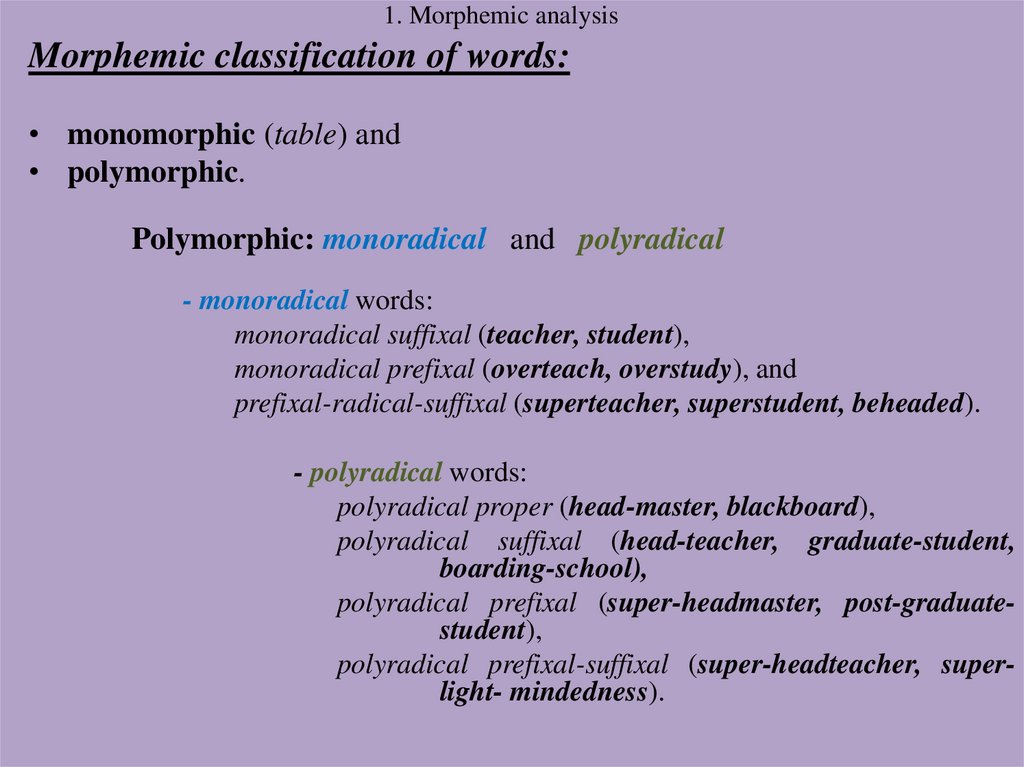
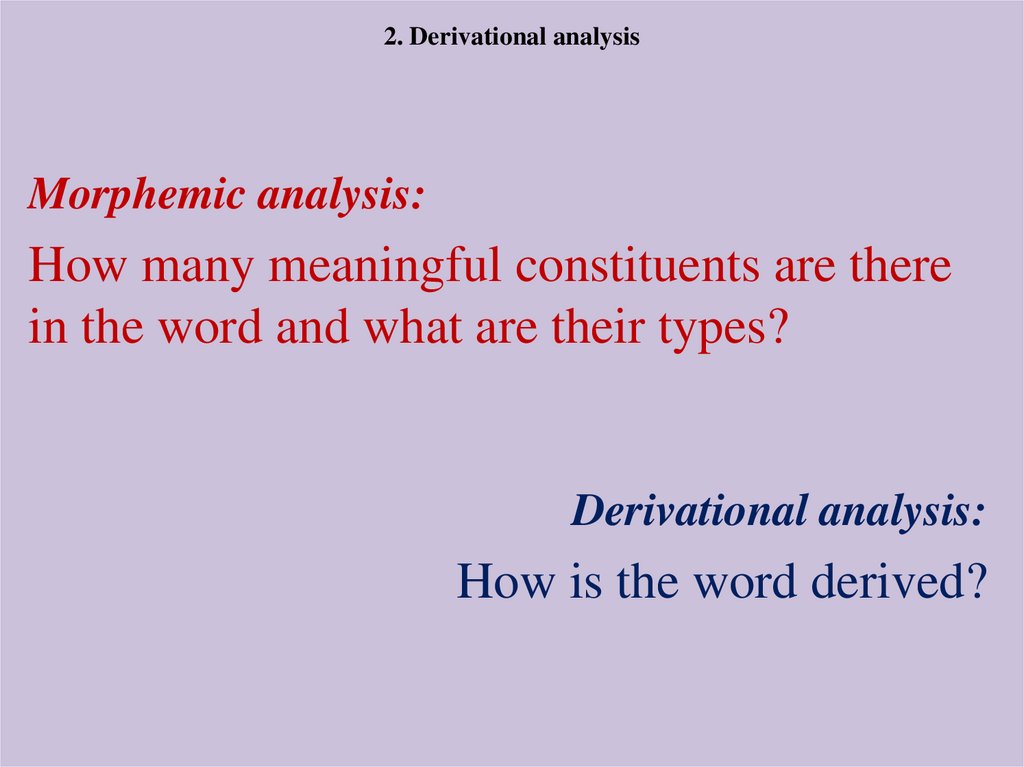
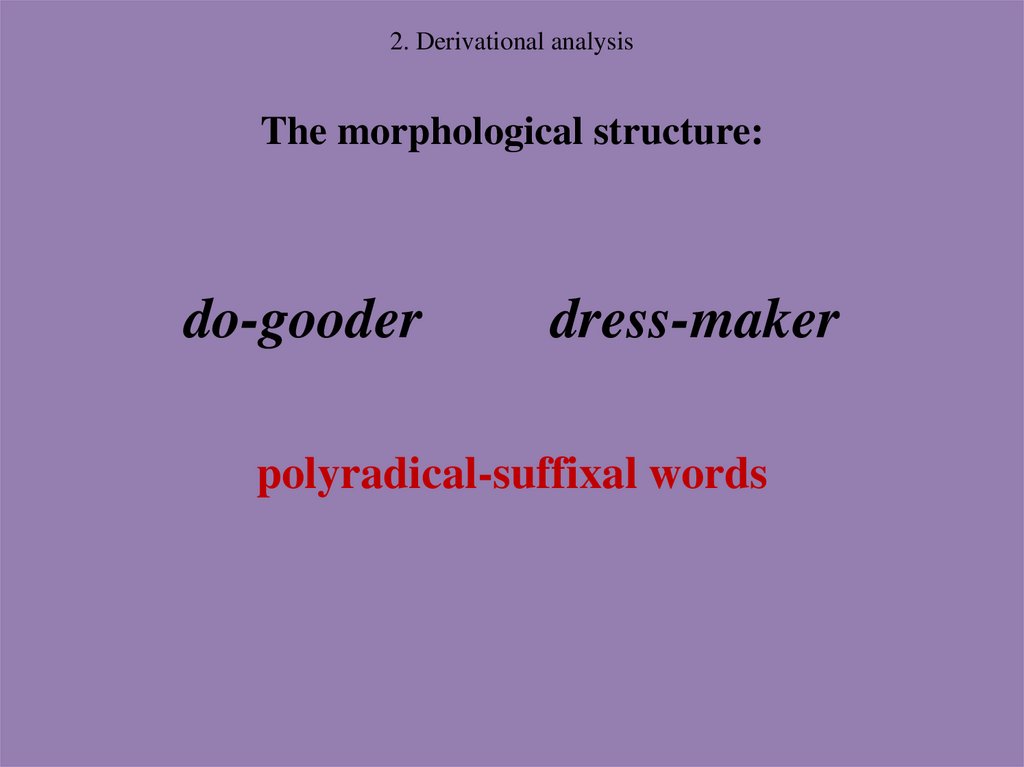
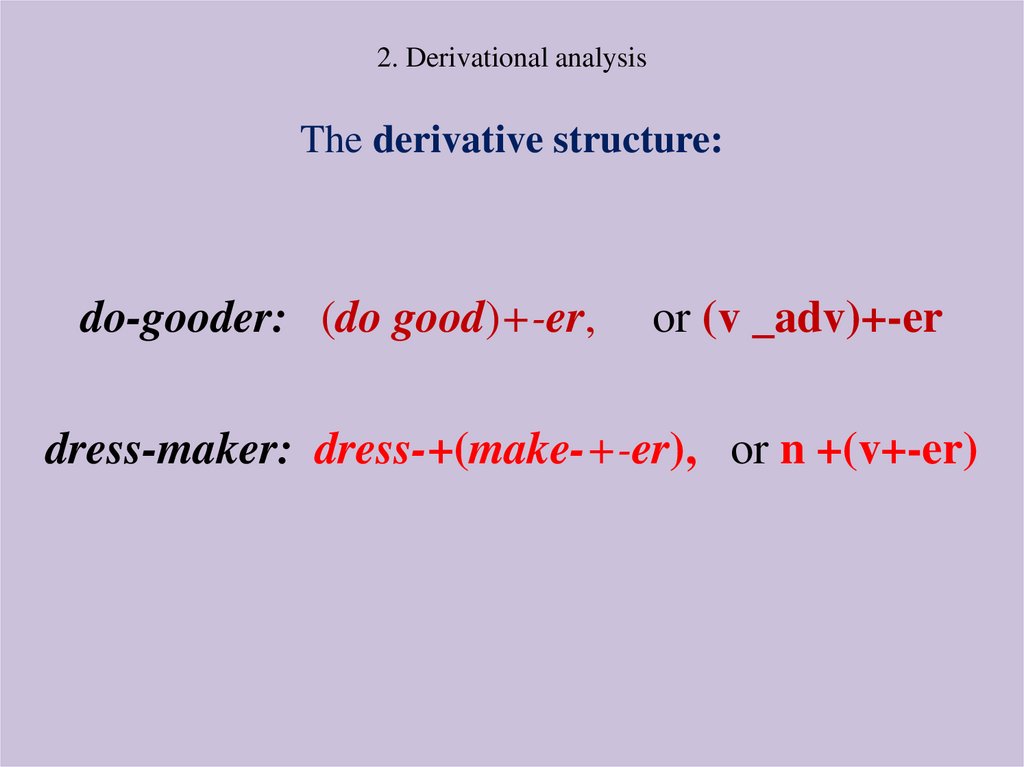
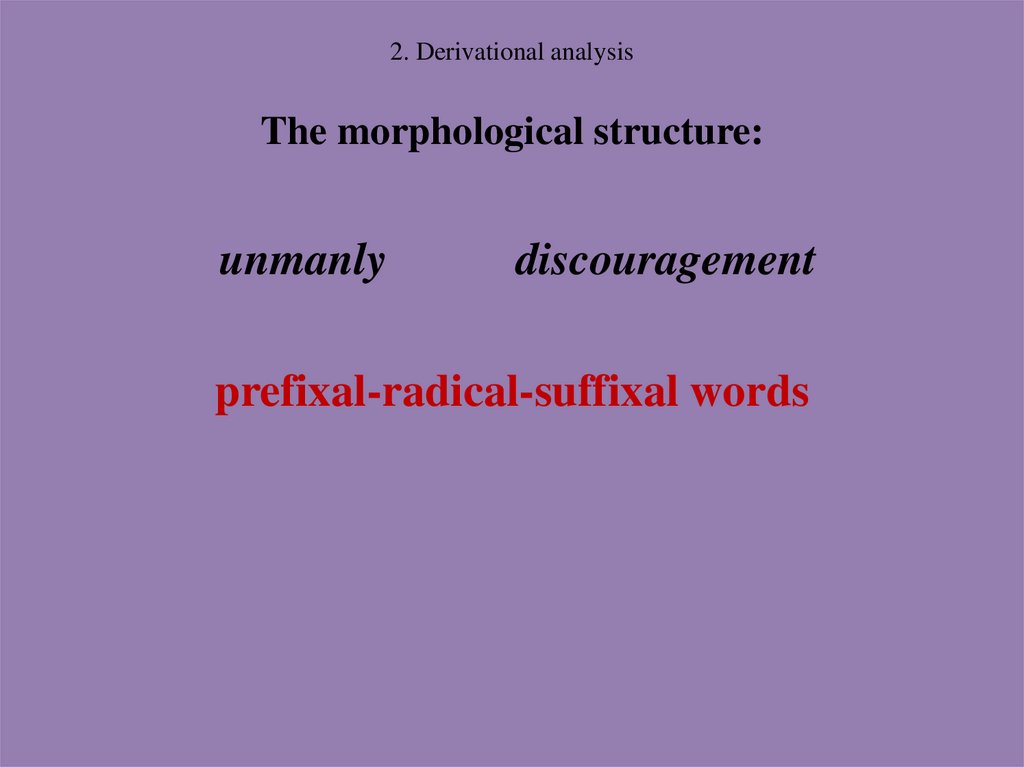
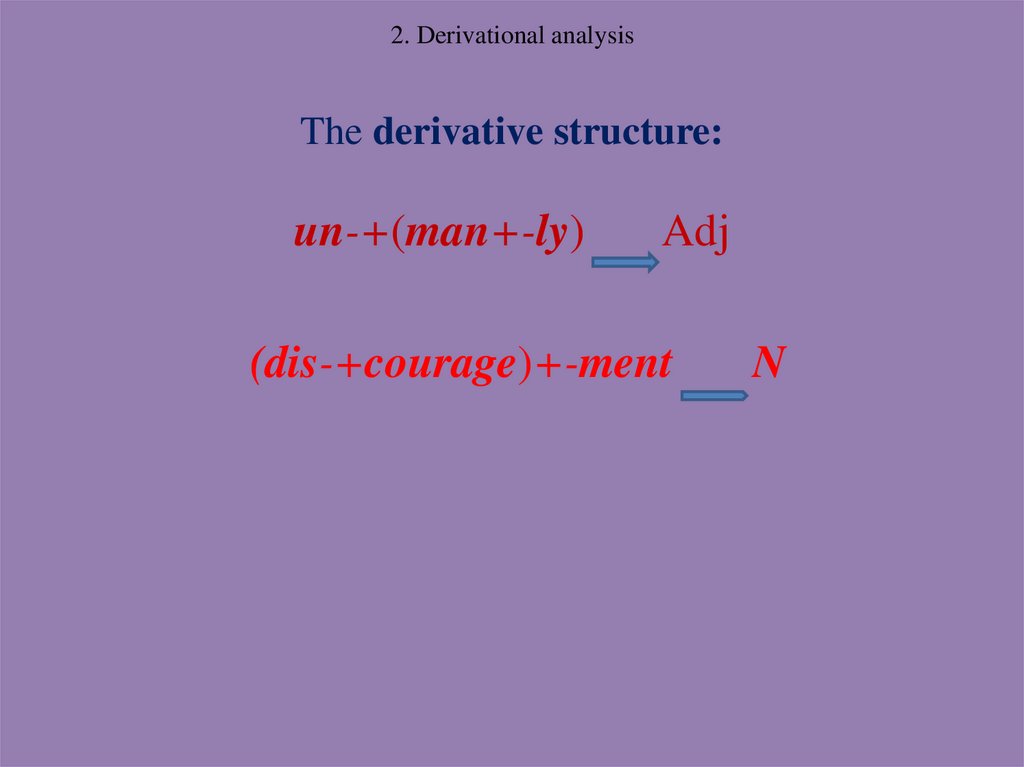
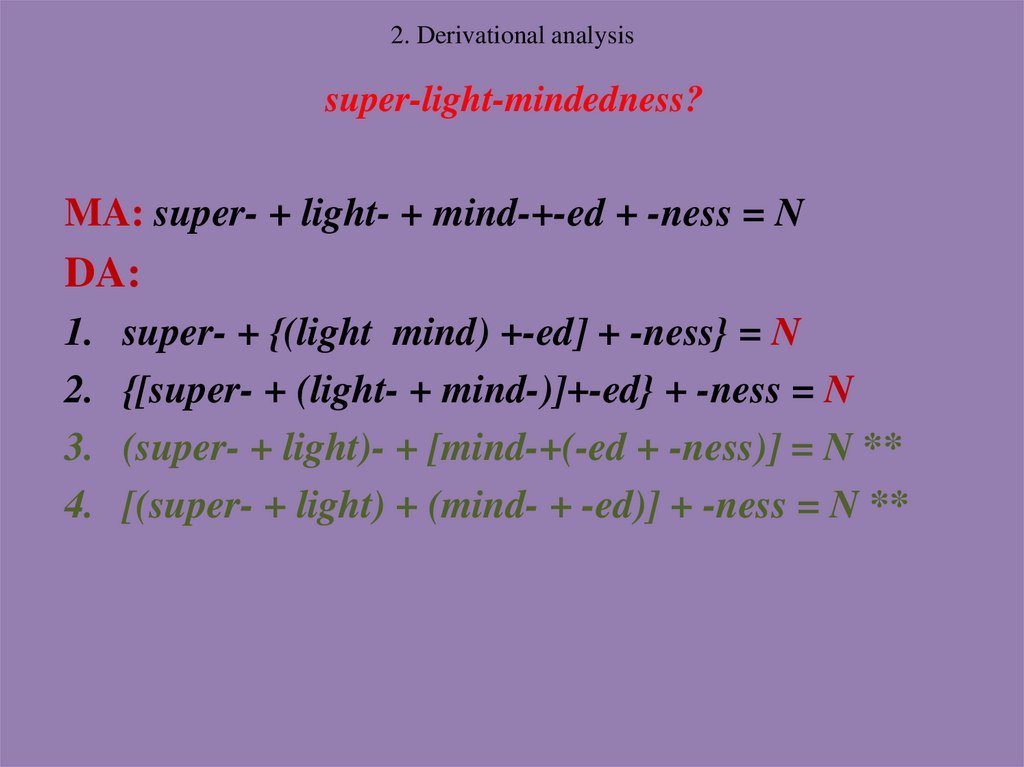

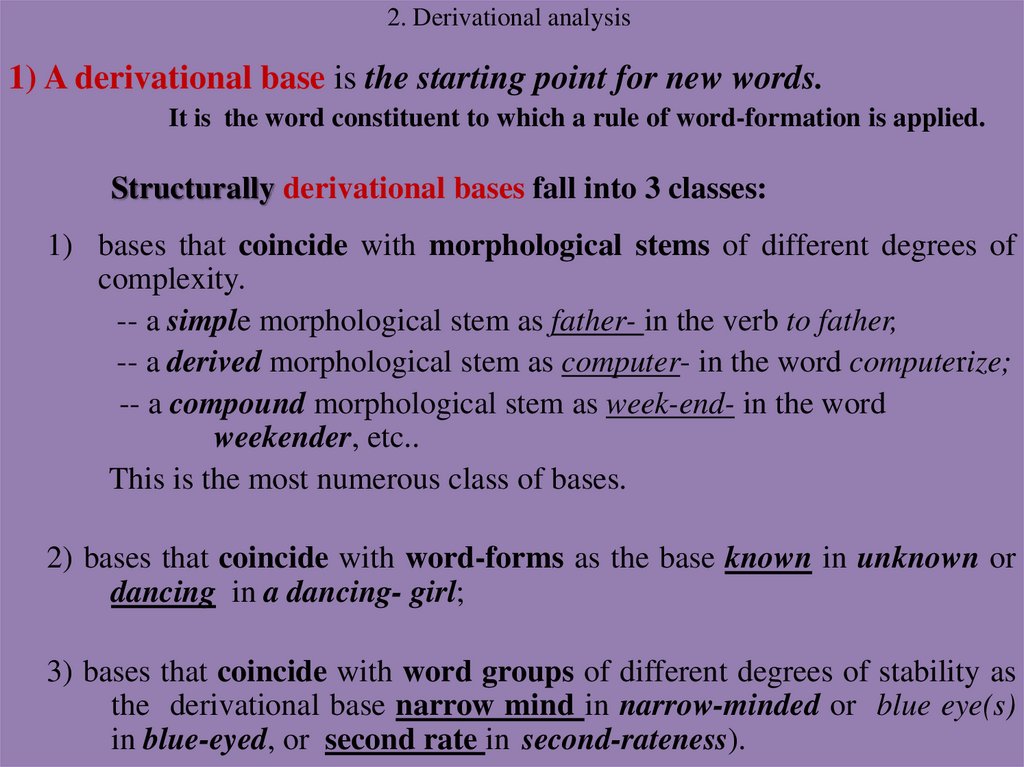
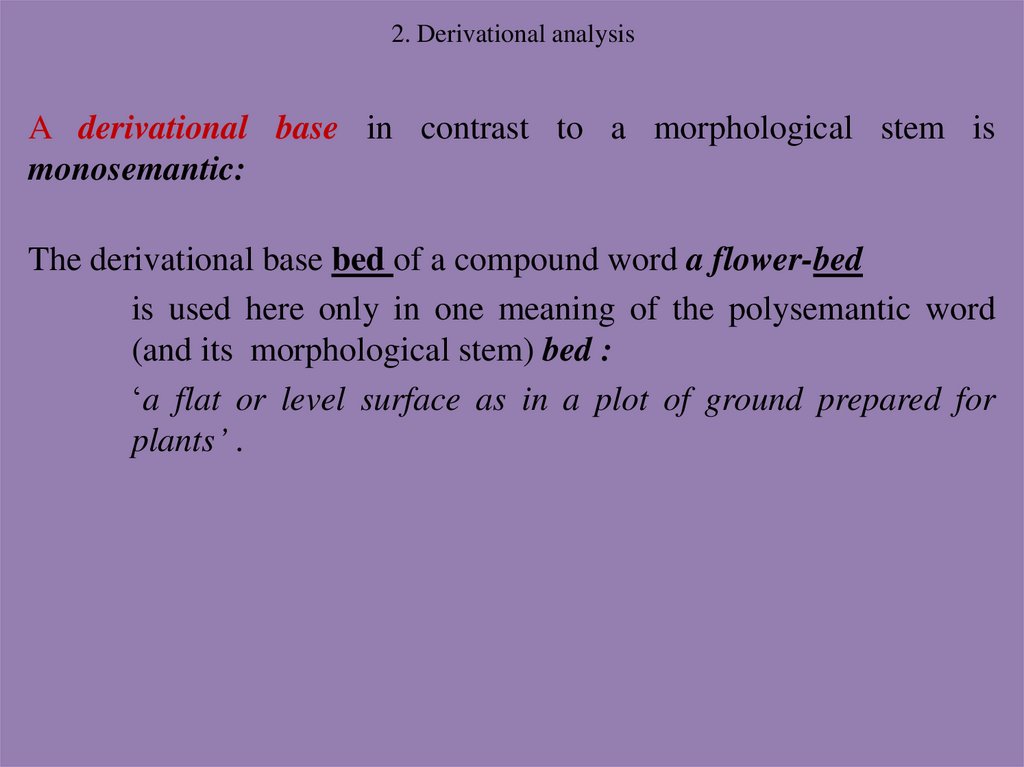
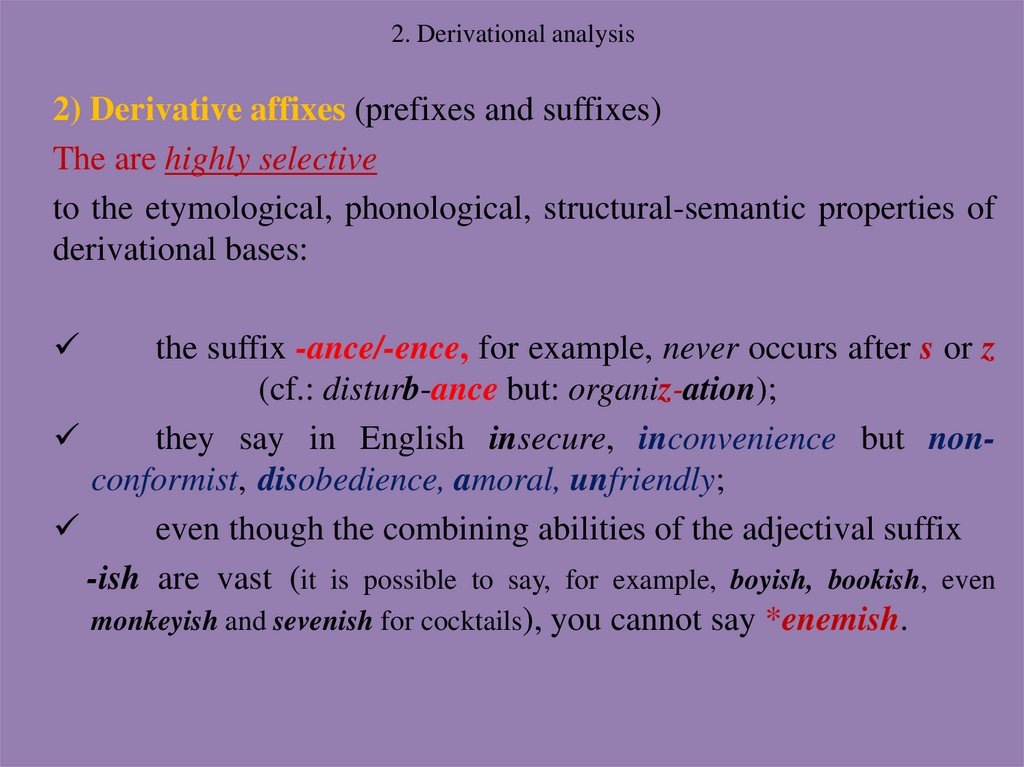
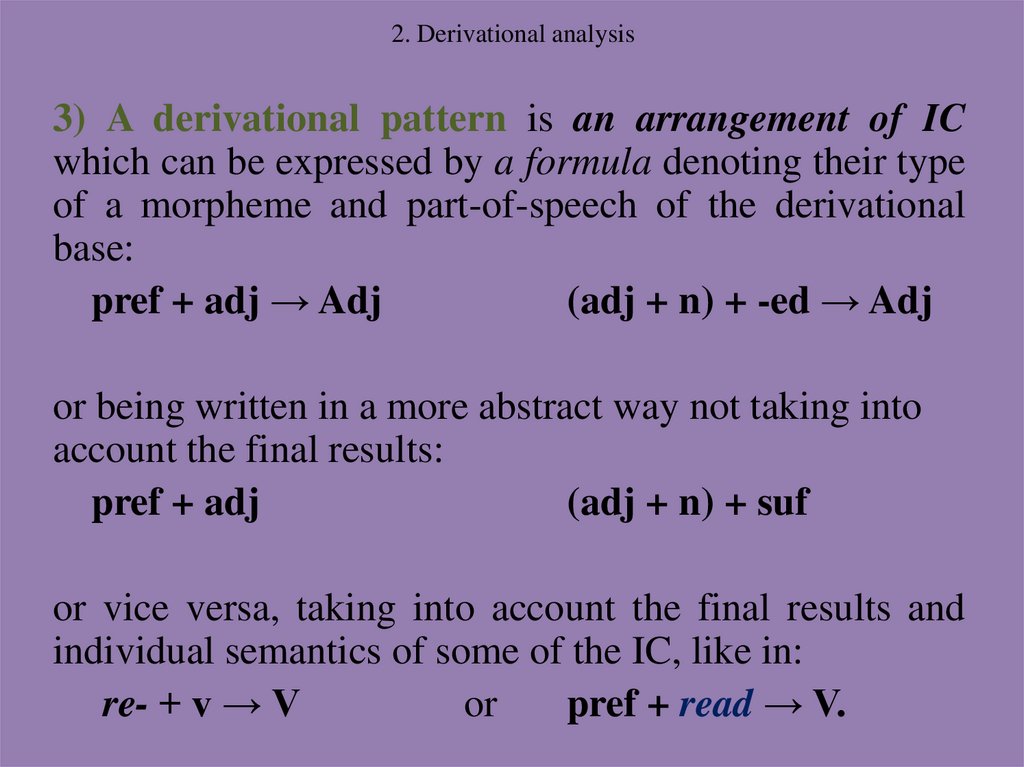


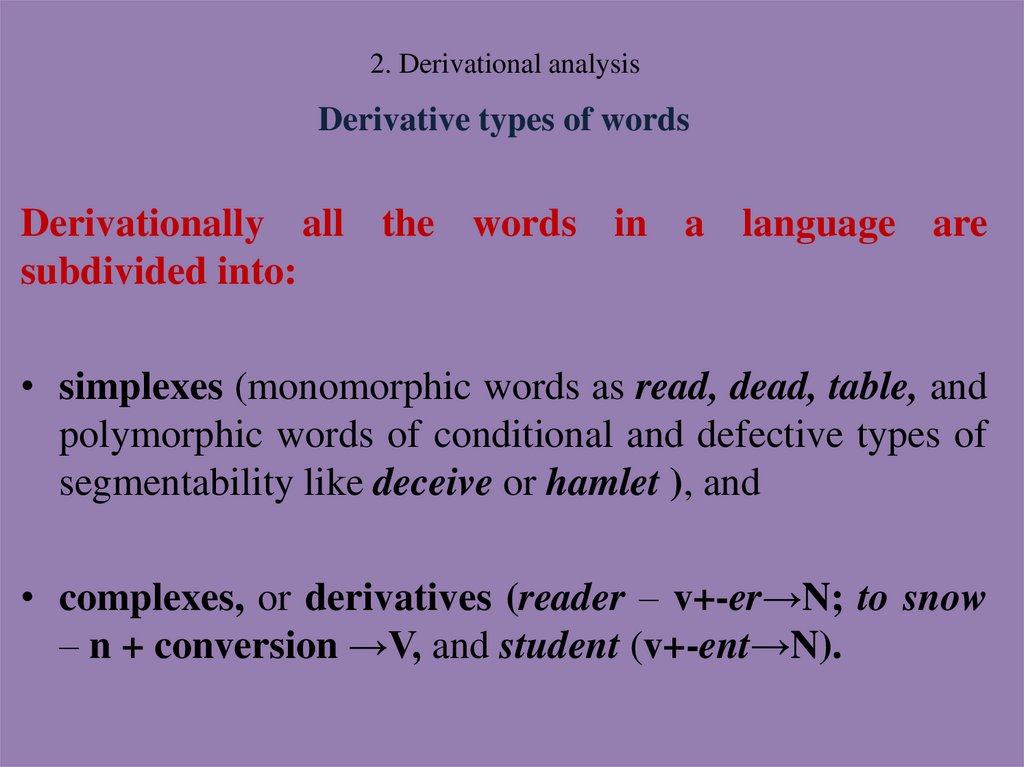



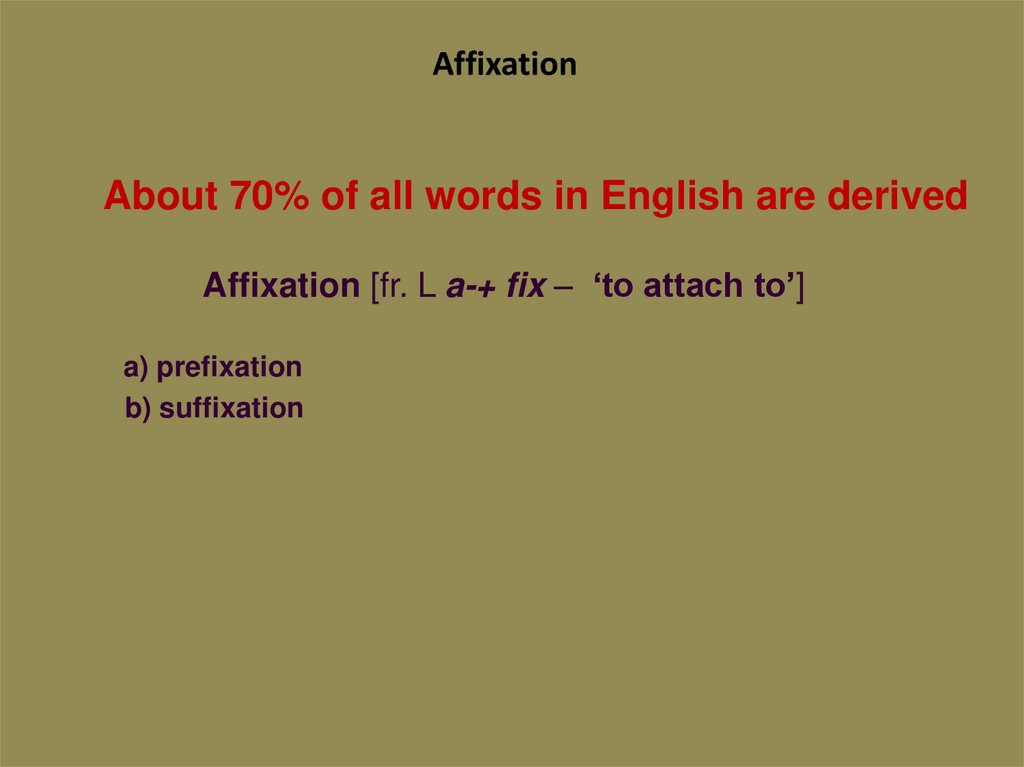


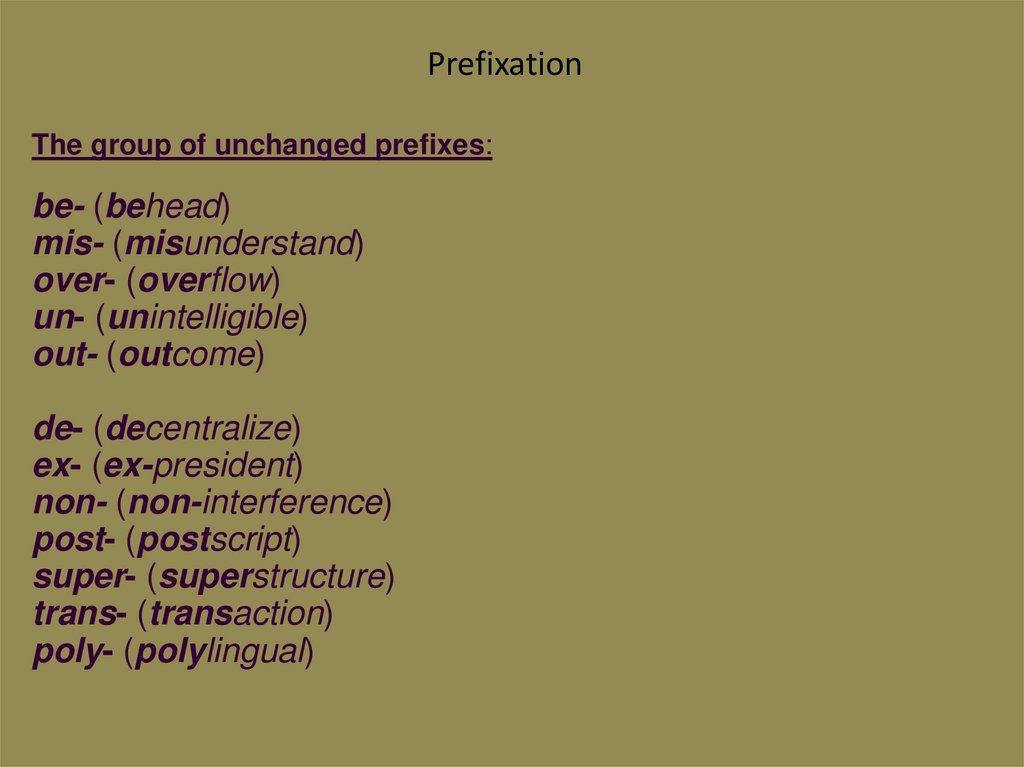

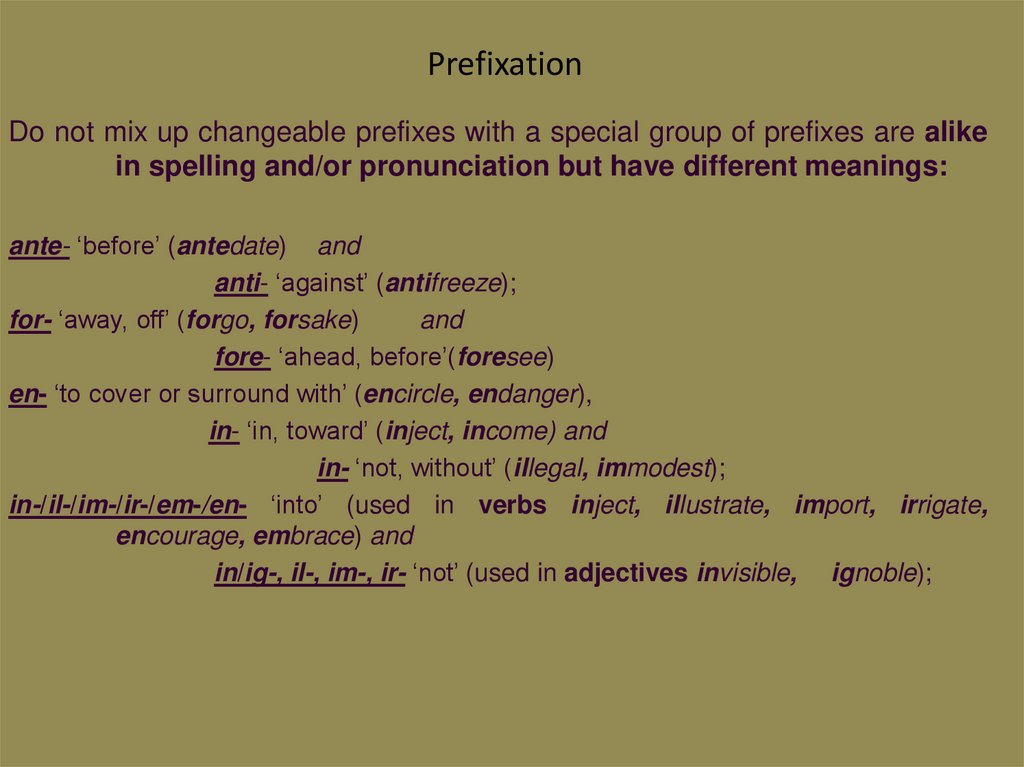
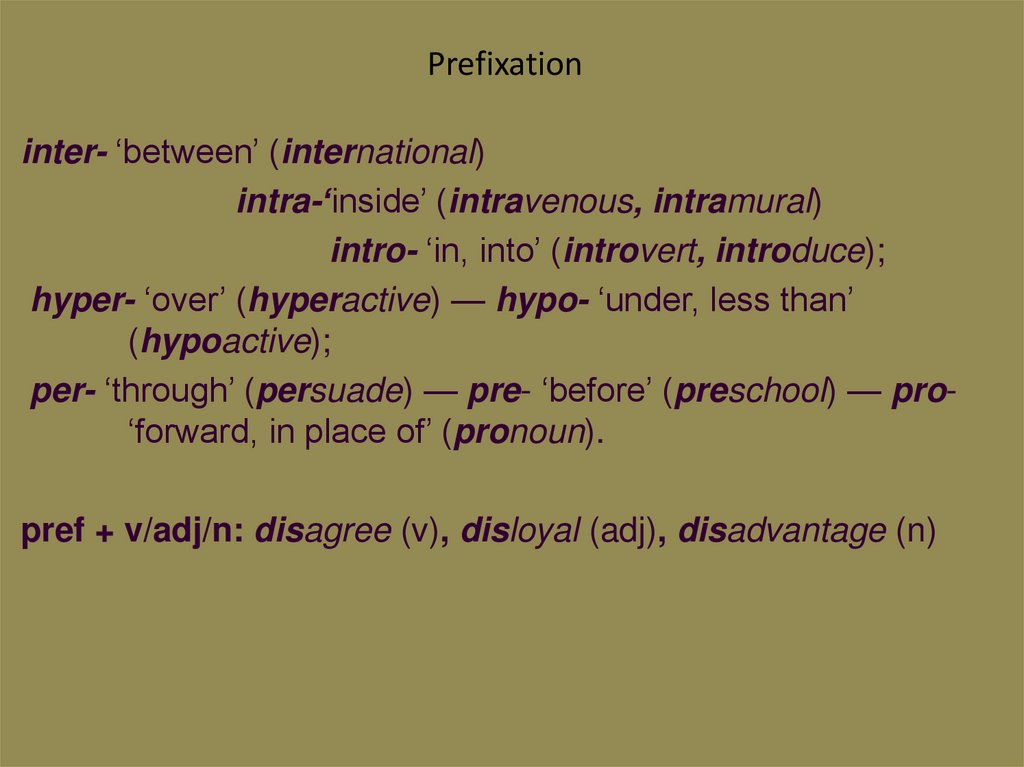
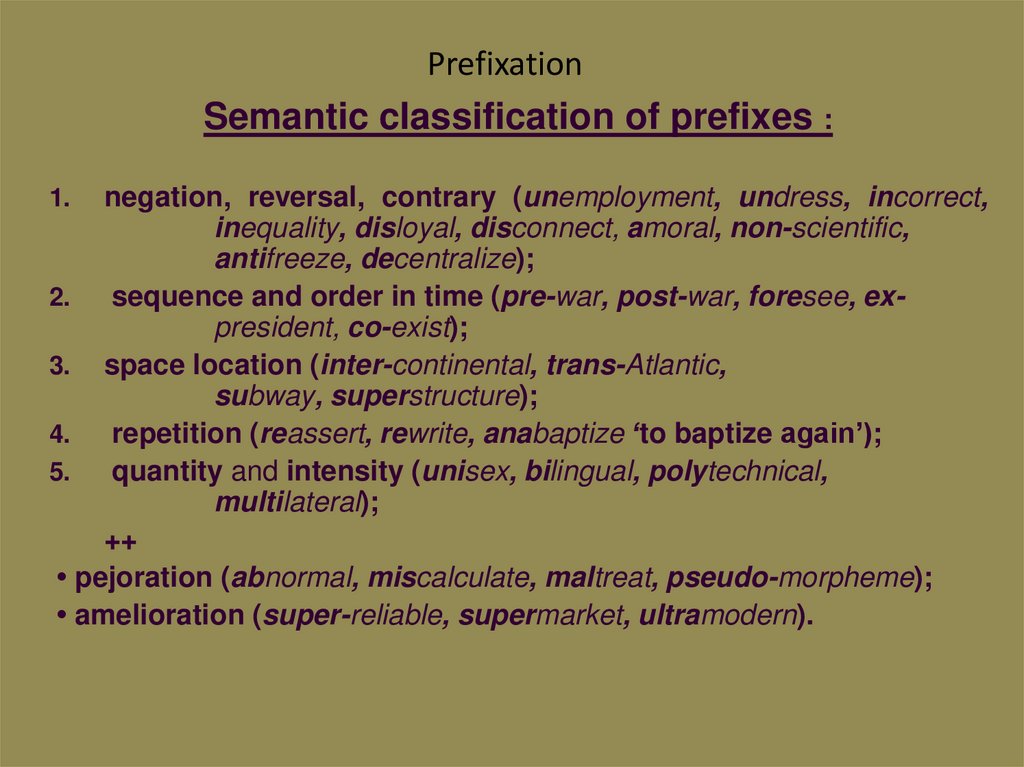
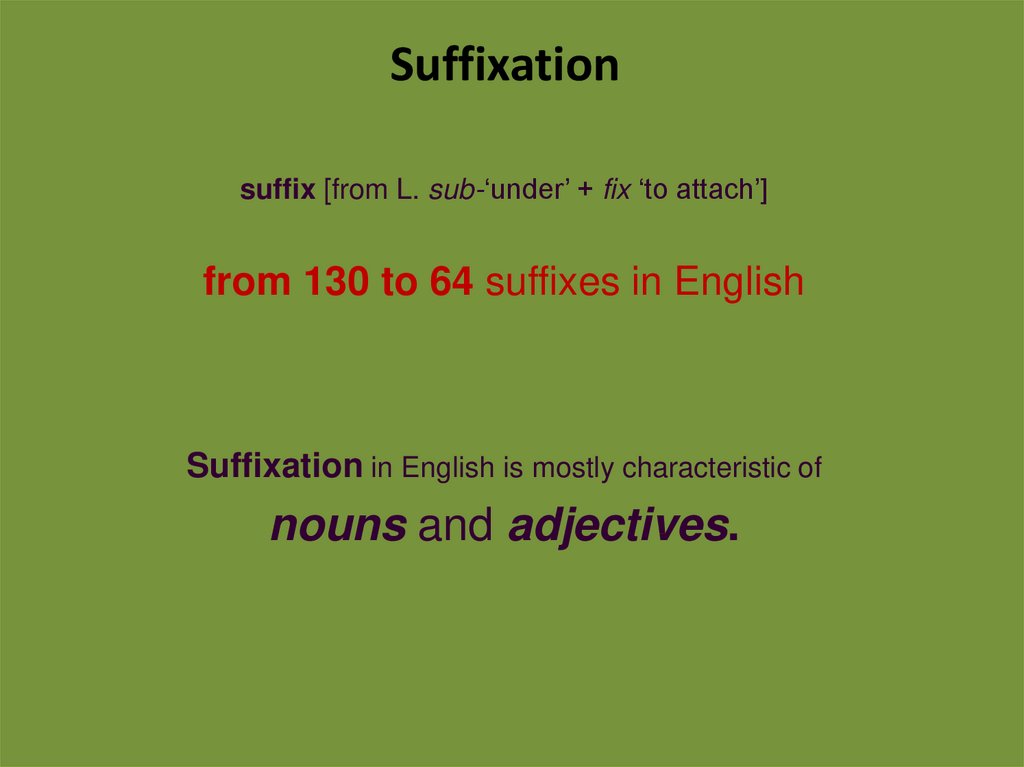



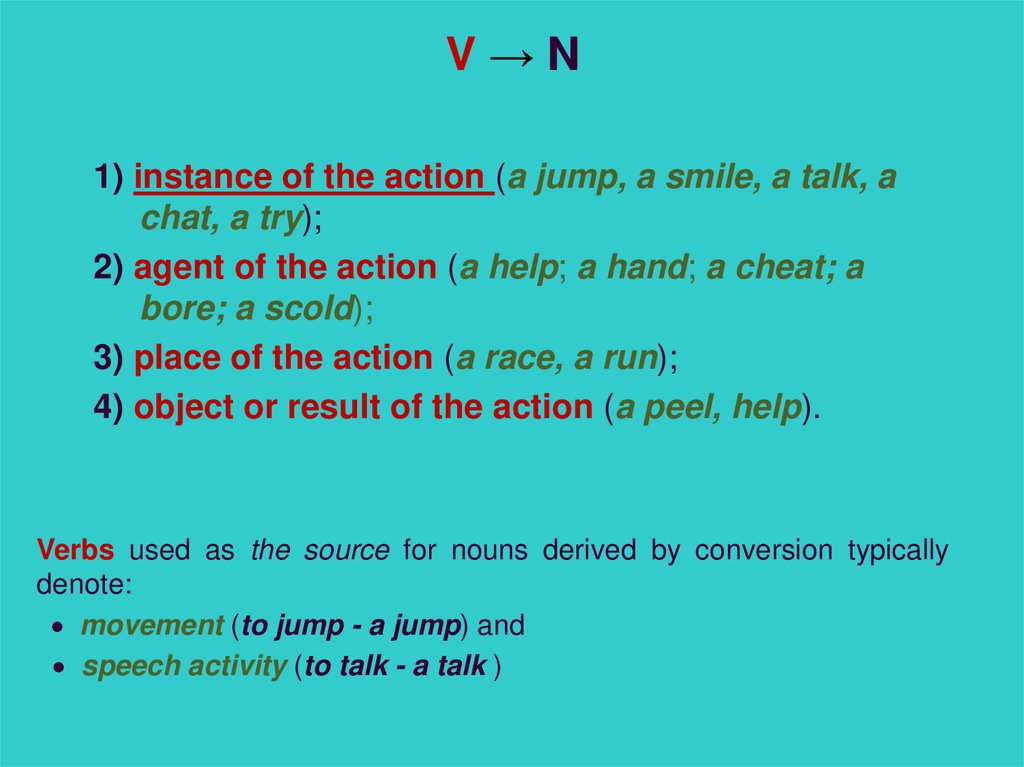
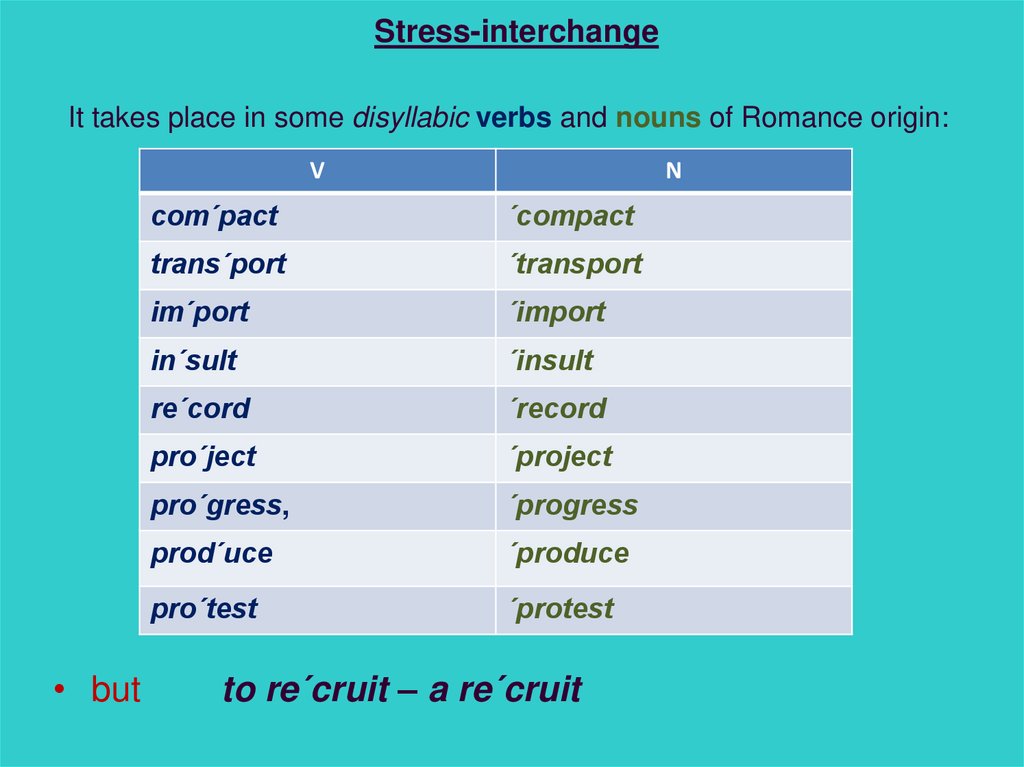

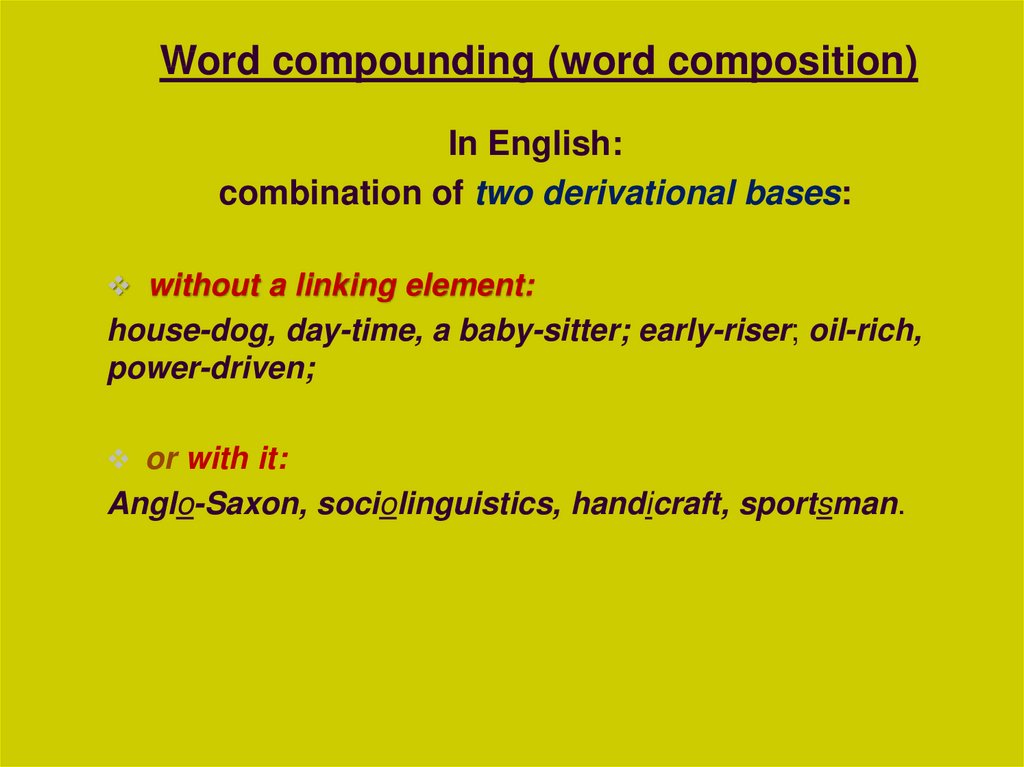

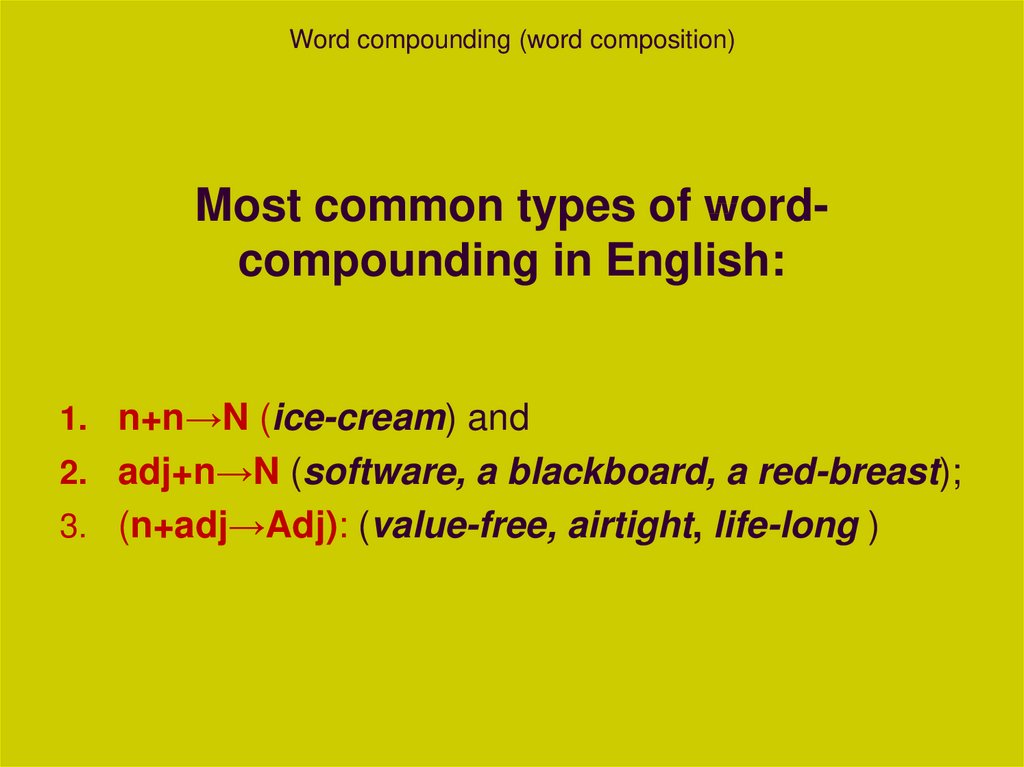
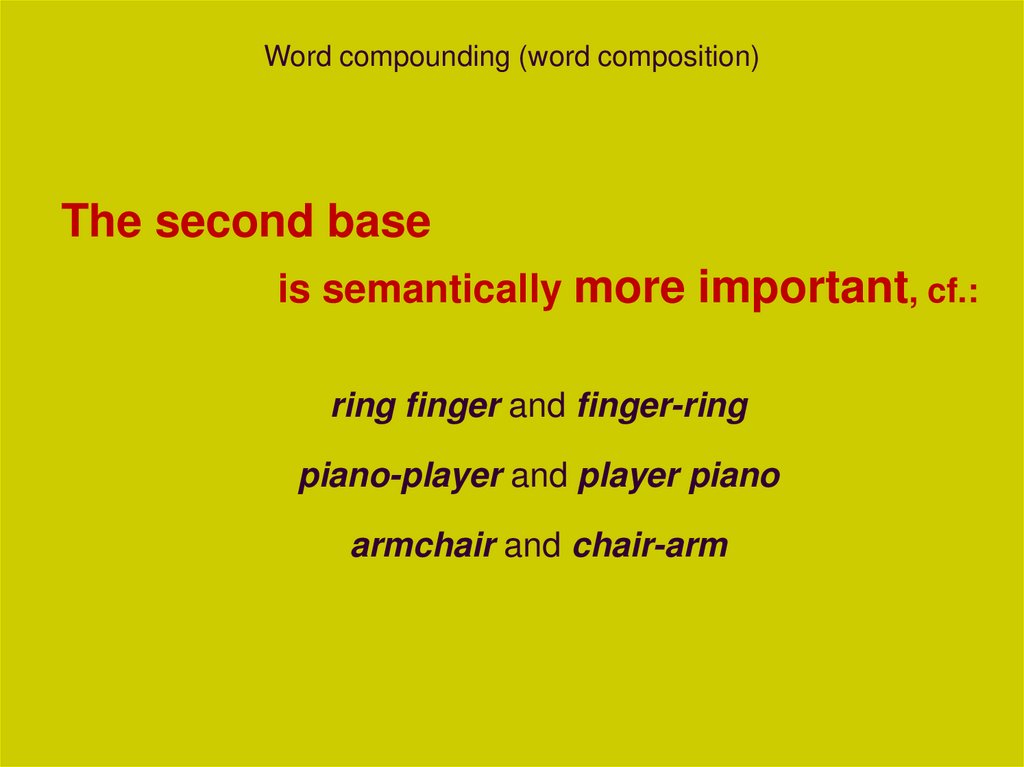
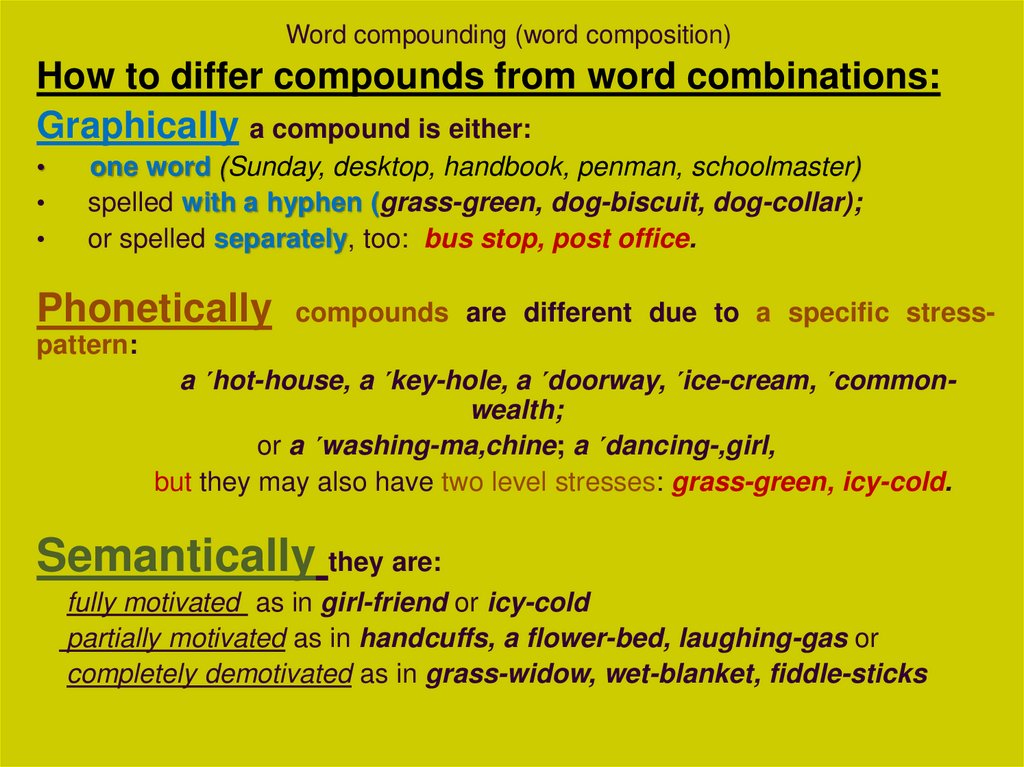
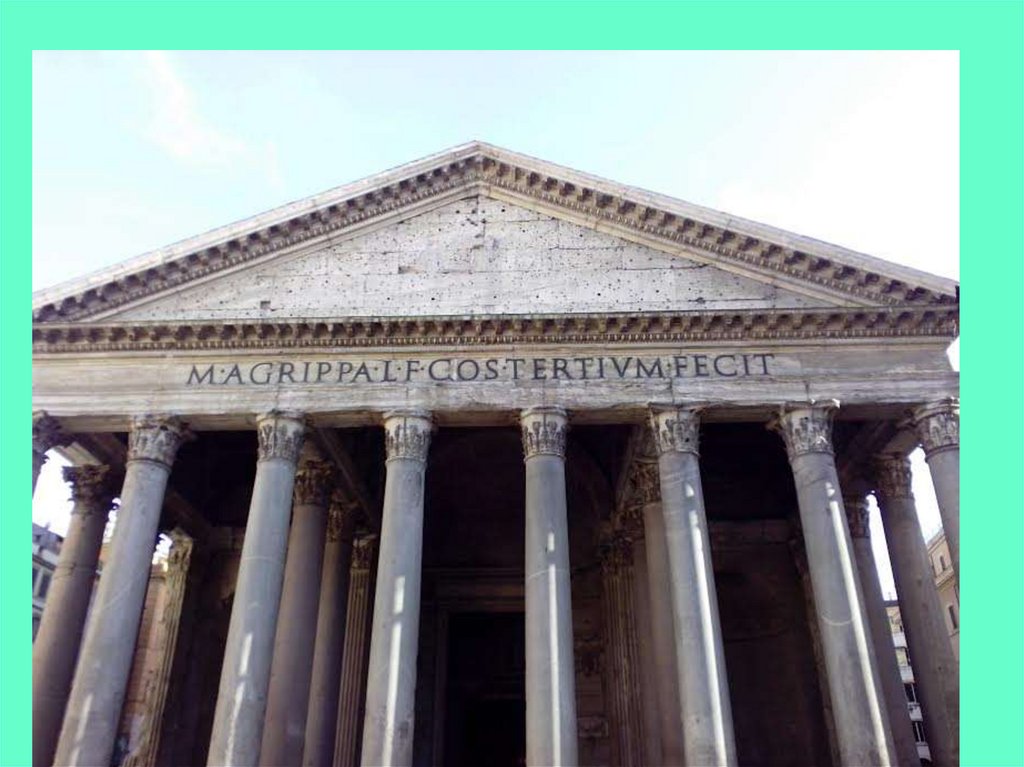

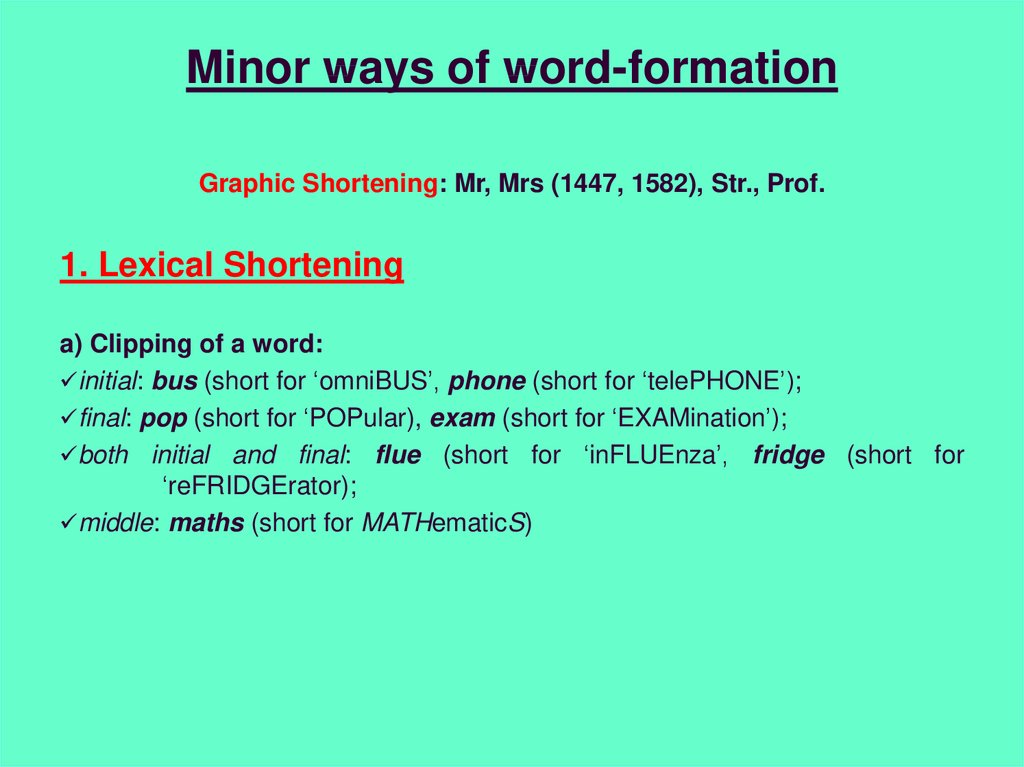
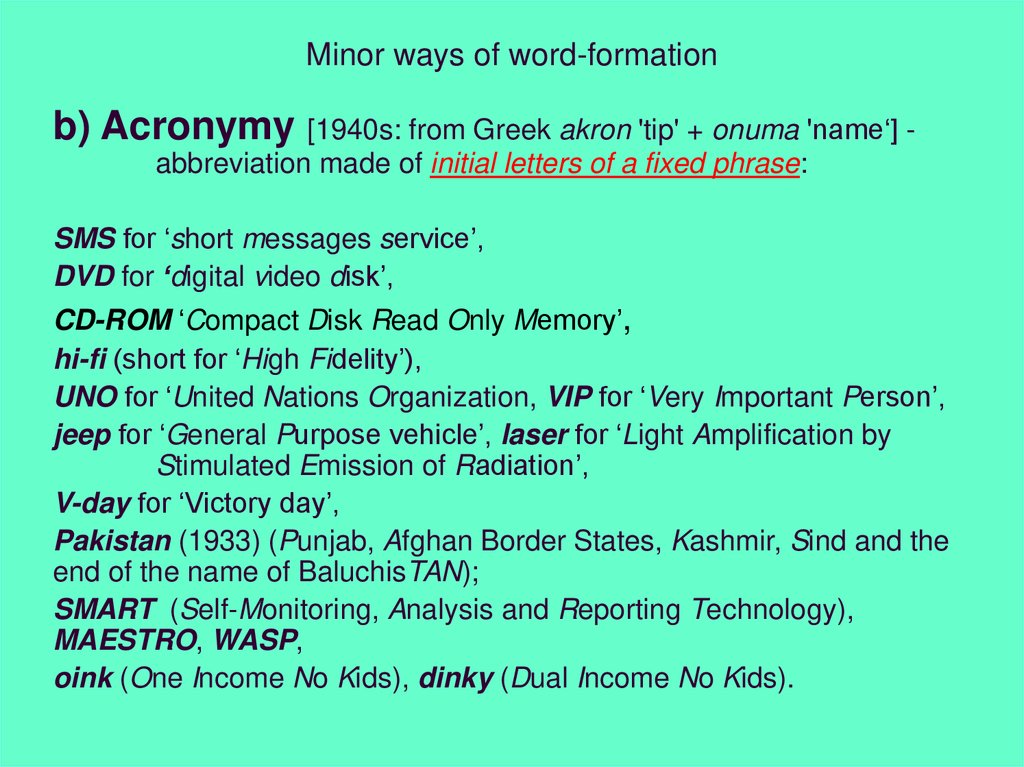
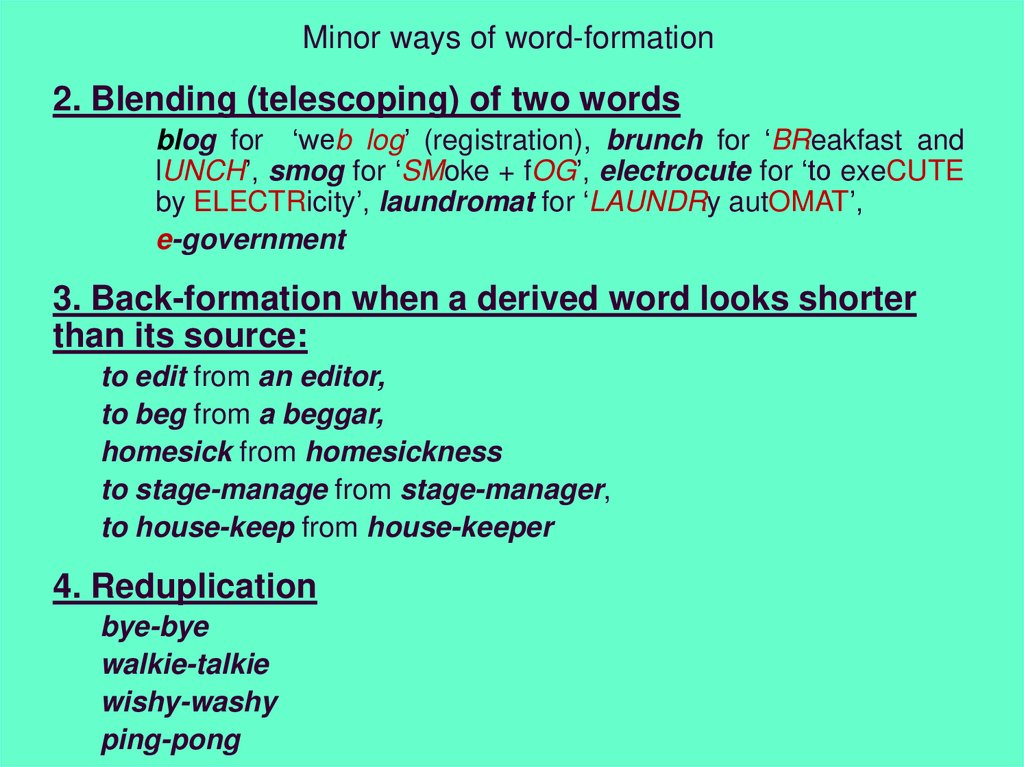
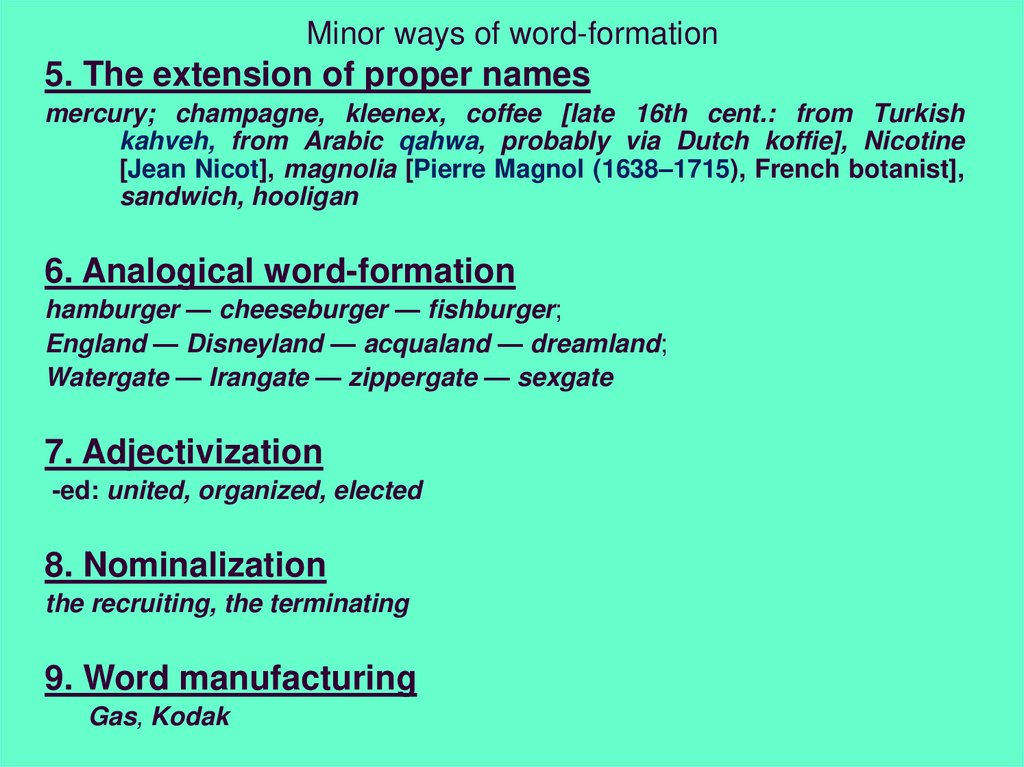
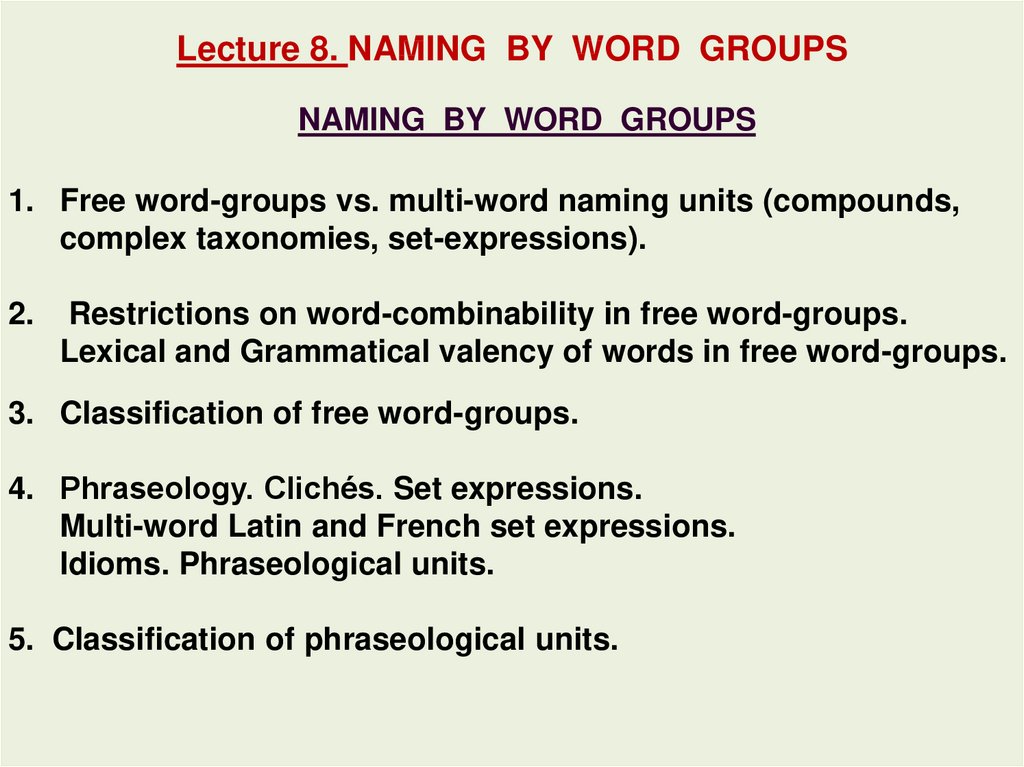

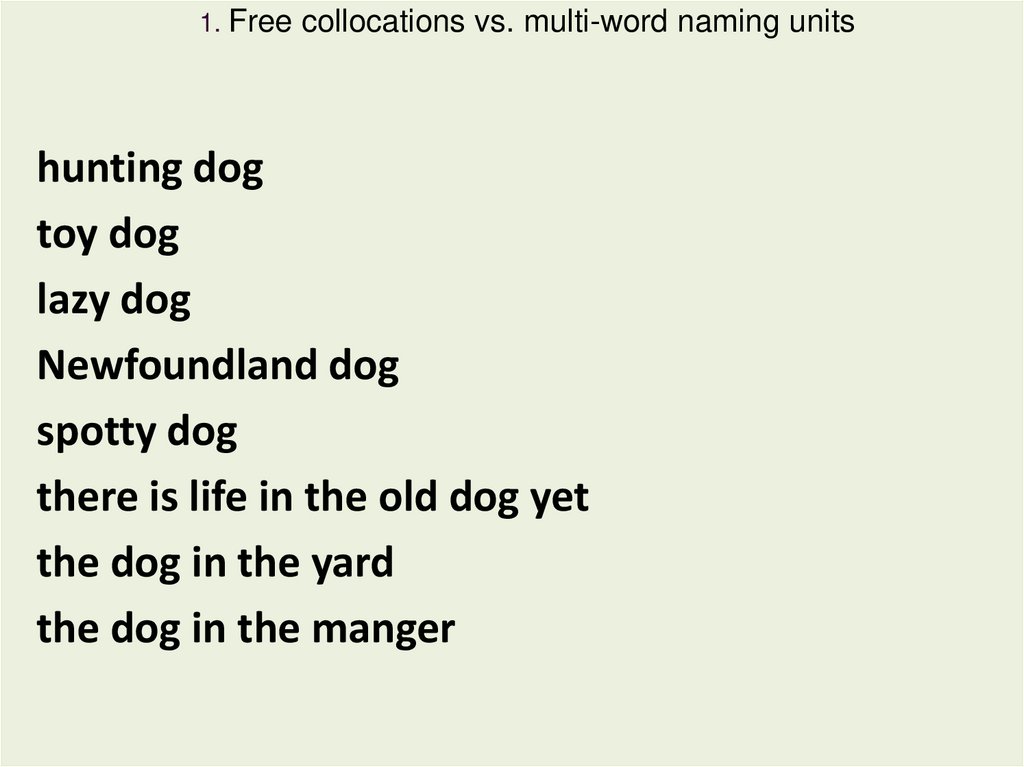
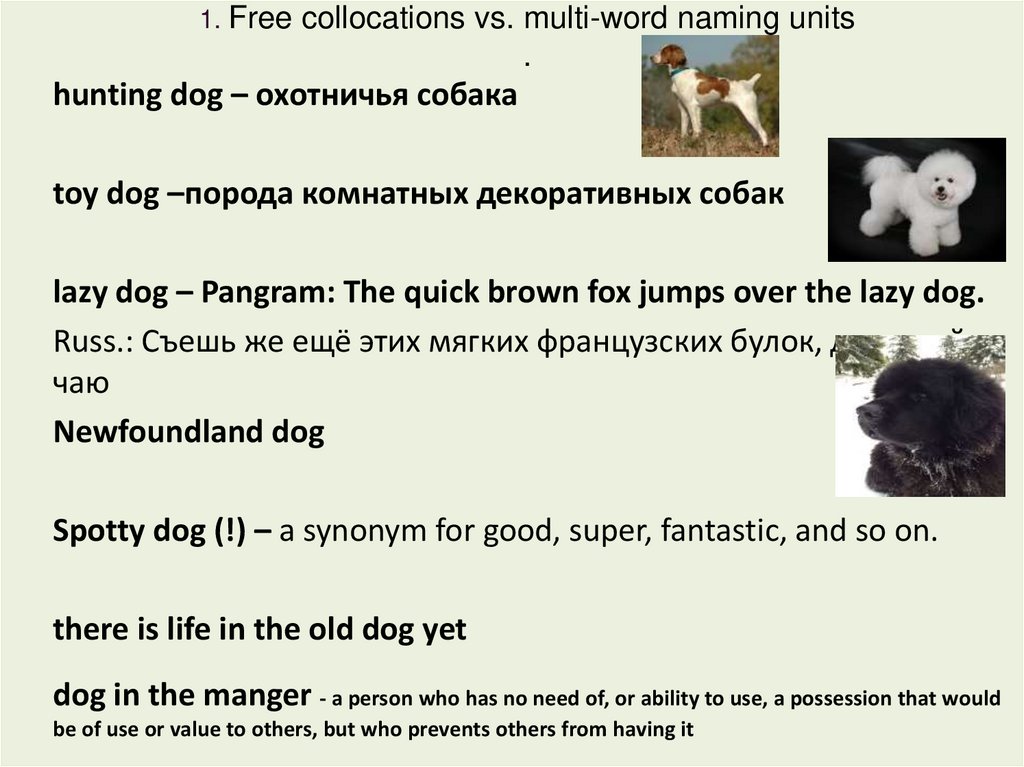
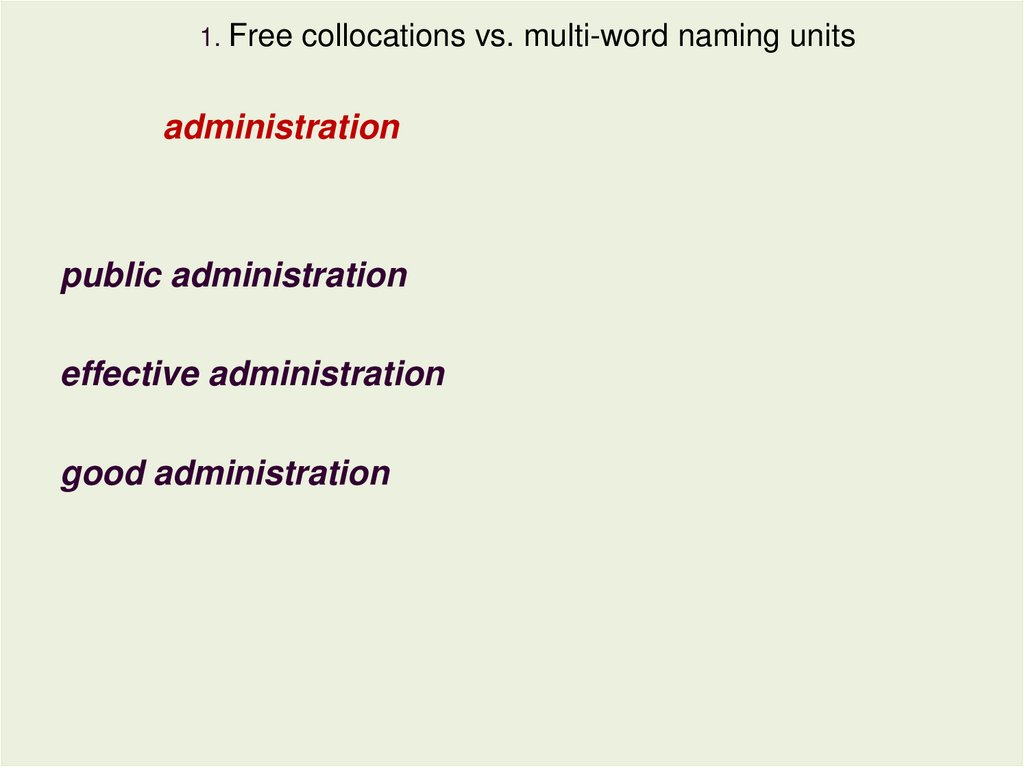
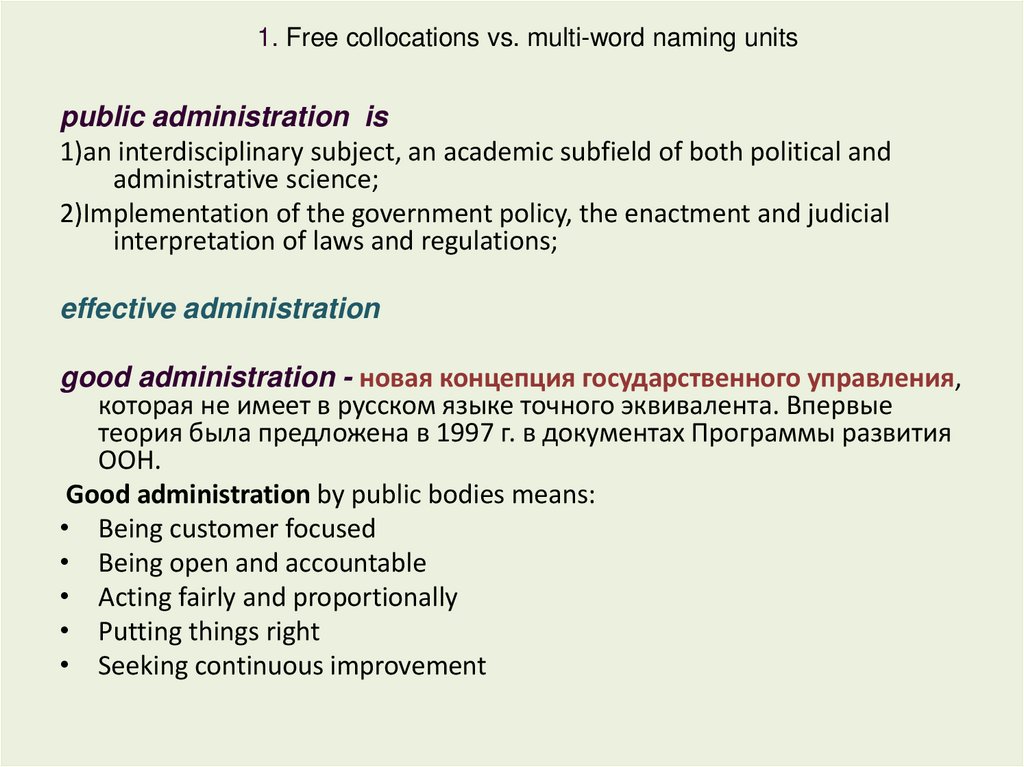
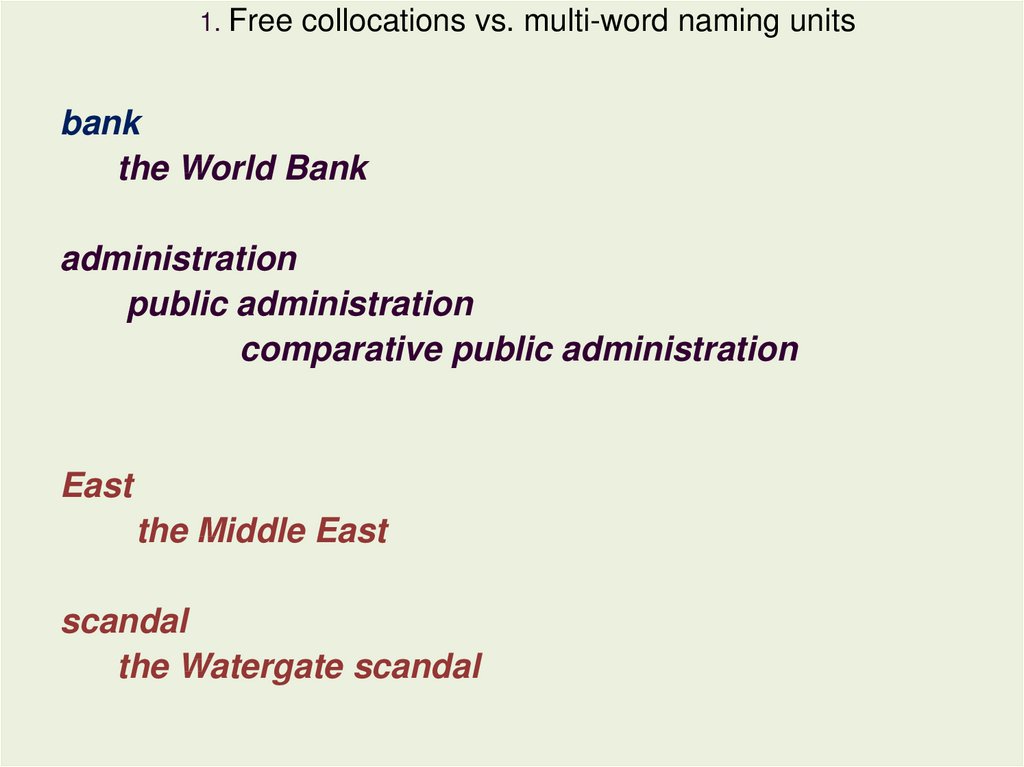
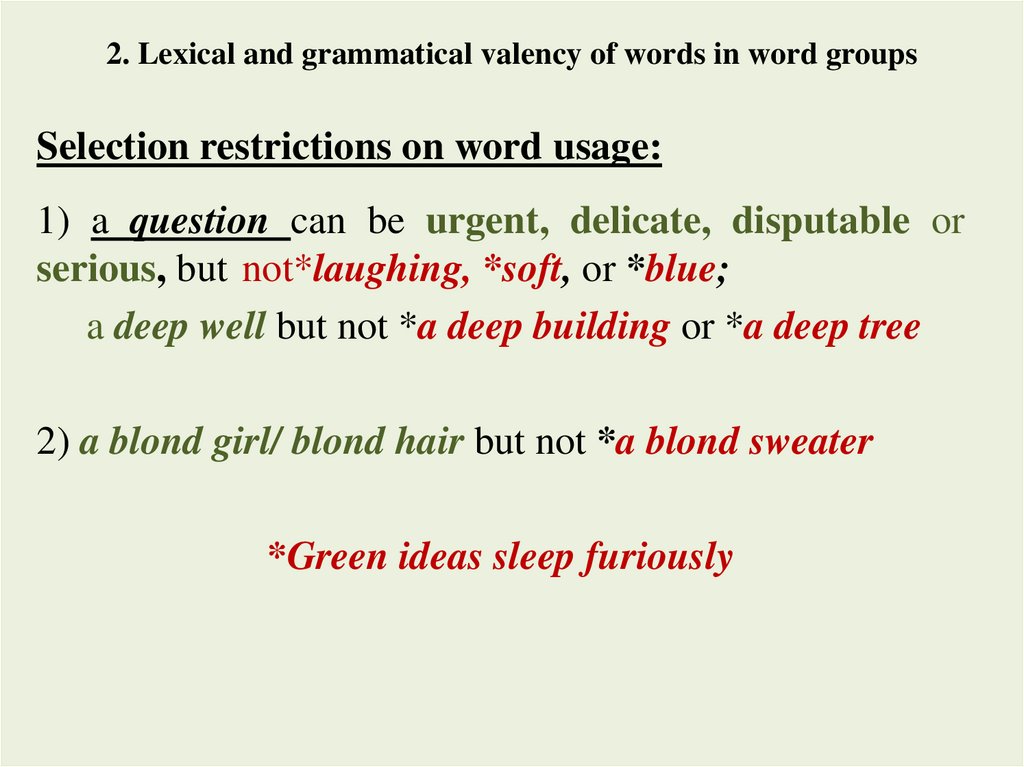

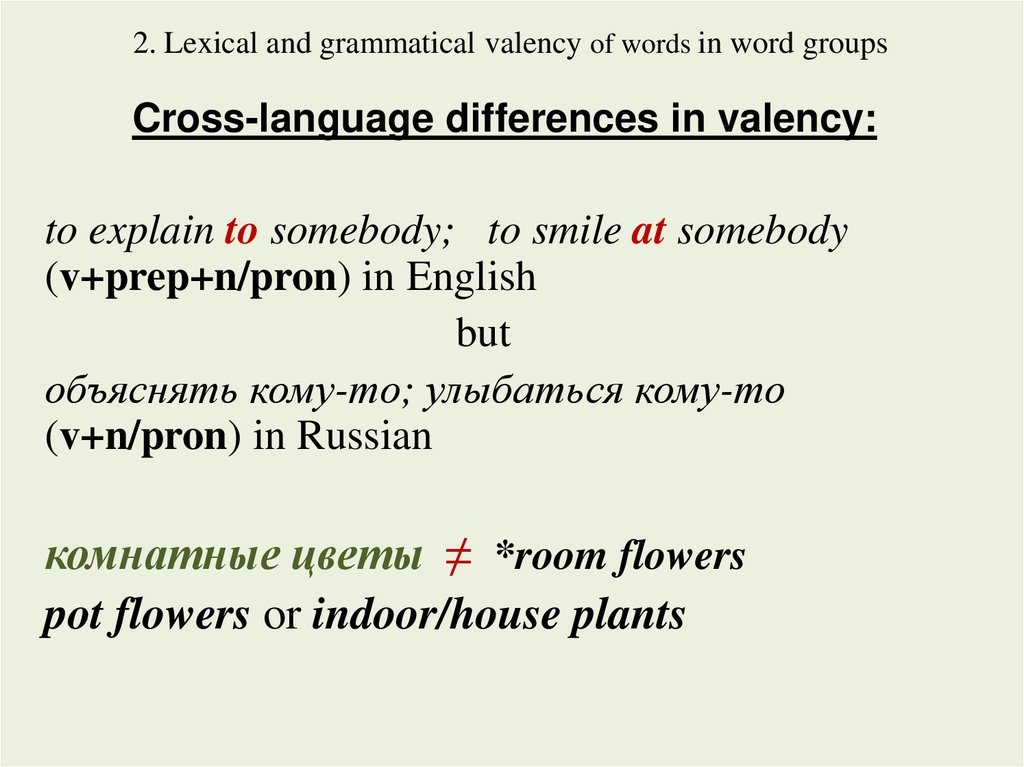
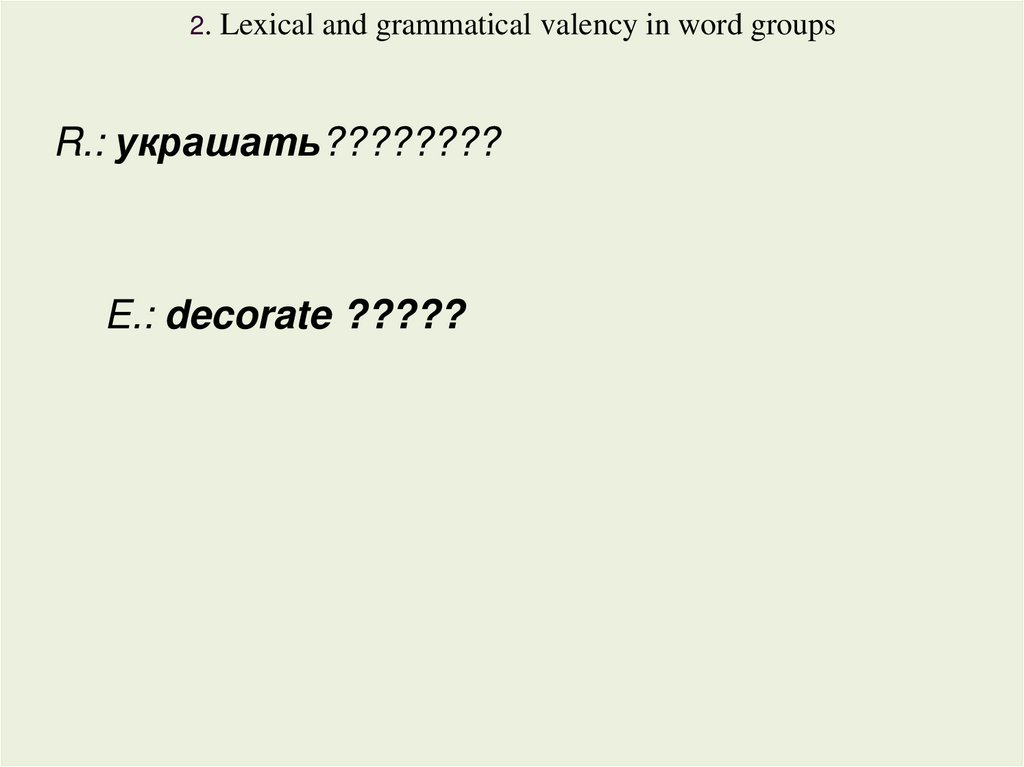
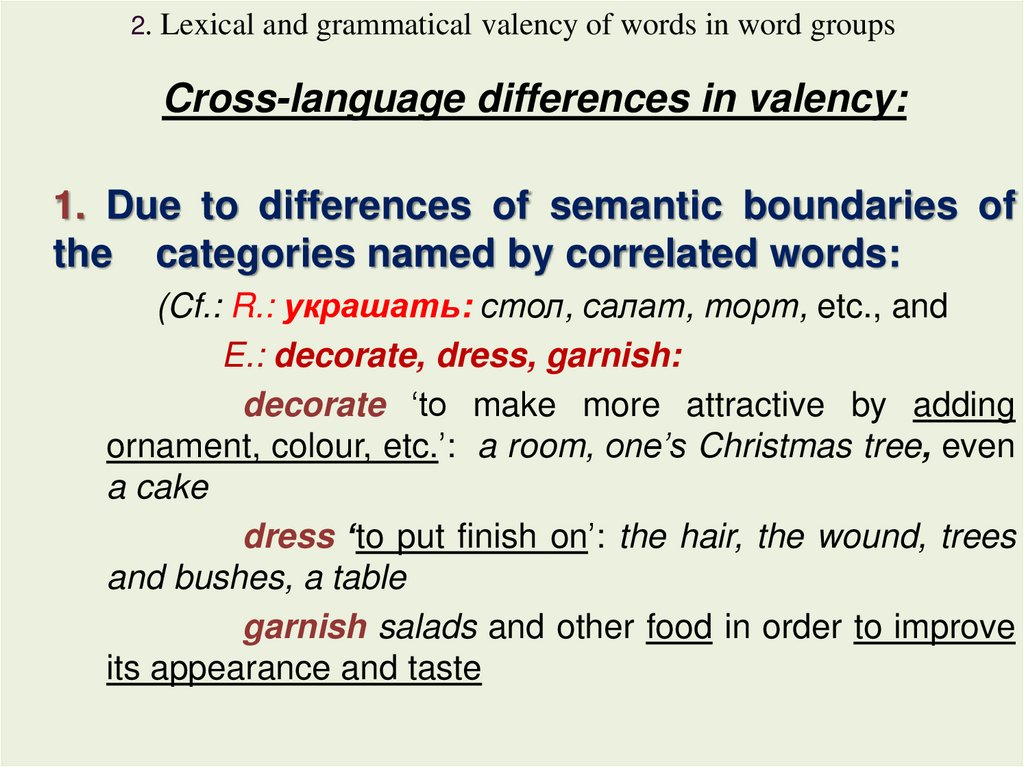

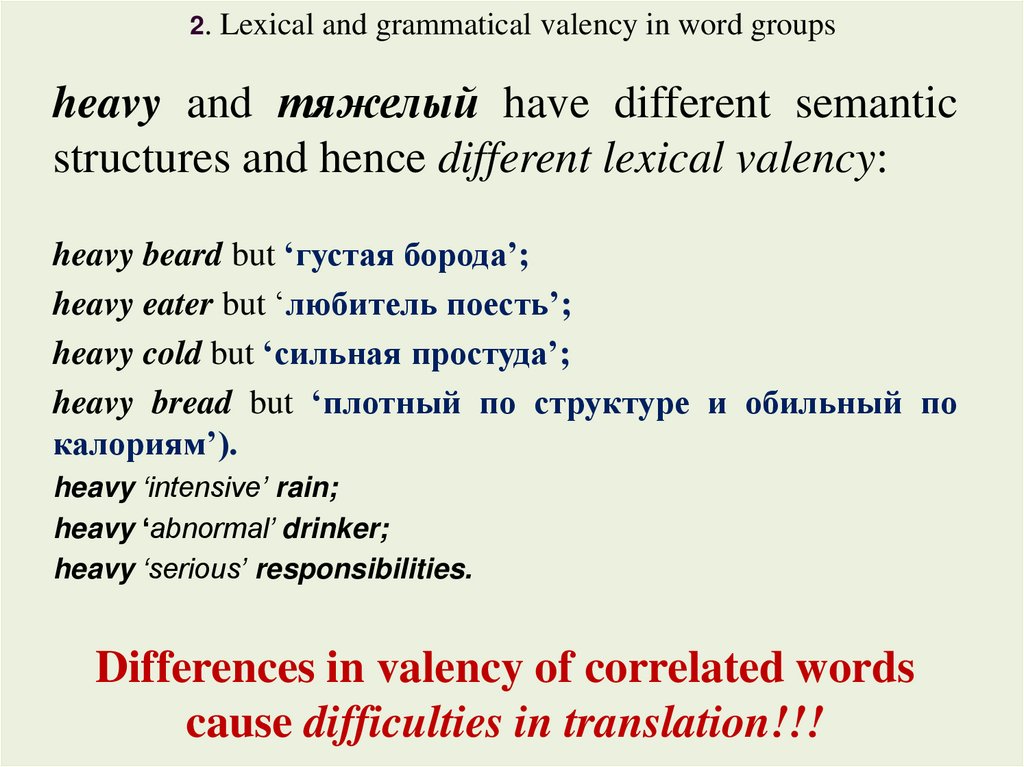
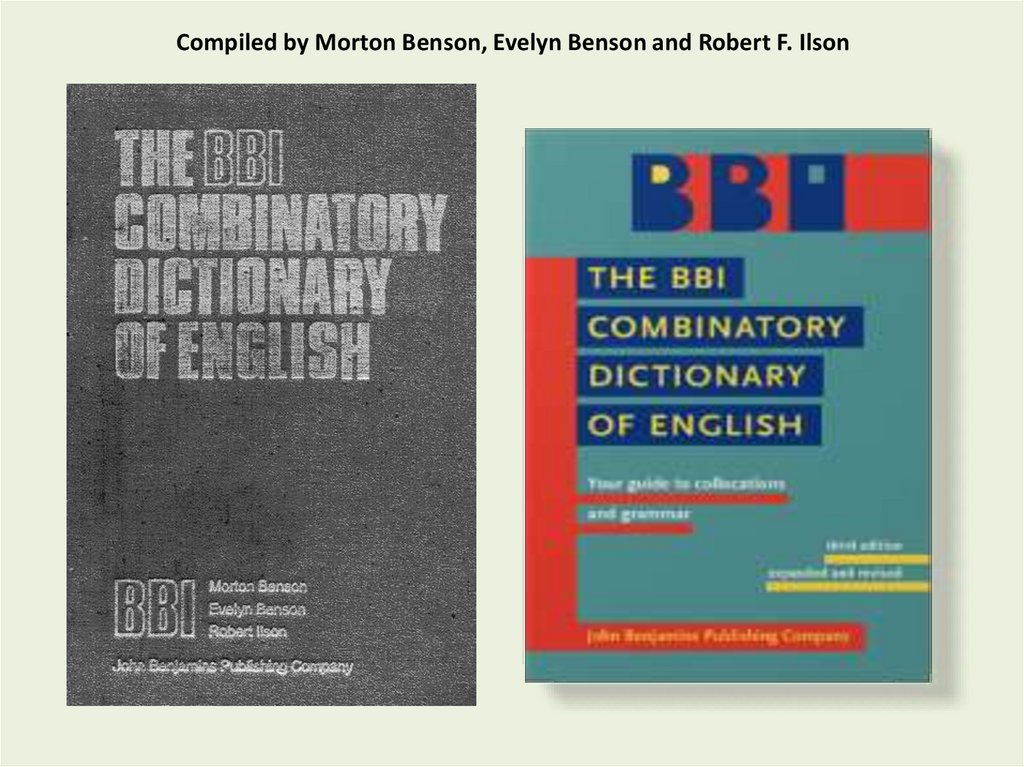
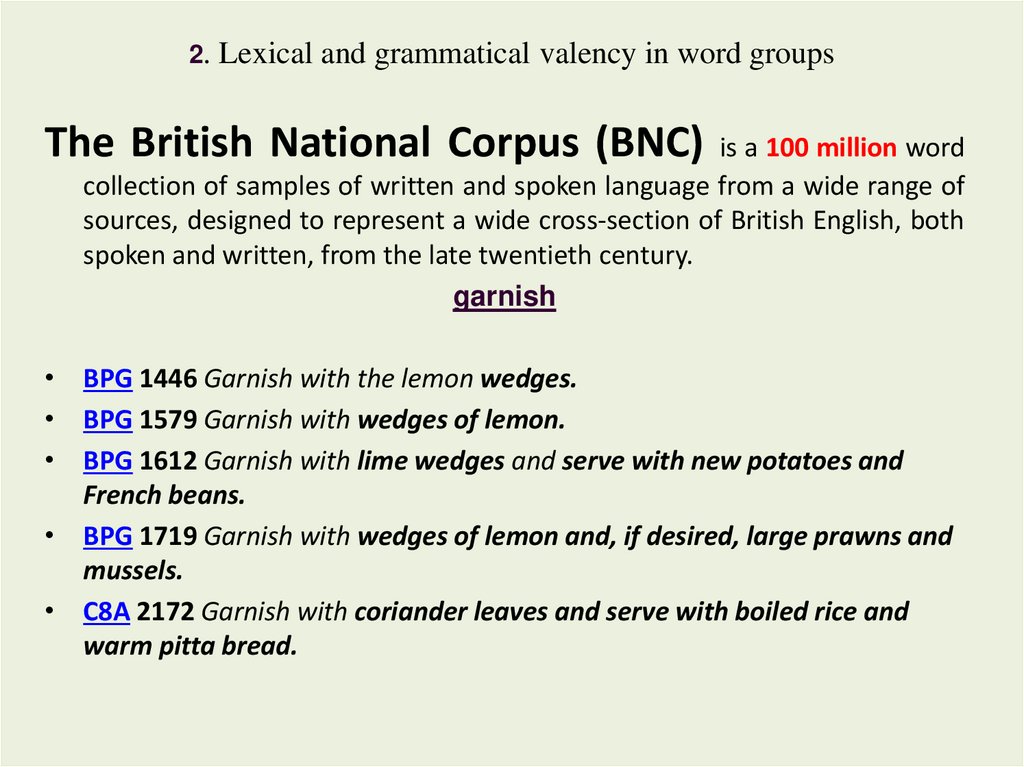
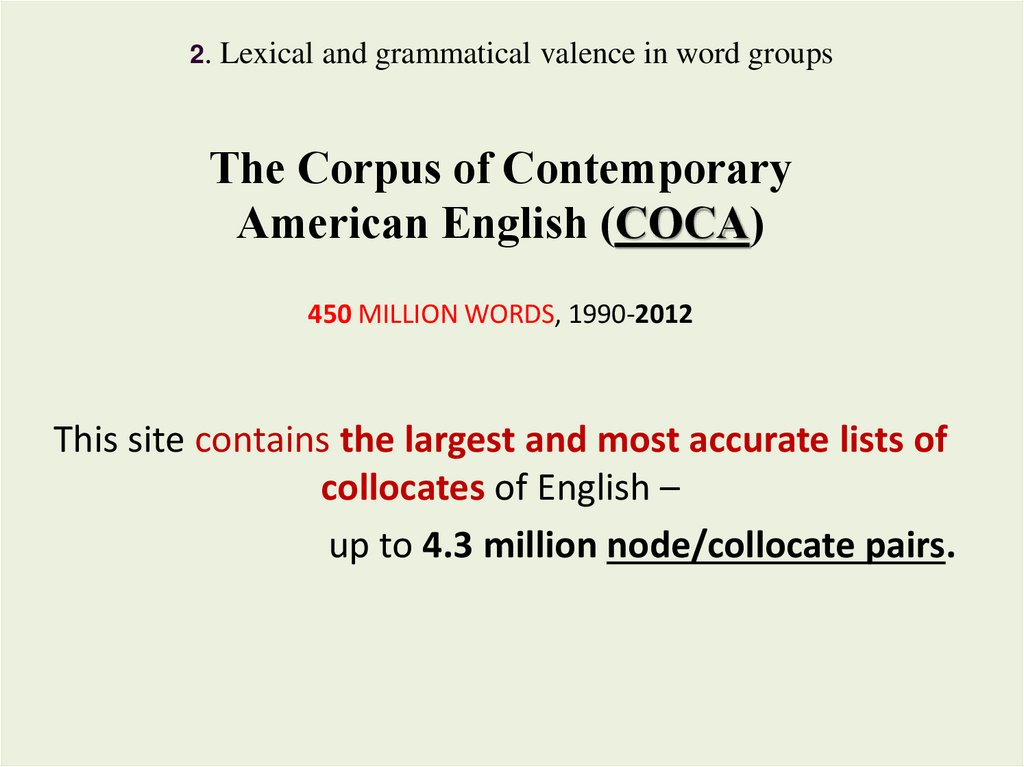
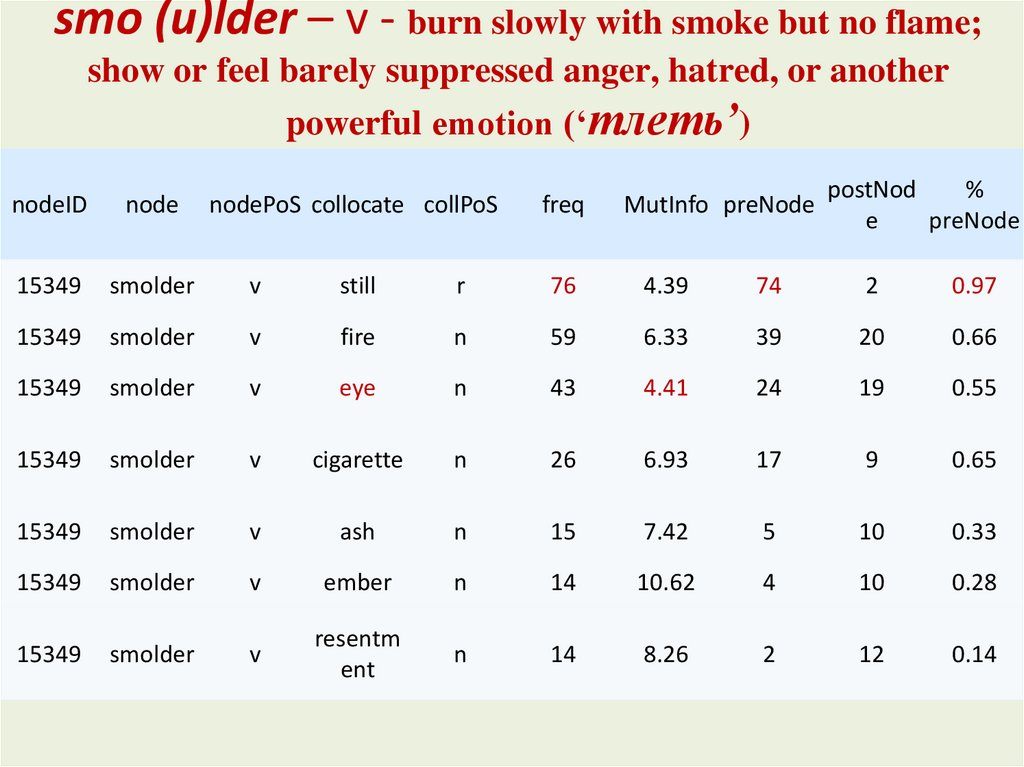
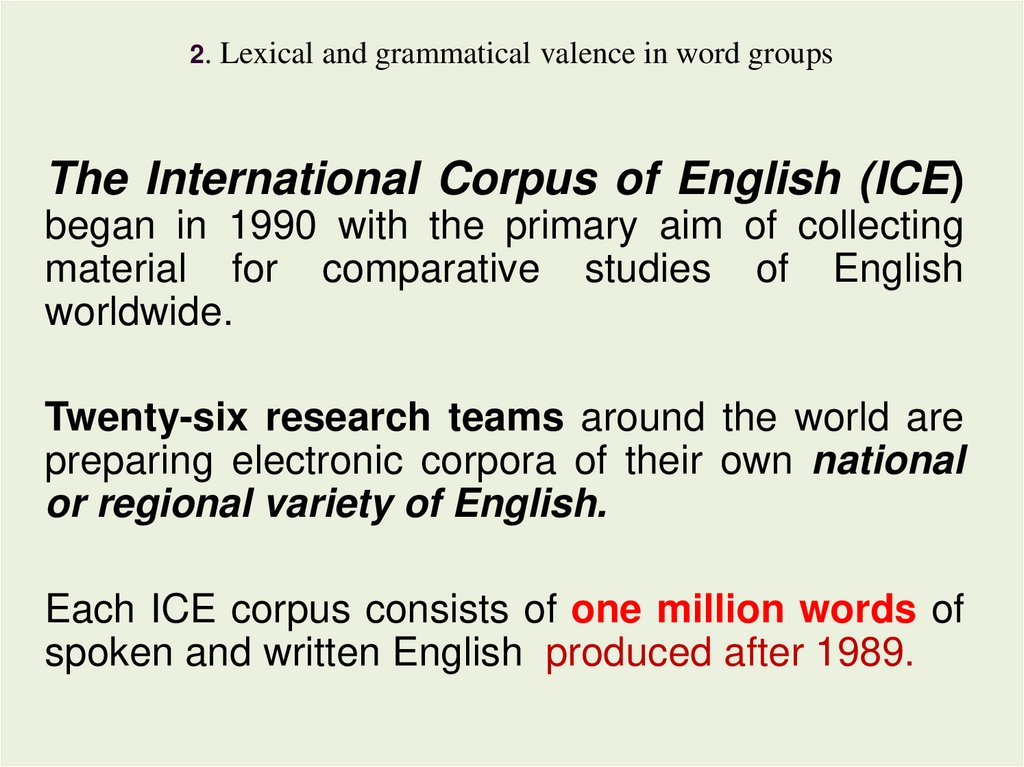


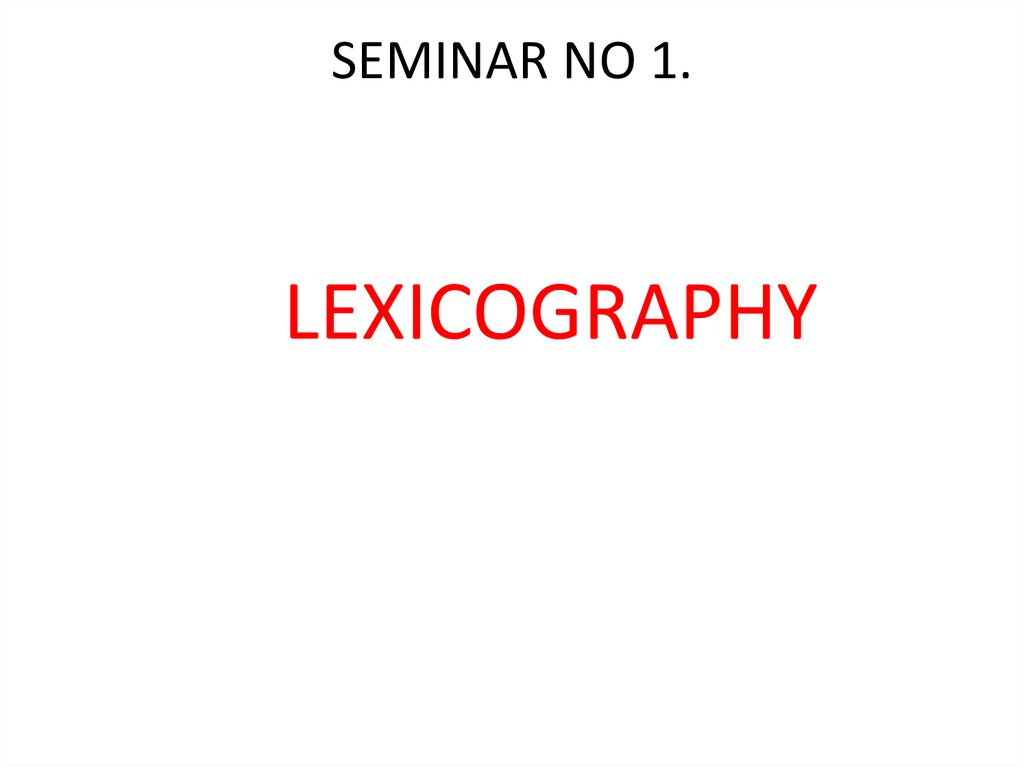


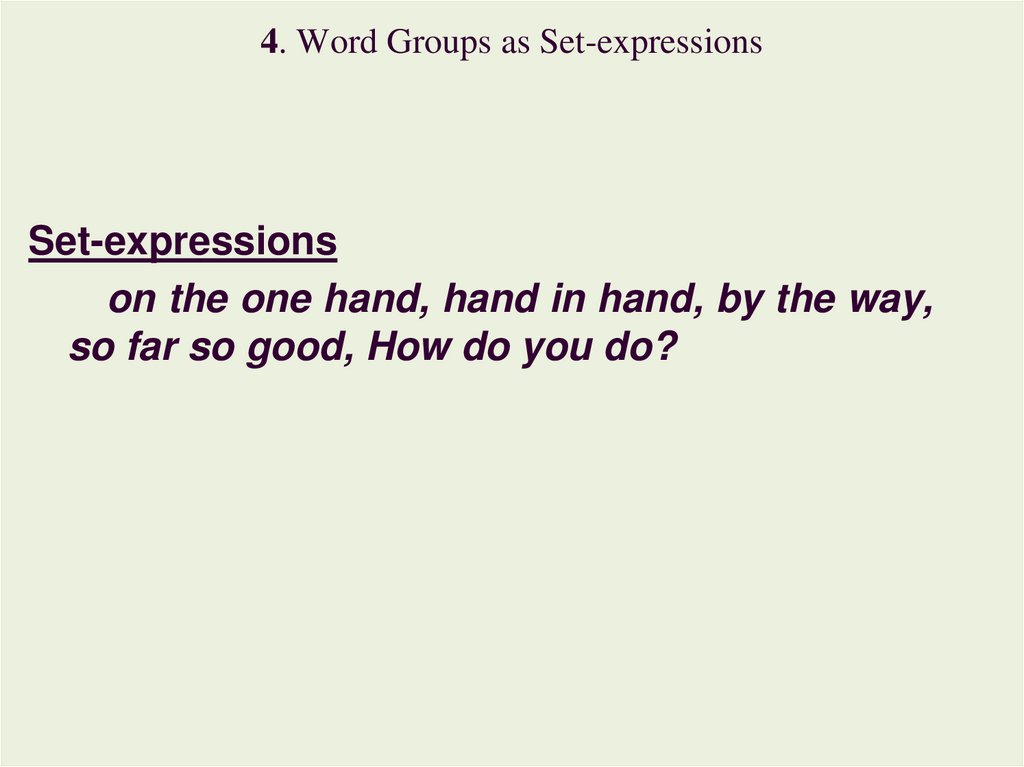
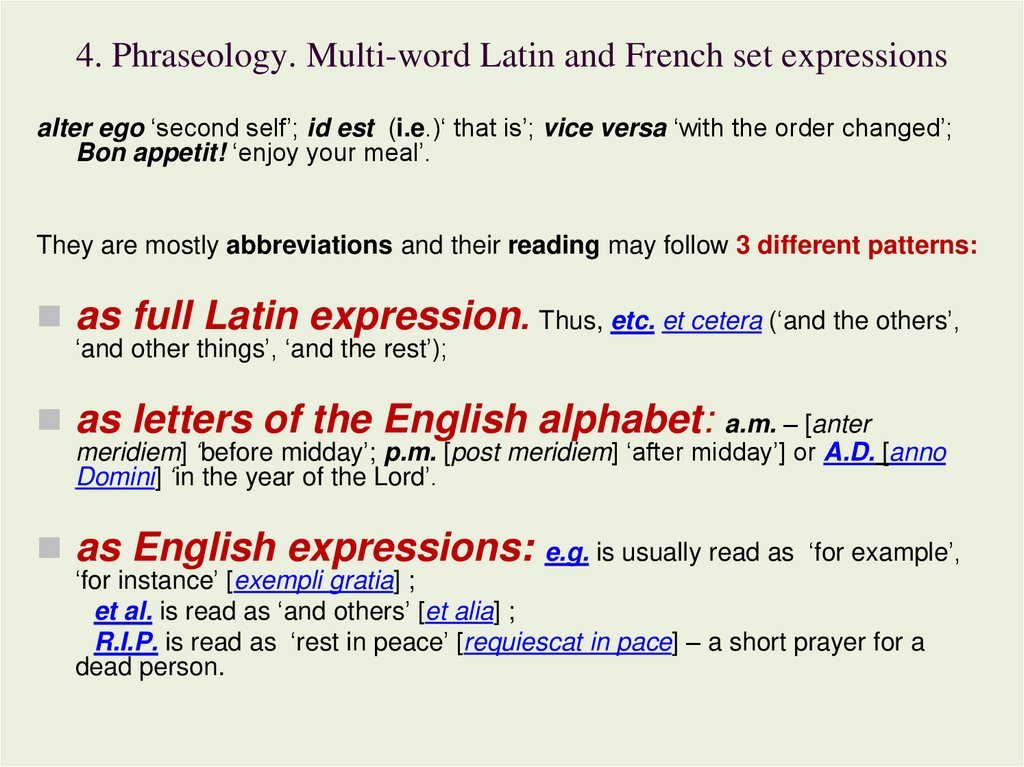
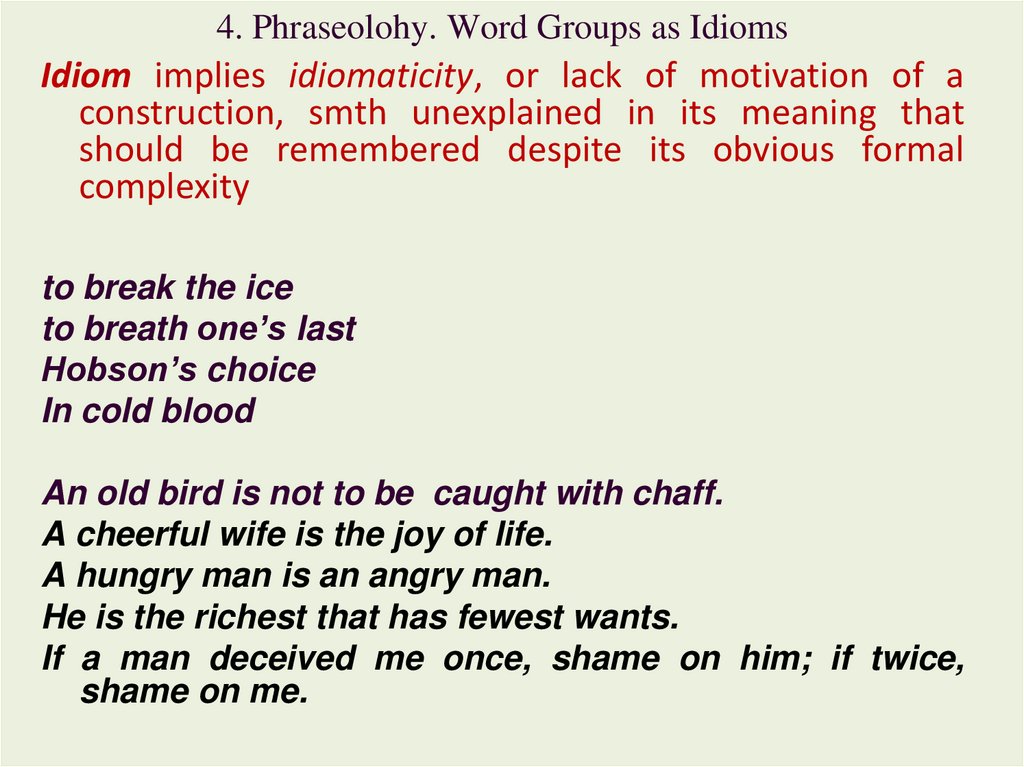
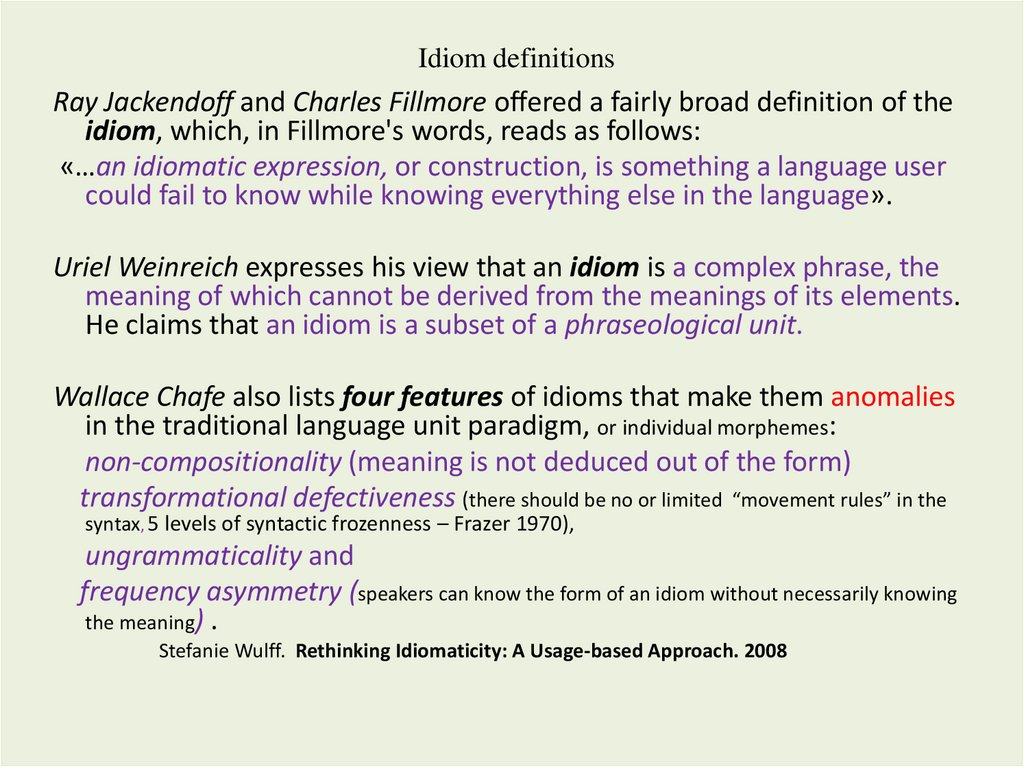

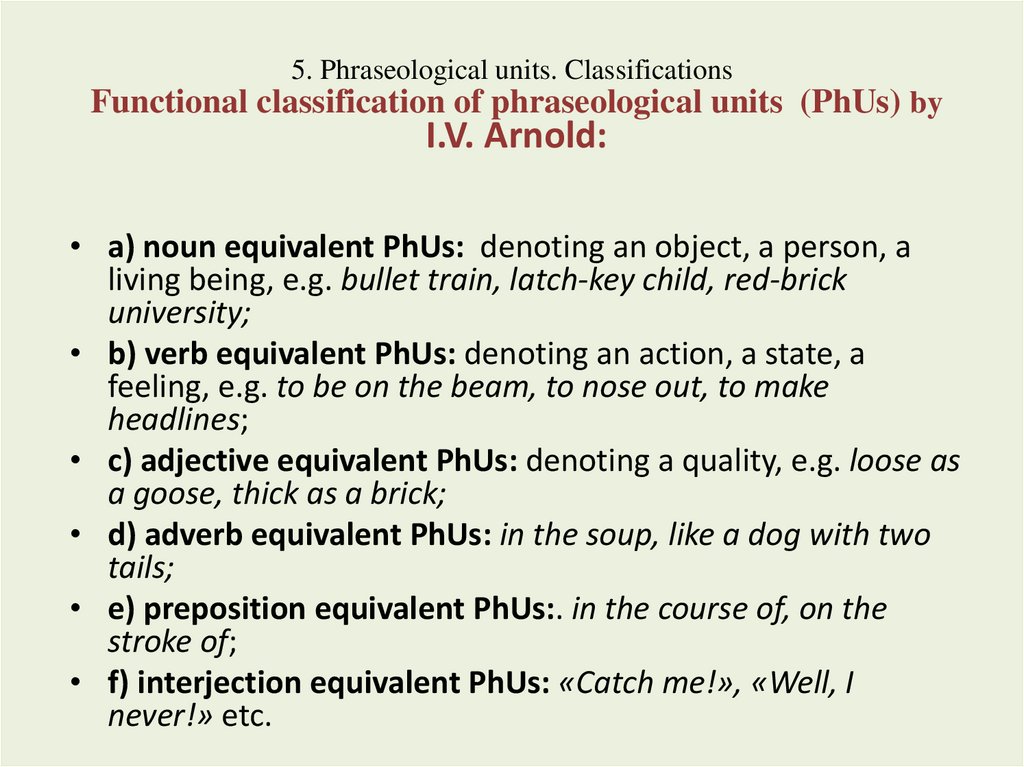
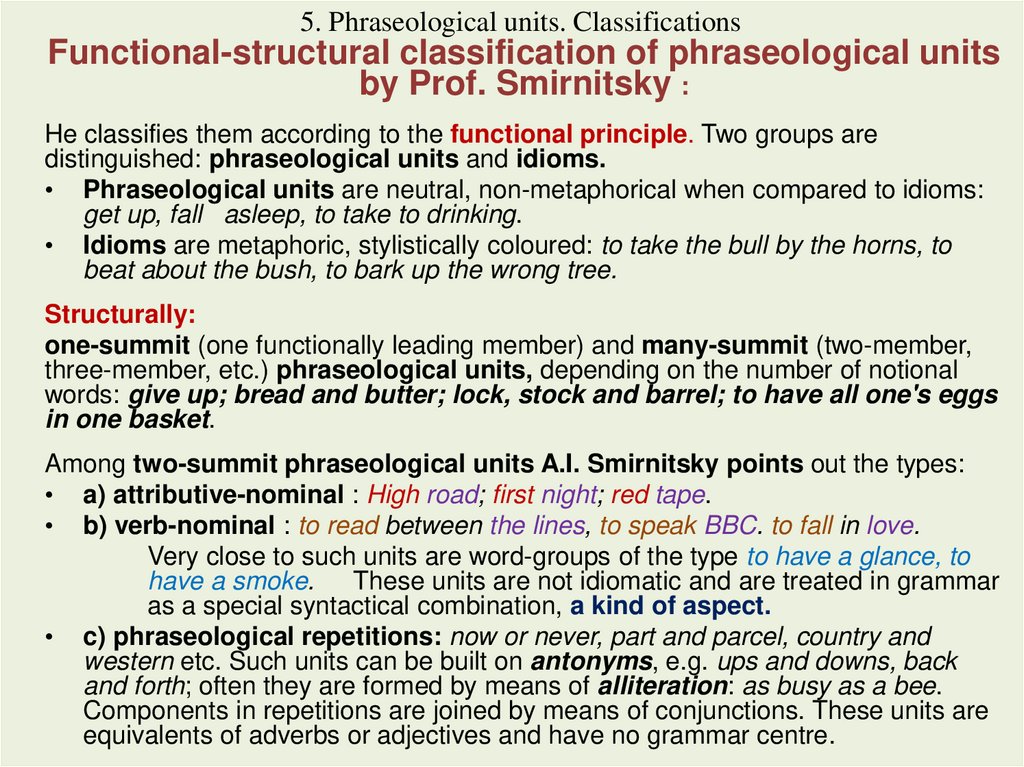

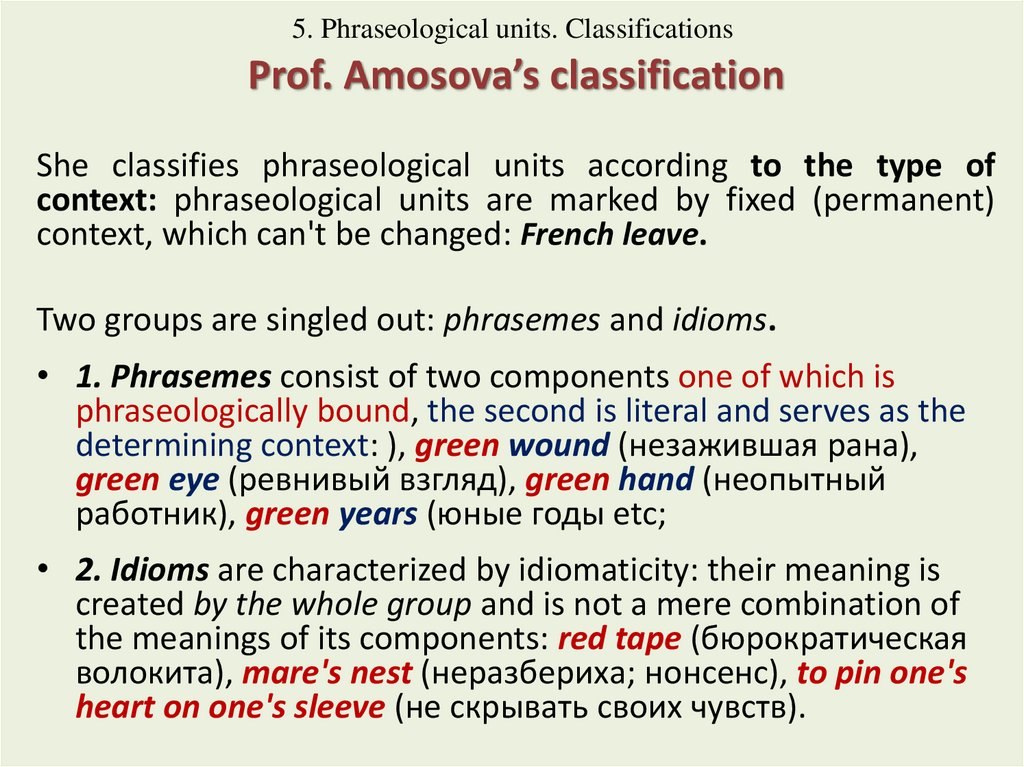
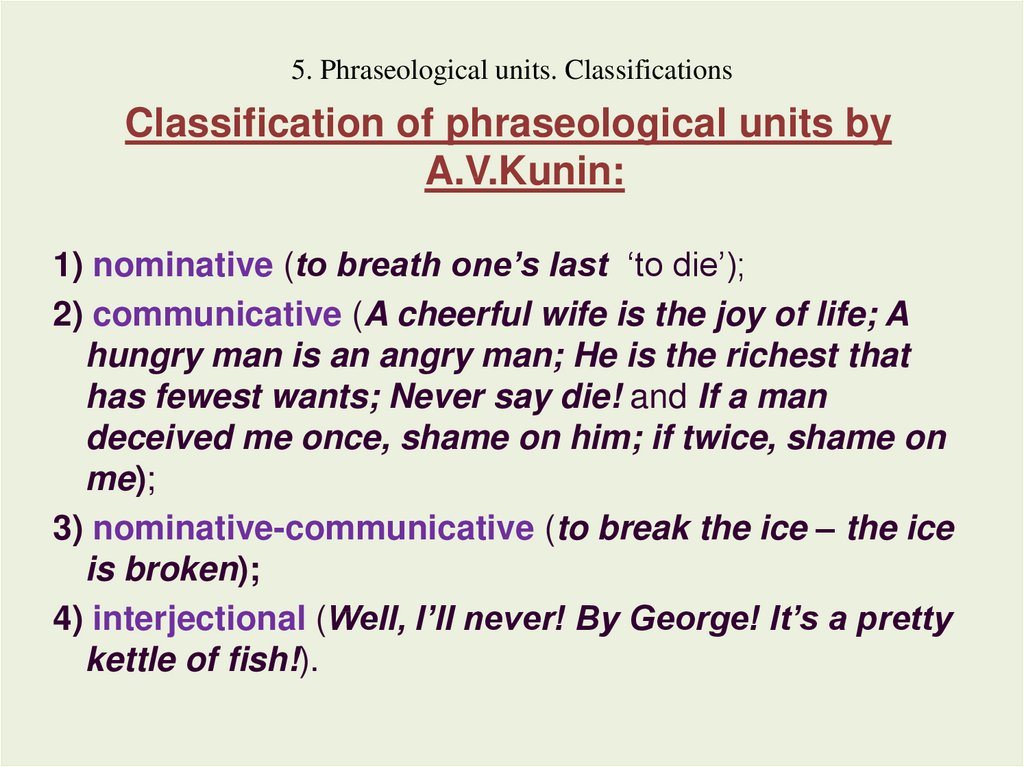

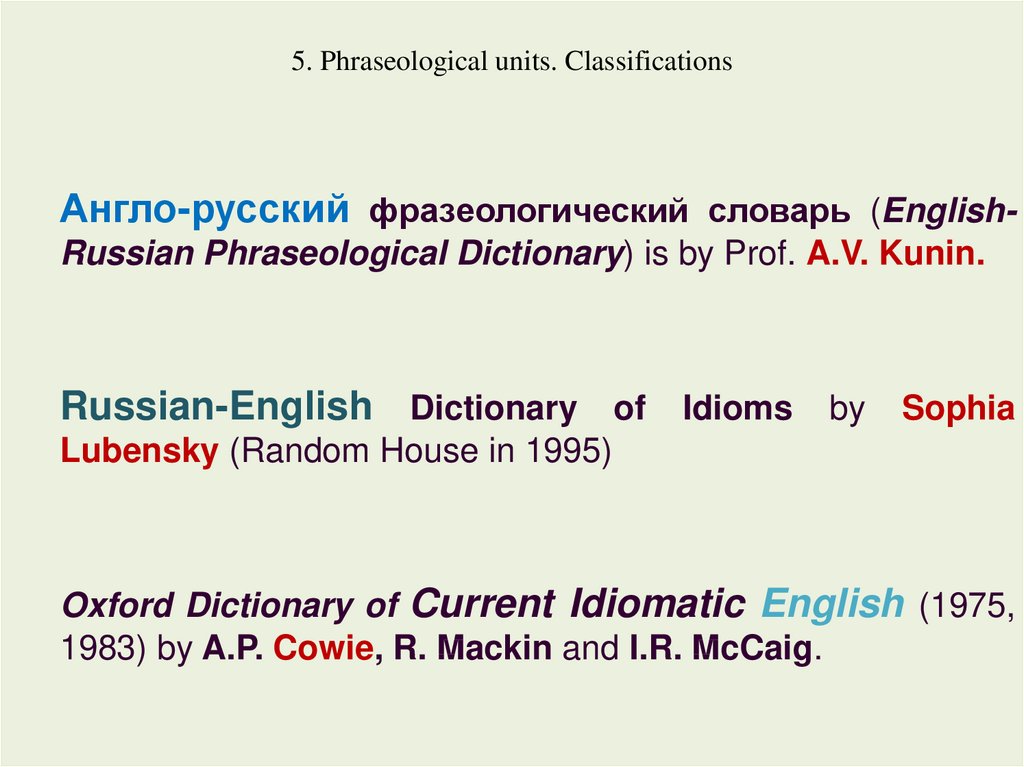
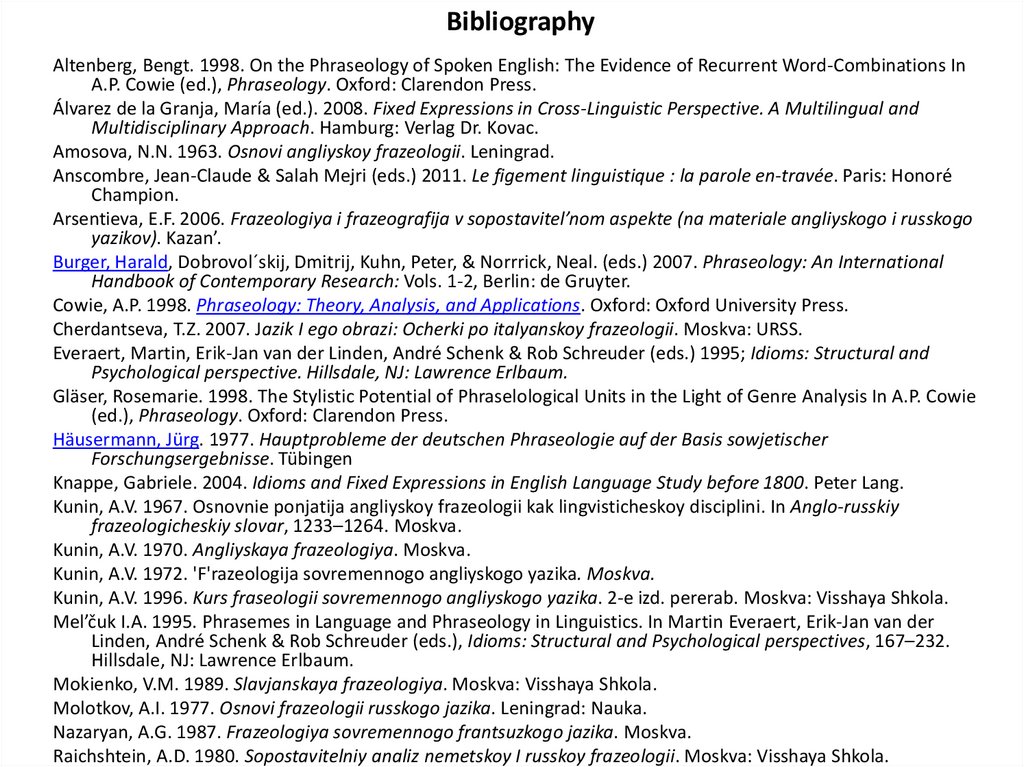

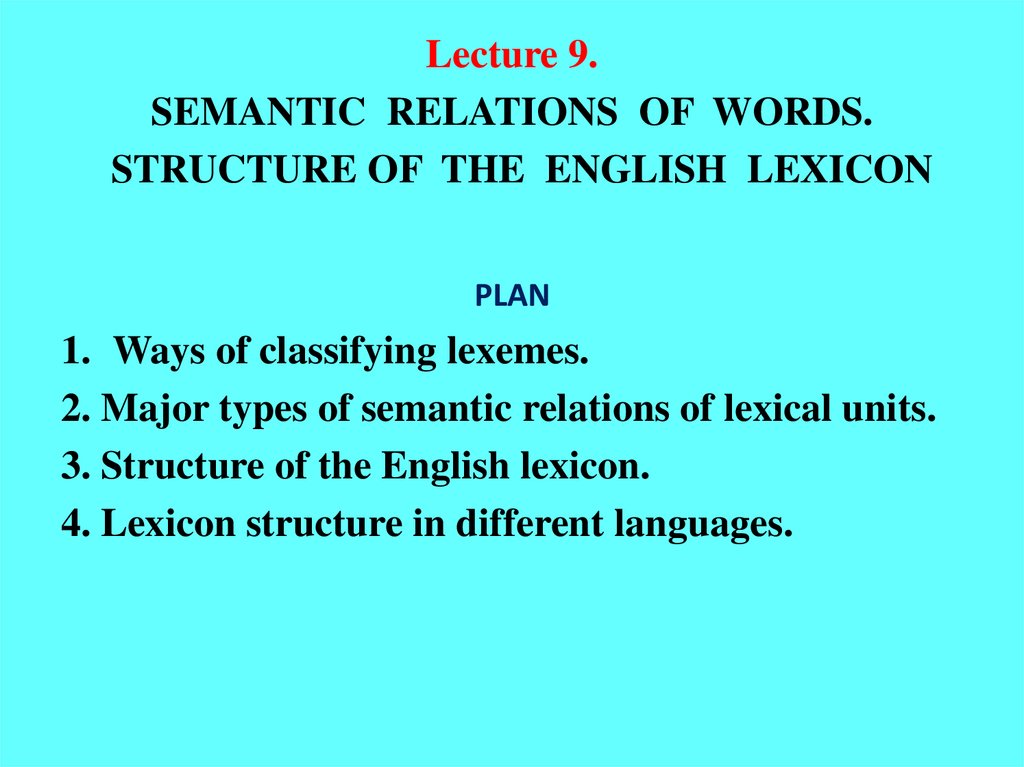

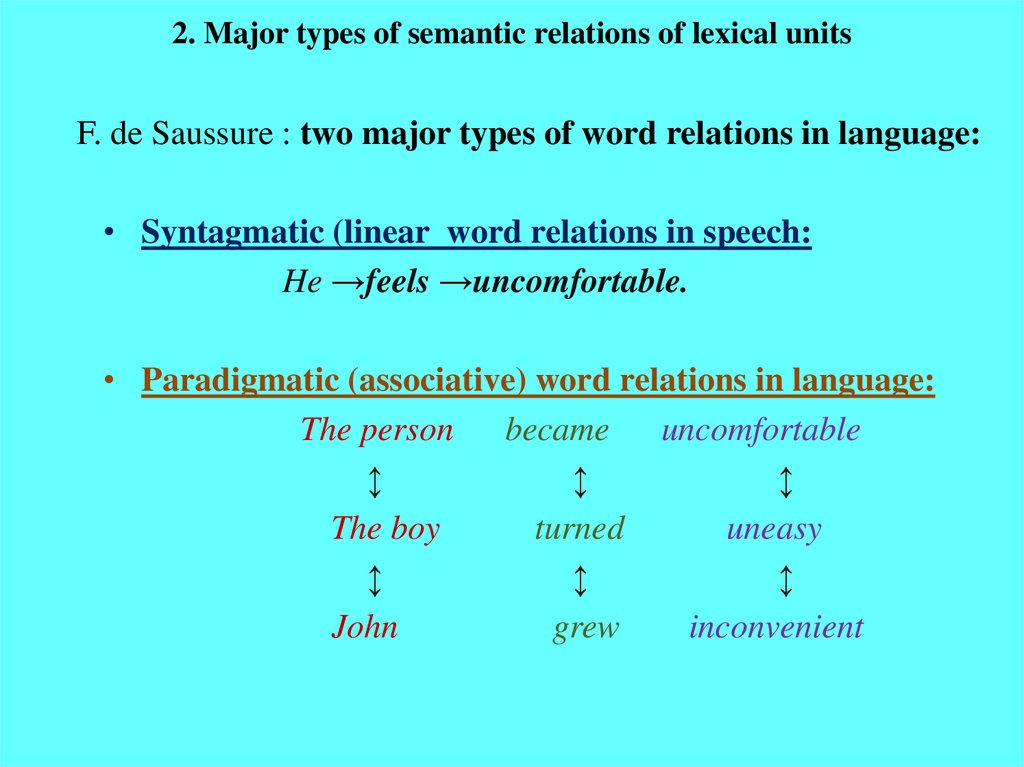
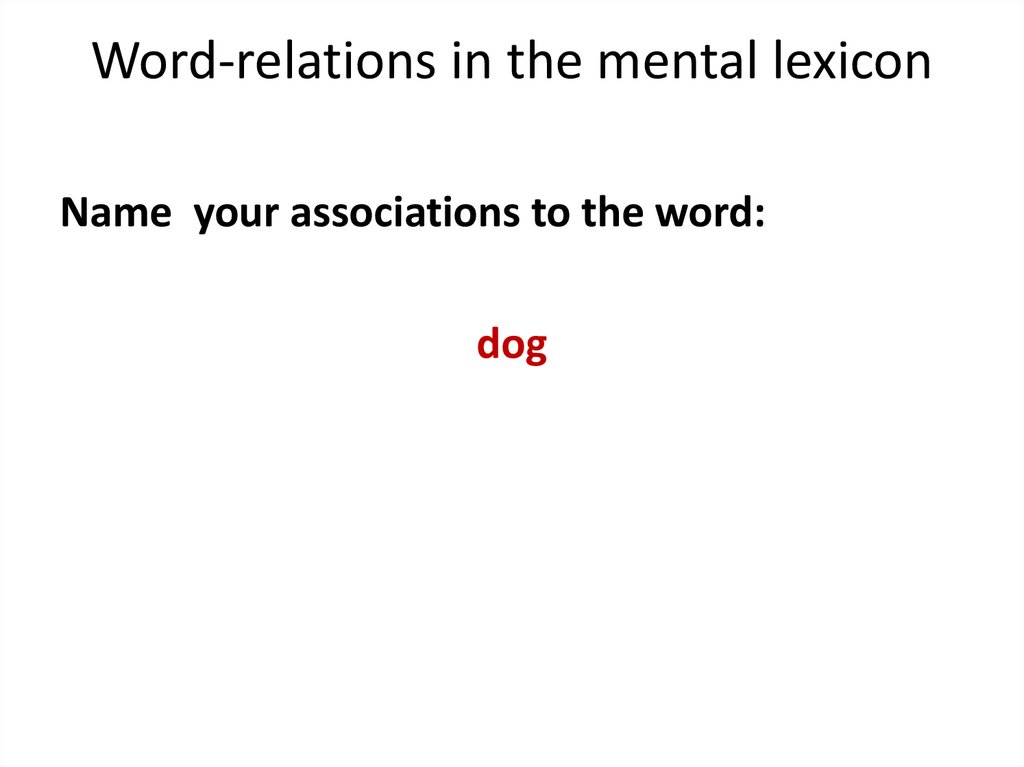
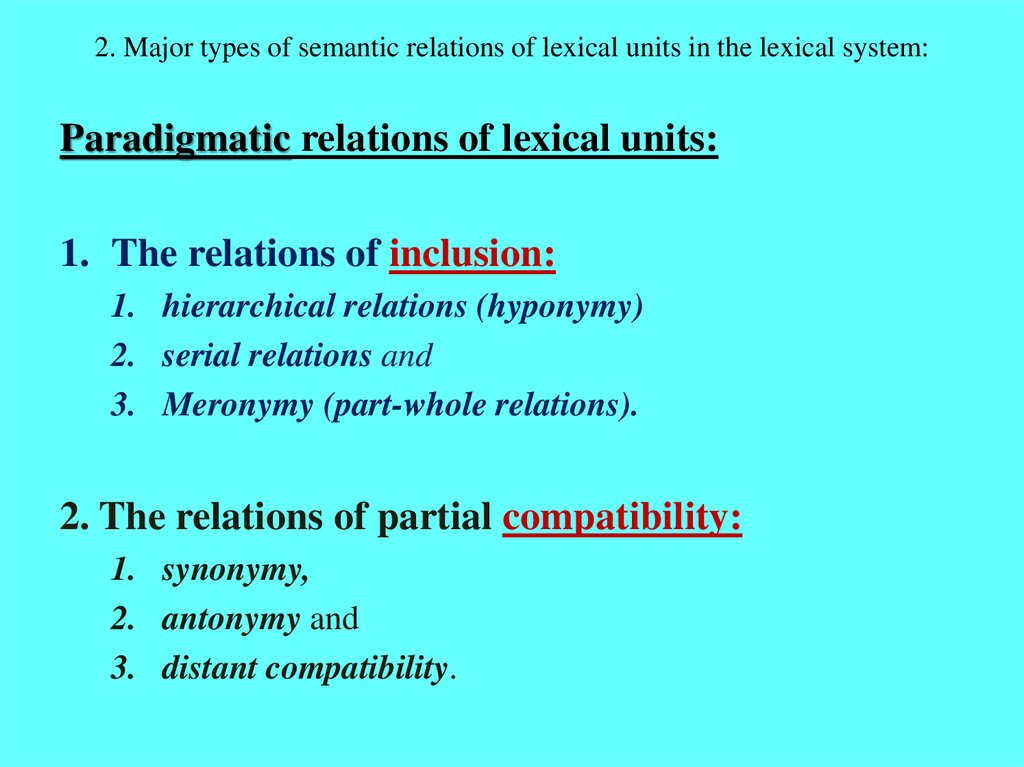

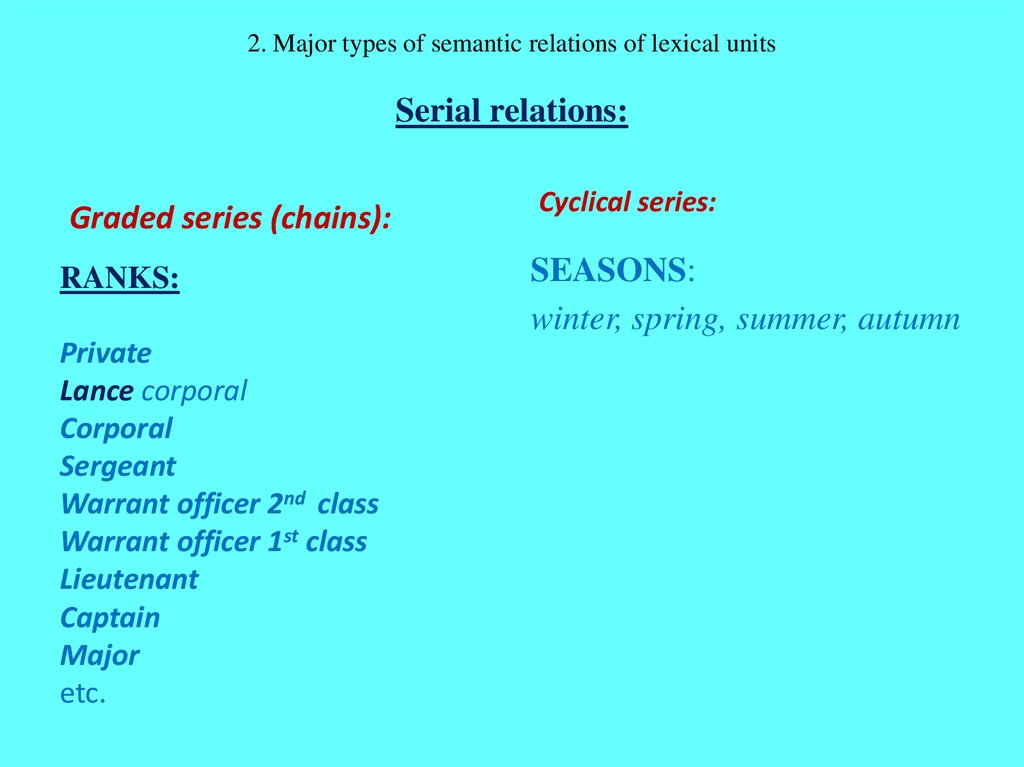
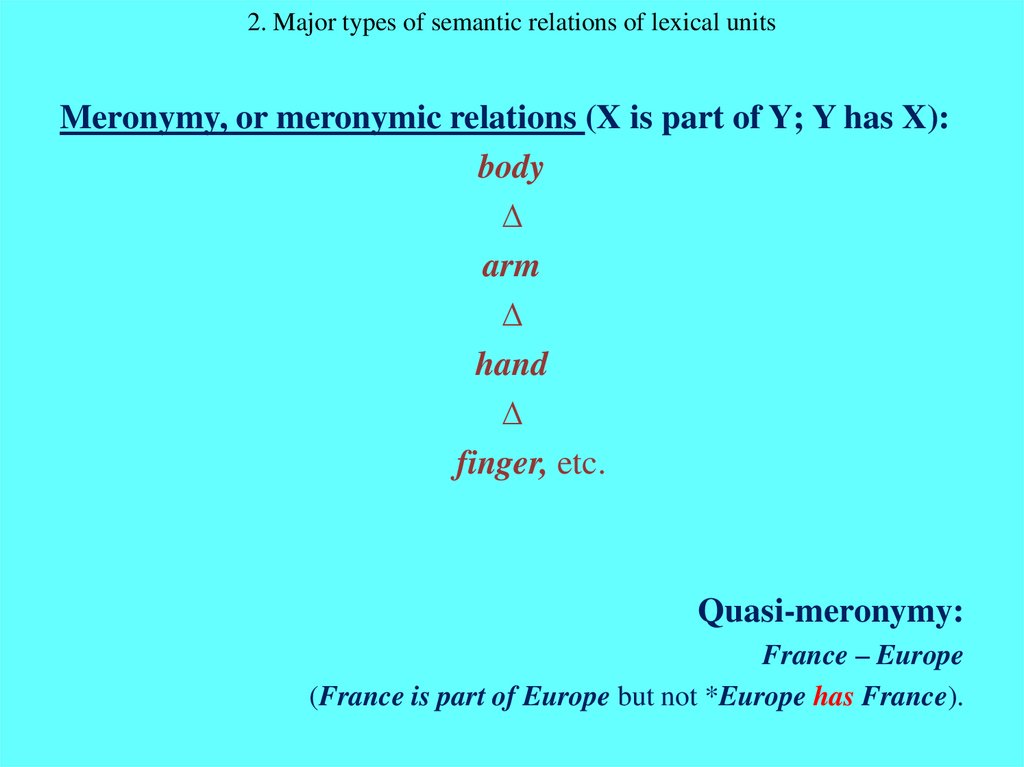
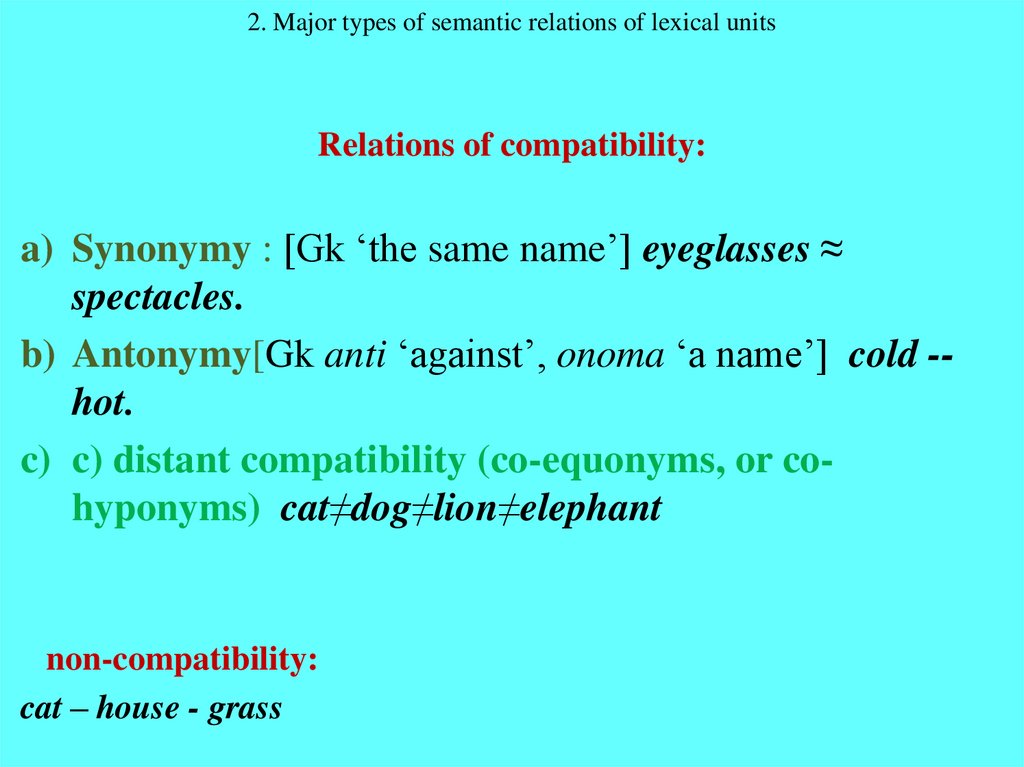

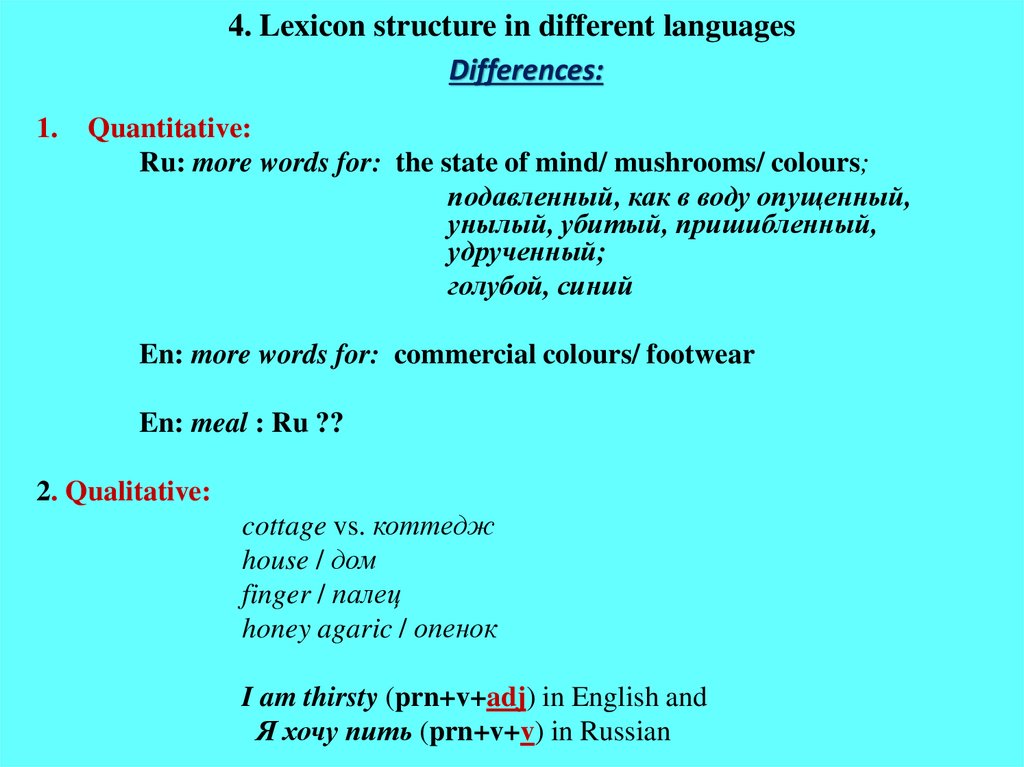
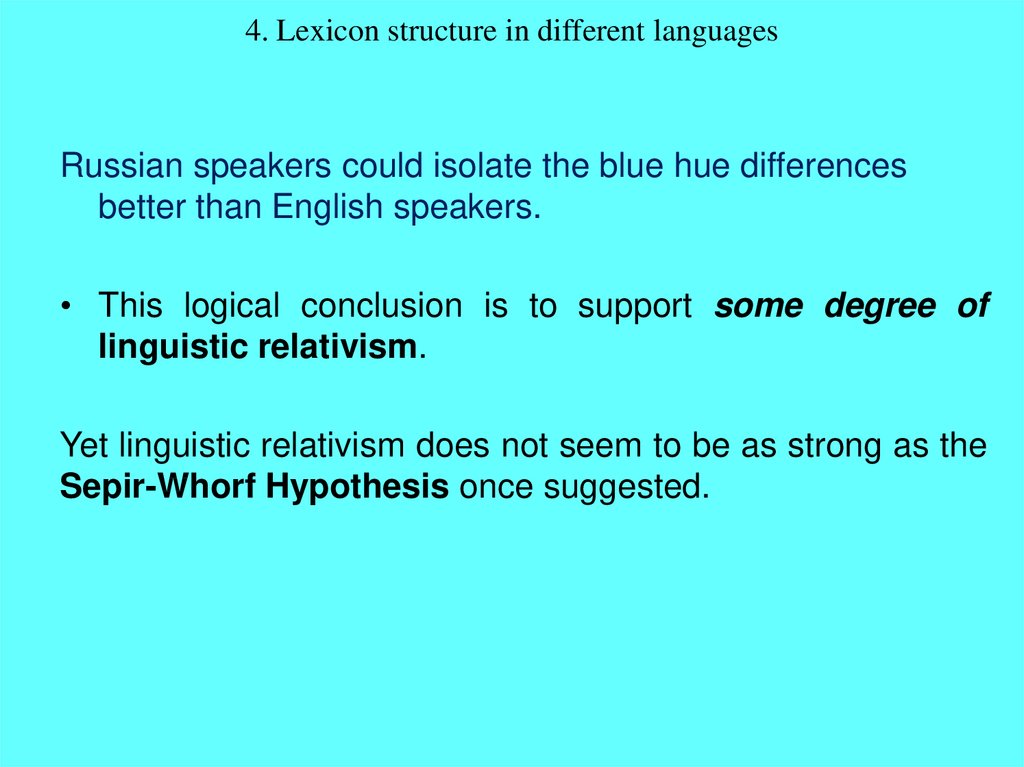



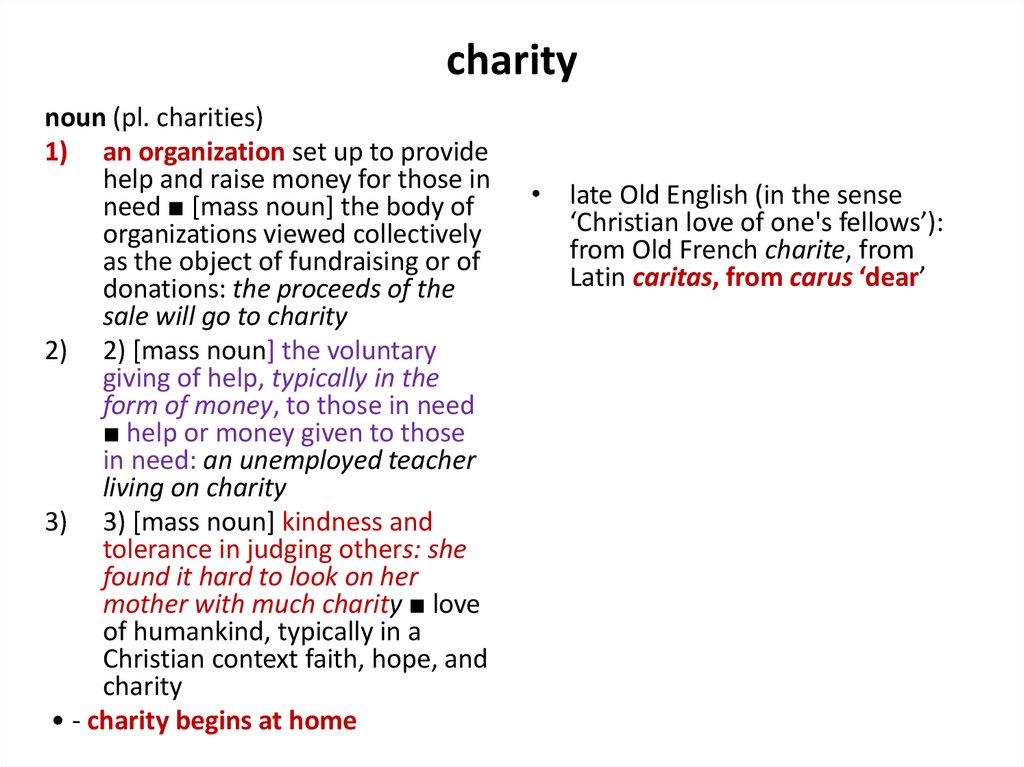
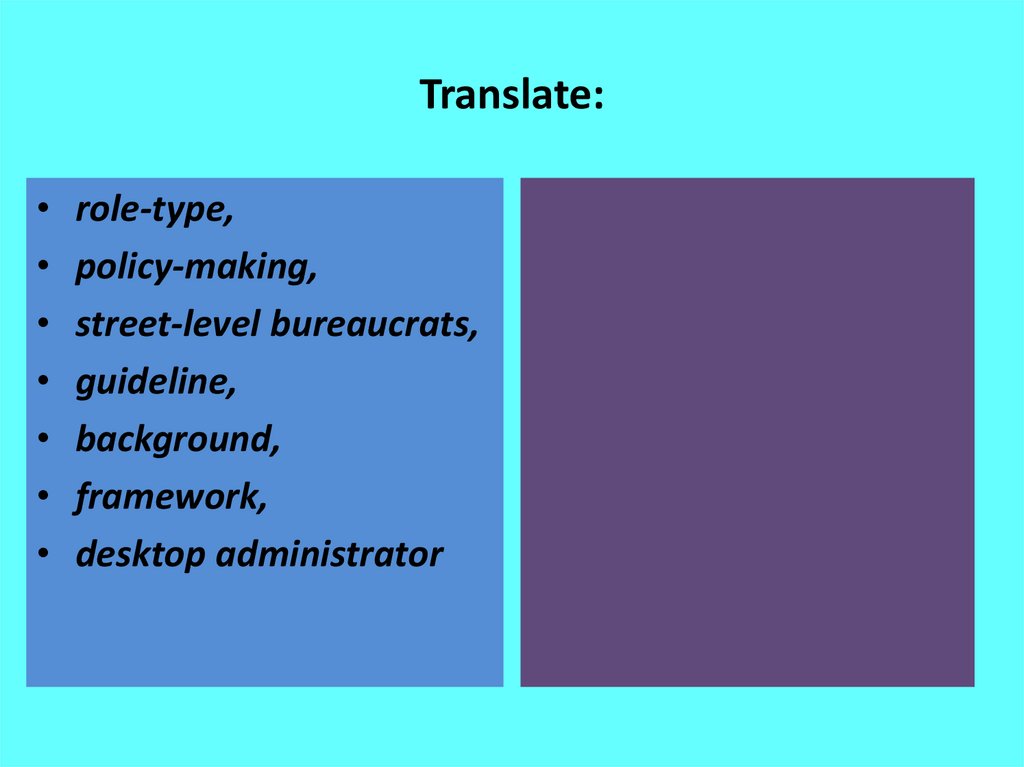

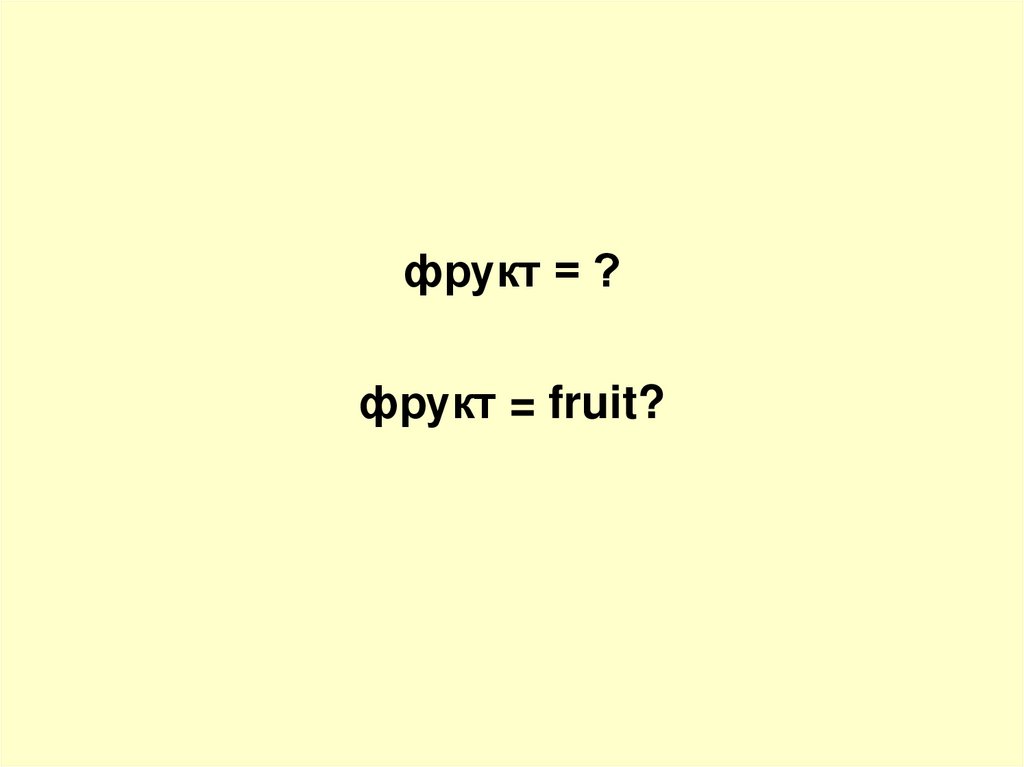



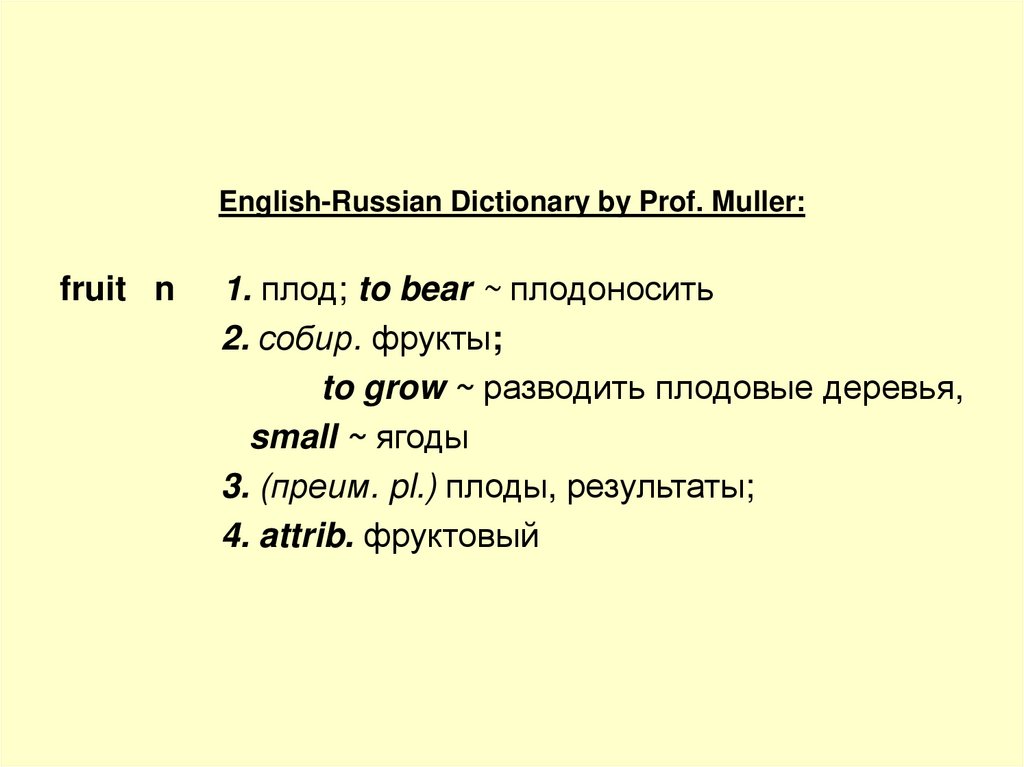
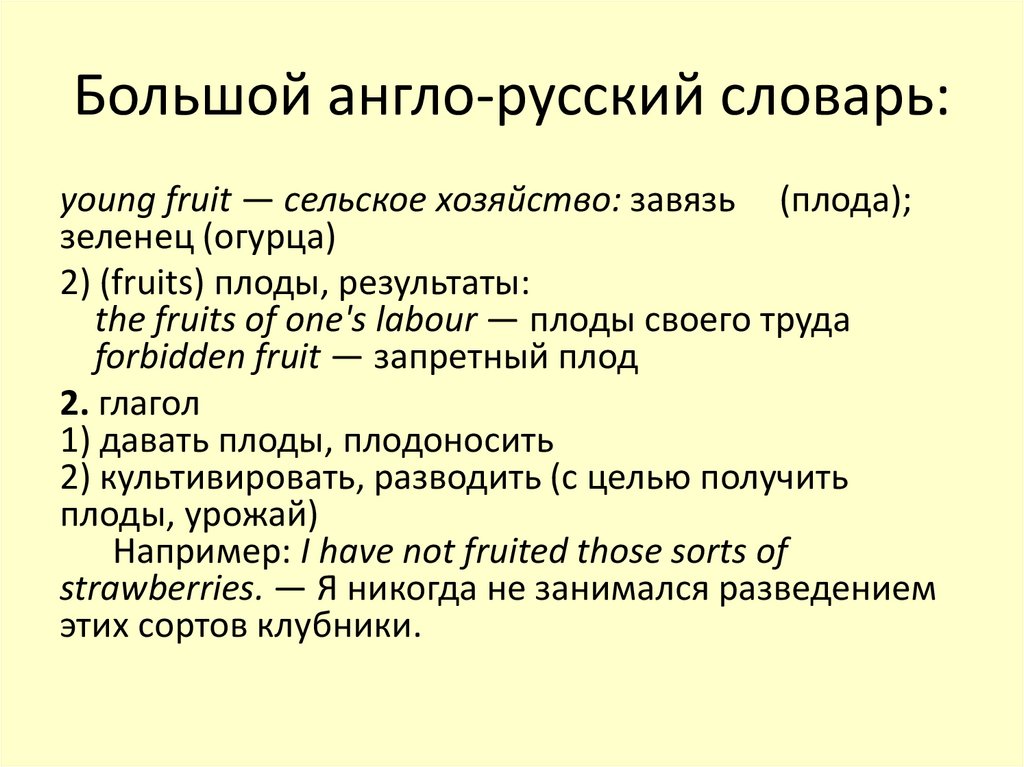
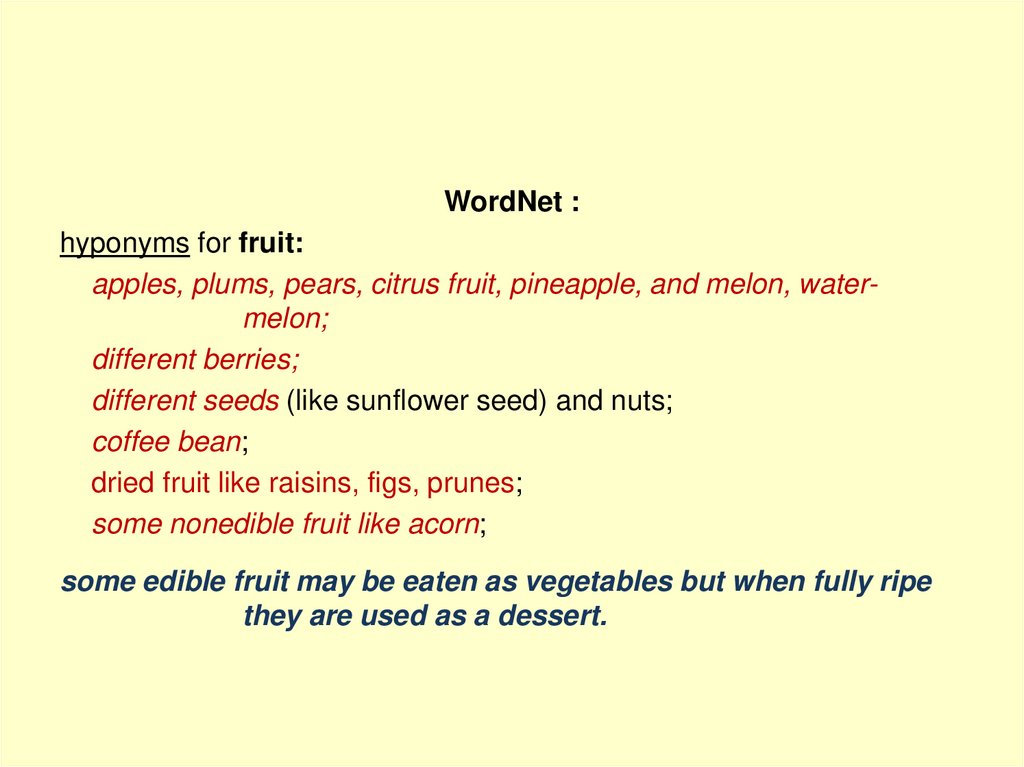
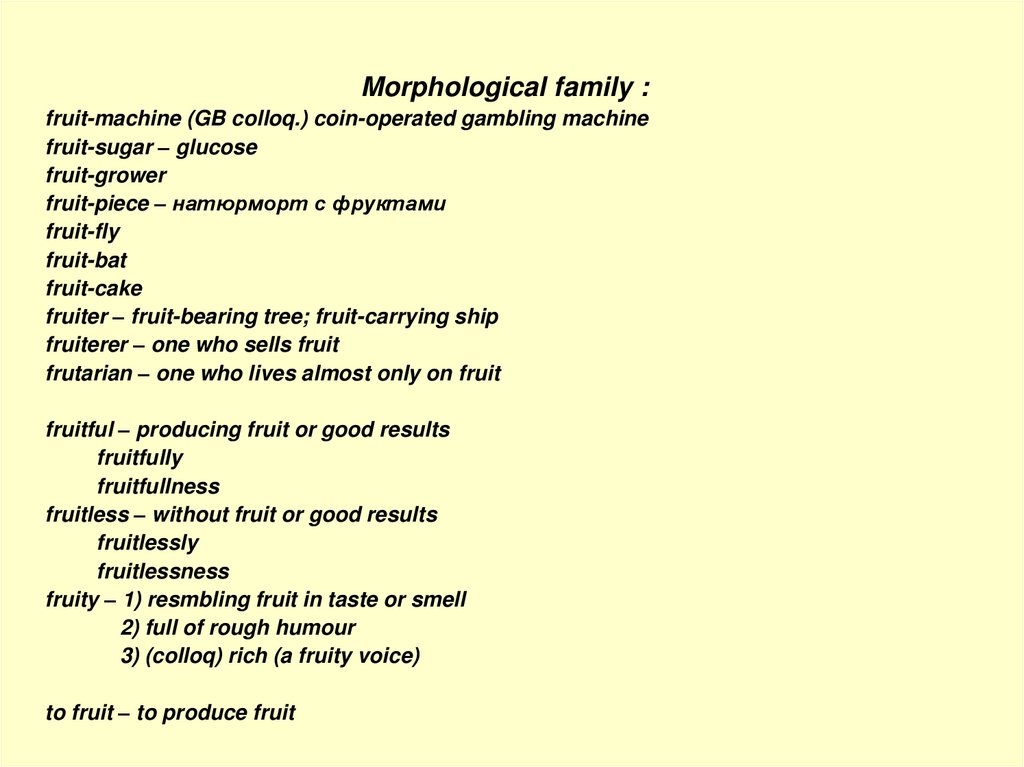

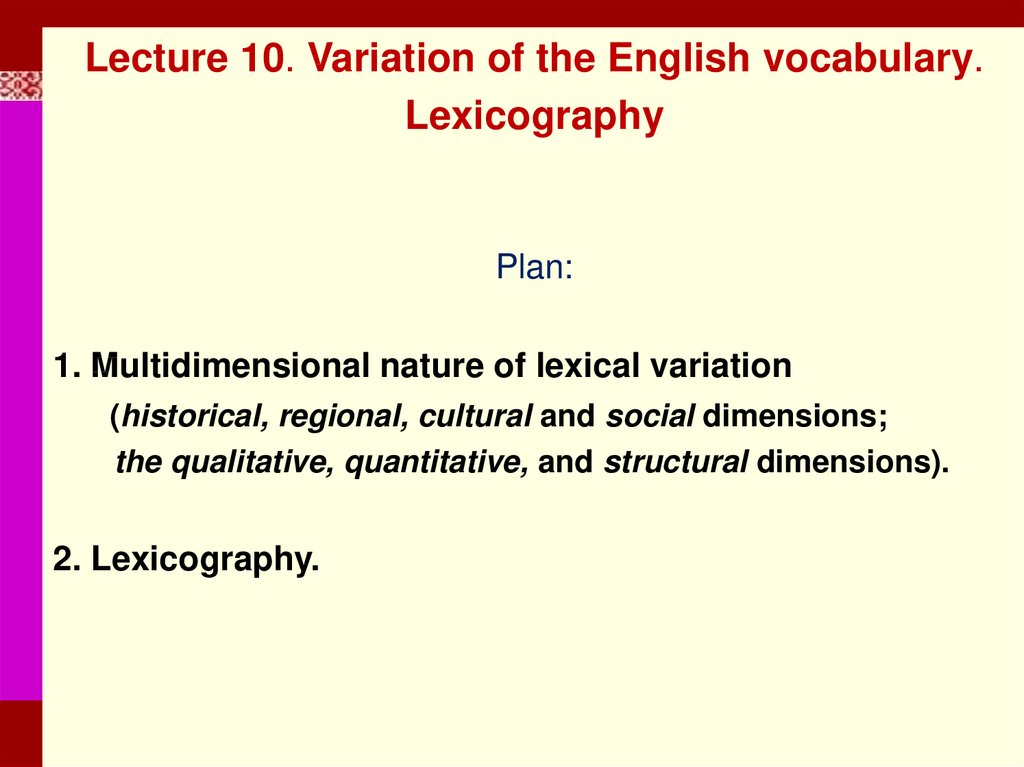

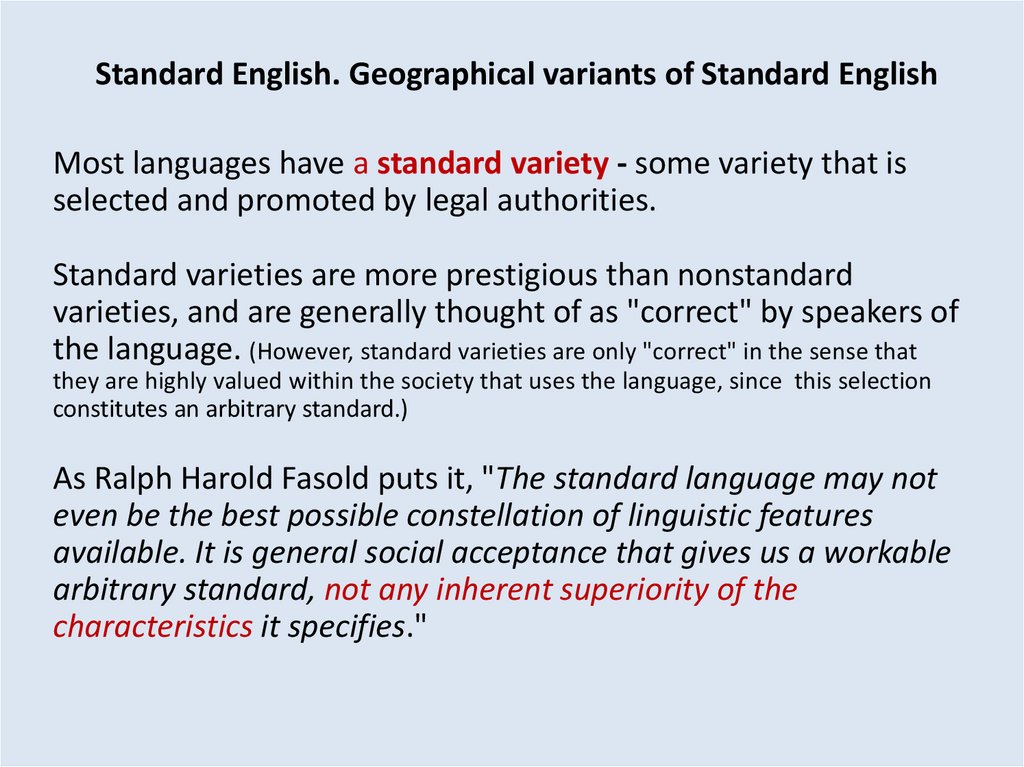
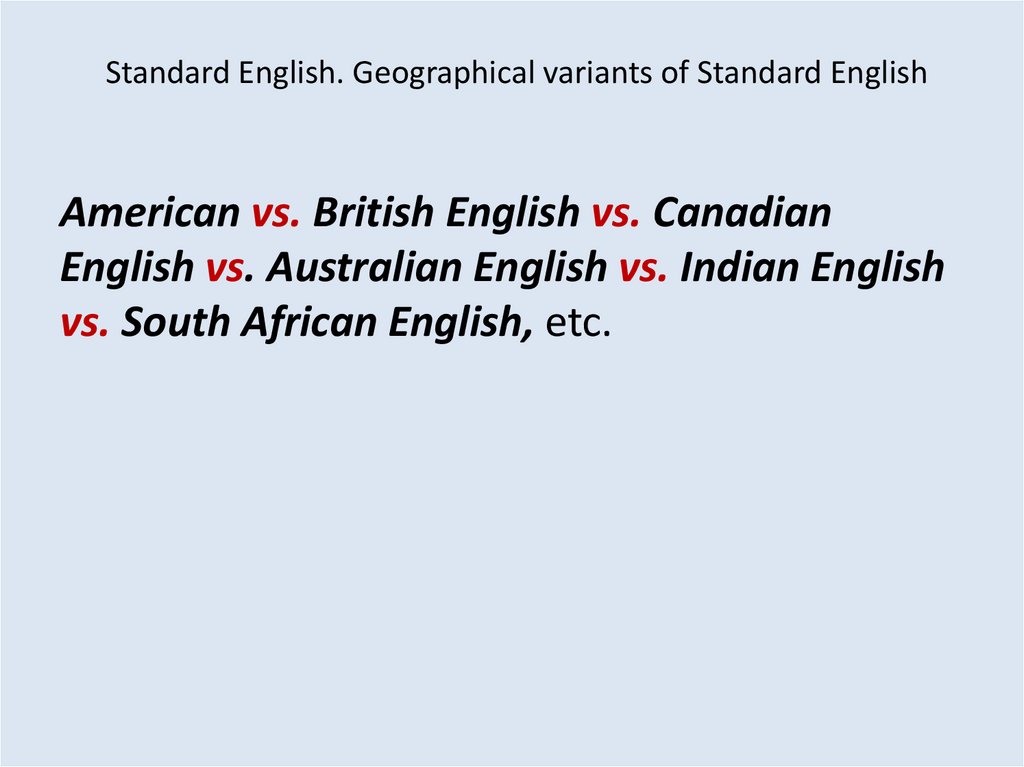
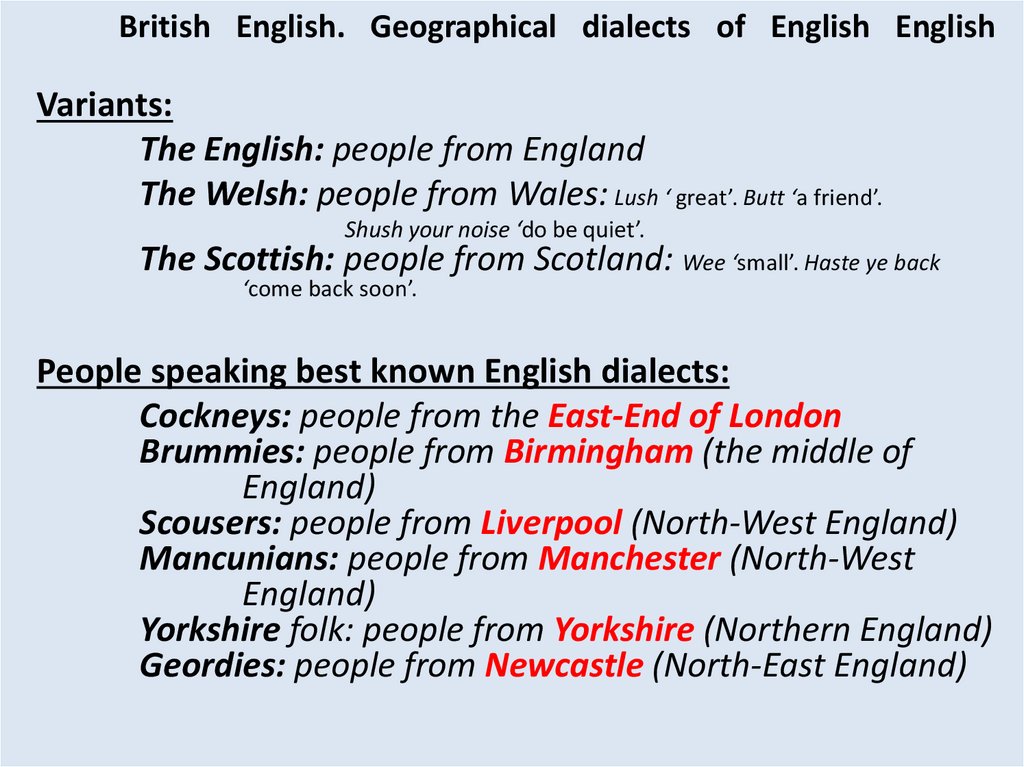
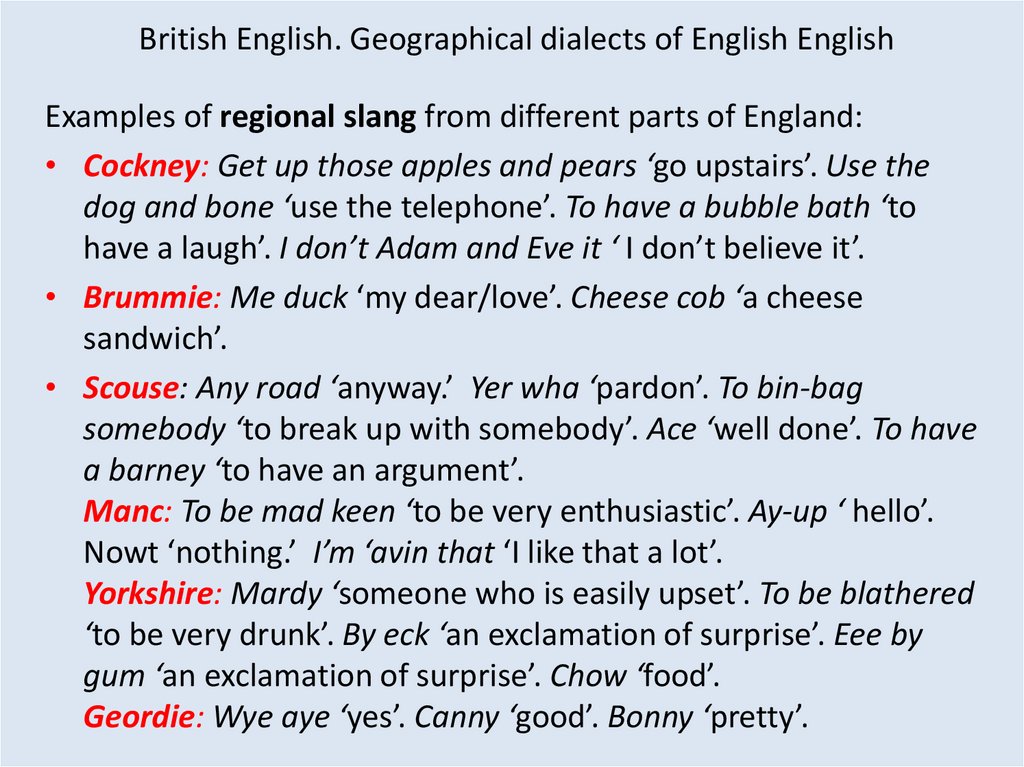

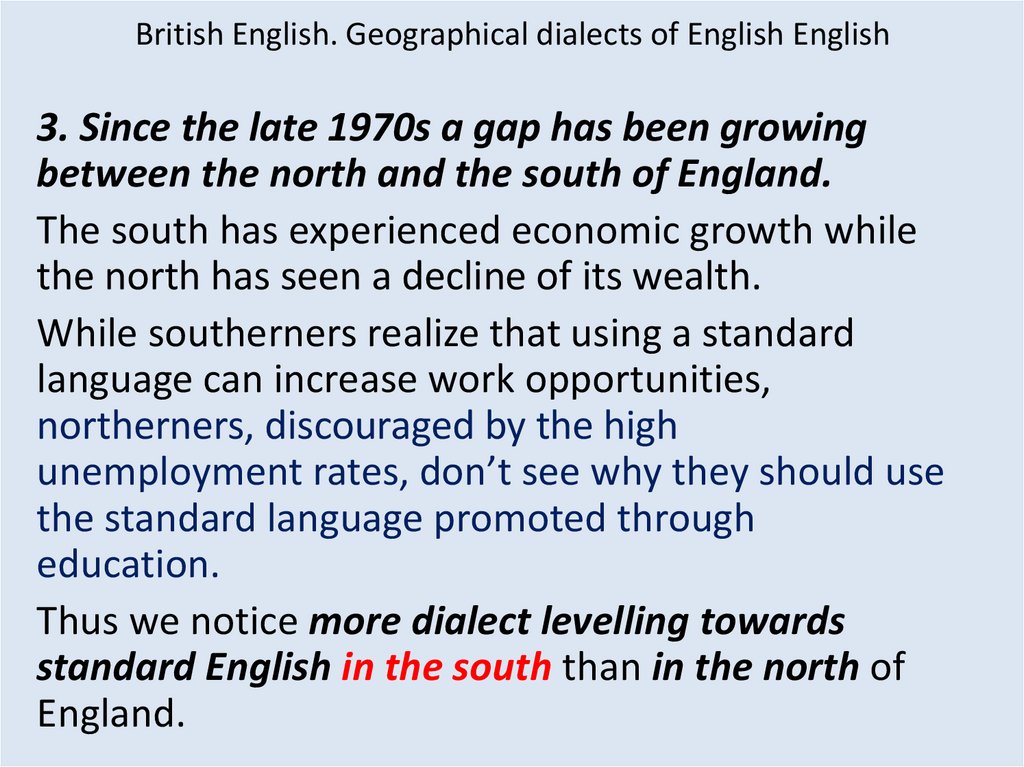
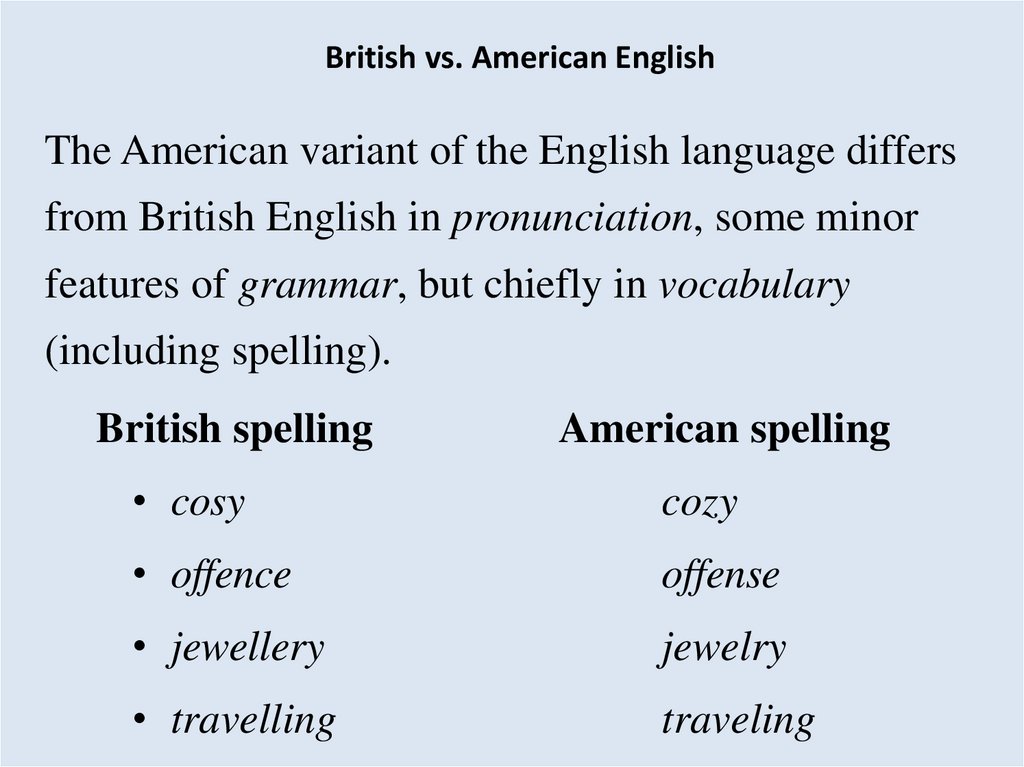

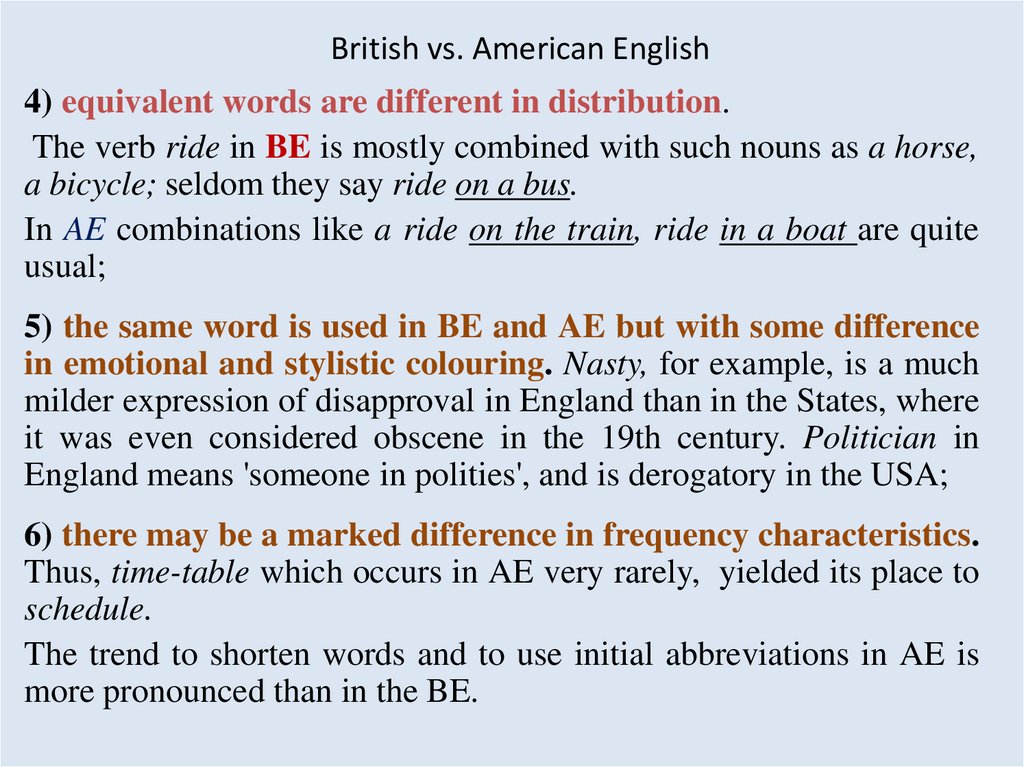
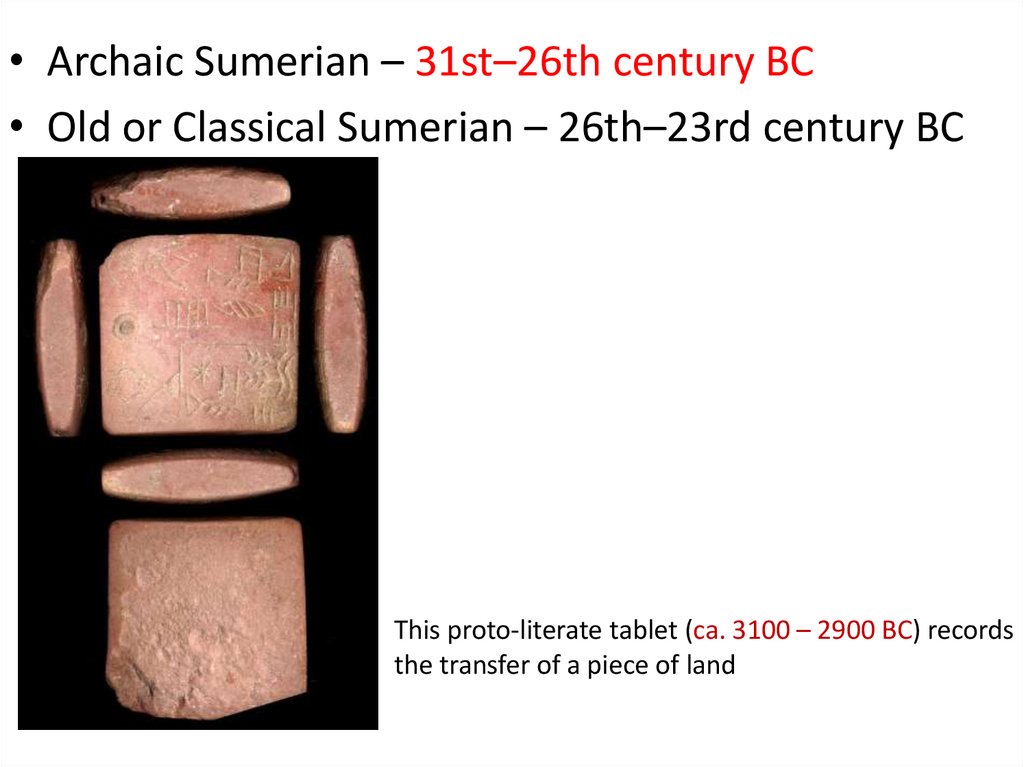

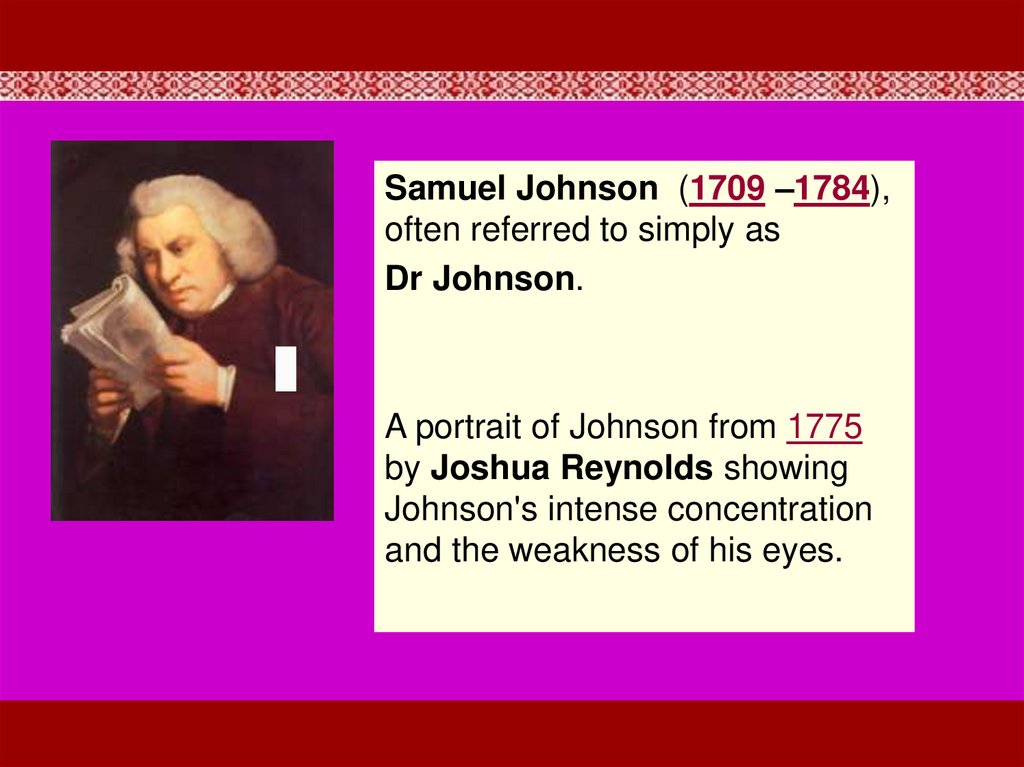



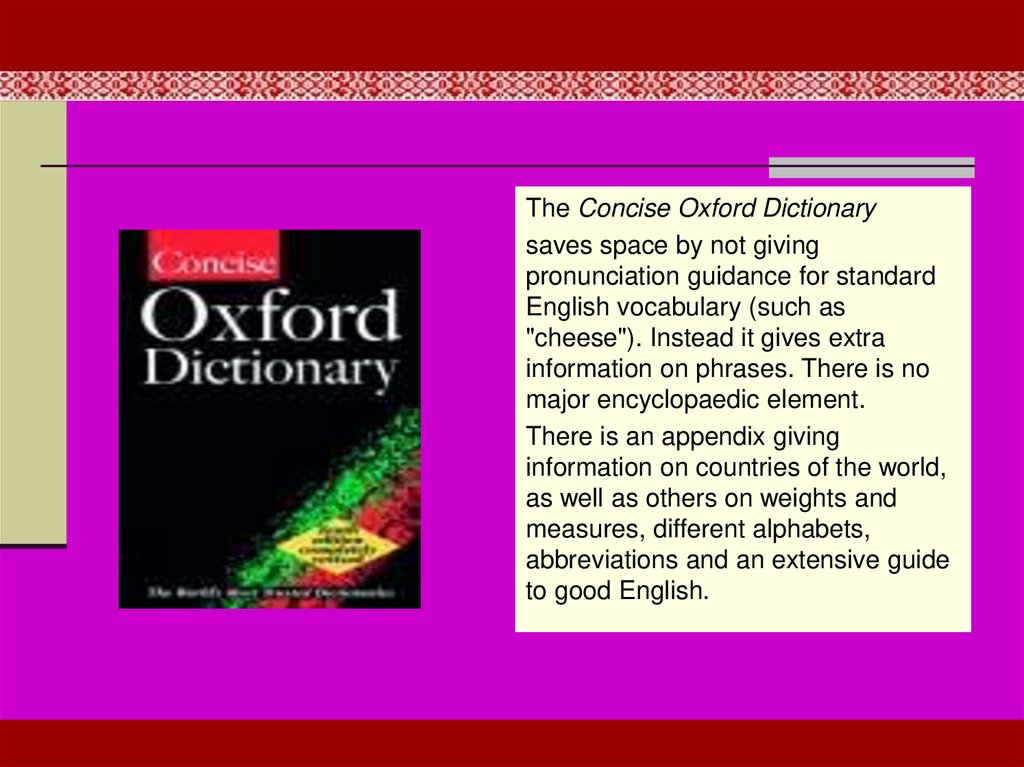


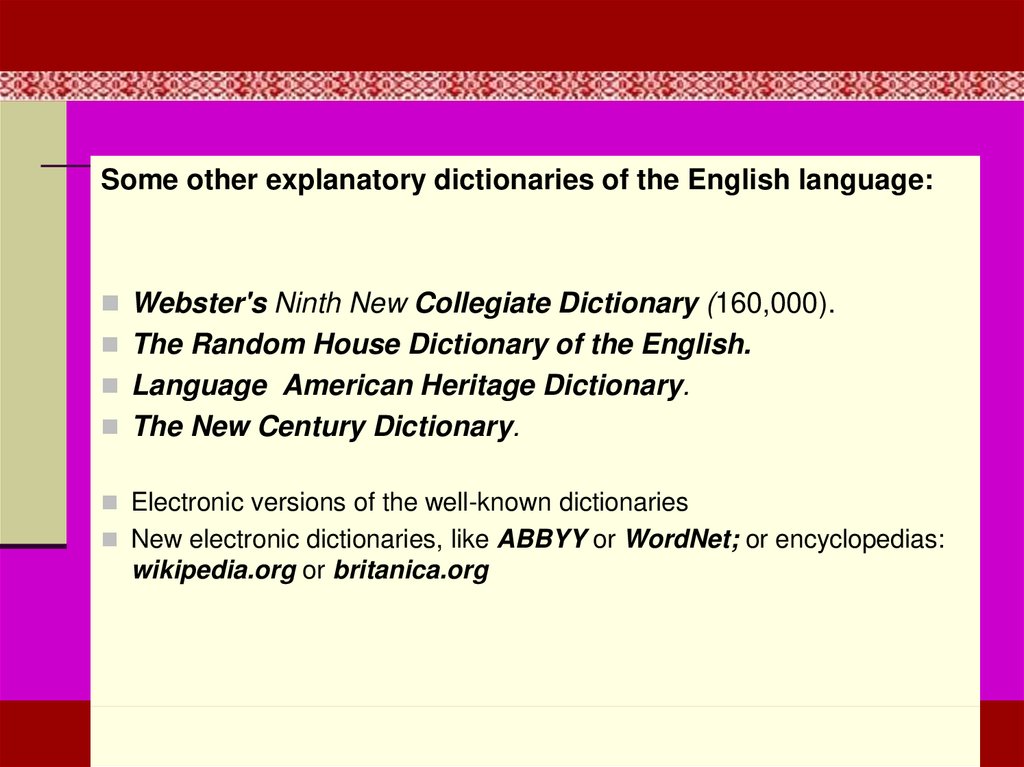


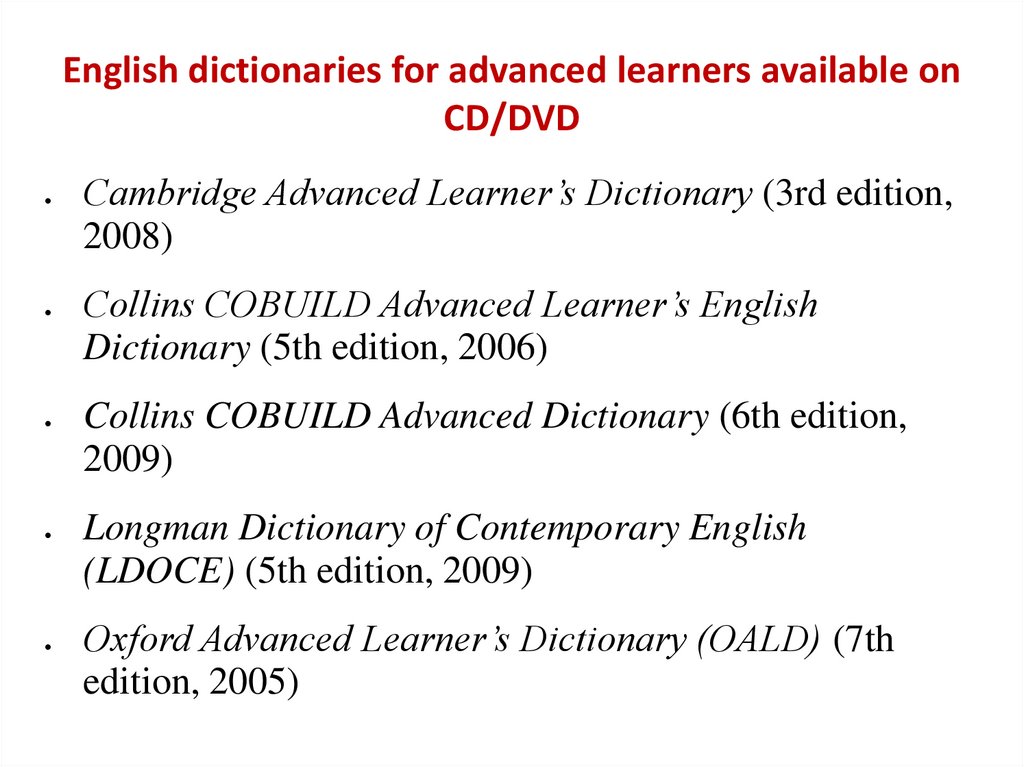
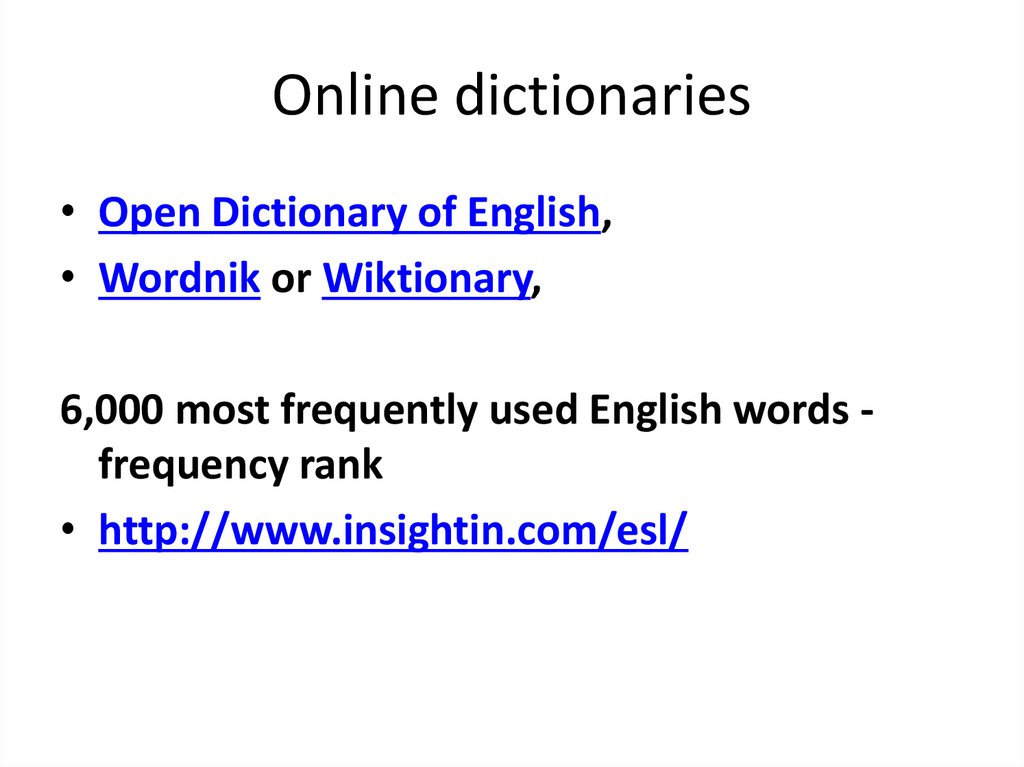

 Английский язык
Английский язык








